Women in Tech
IoT Security: Cybersecurity is no longer ‘one size fits all’
Explosion of data: Data transforming the insurance industry





Women in Tech
IoT Security: Cybersecurity is no longer ‘one size fits all’
Explosion of data: Data transforming the insurance industry




Not just a science project, IBM’s quantum roadmap is focused towards delivery of real-world benefits
road

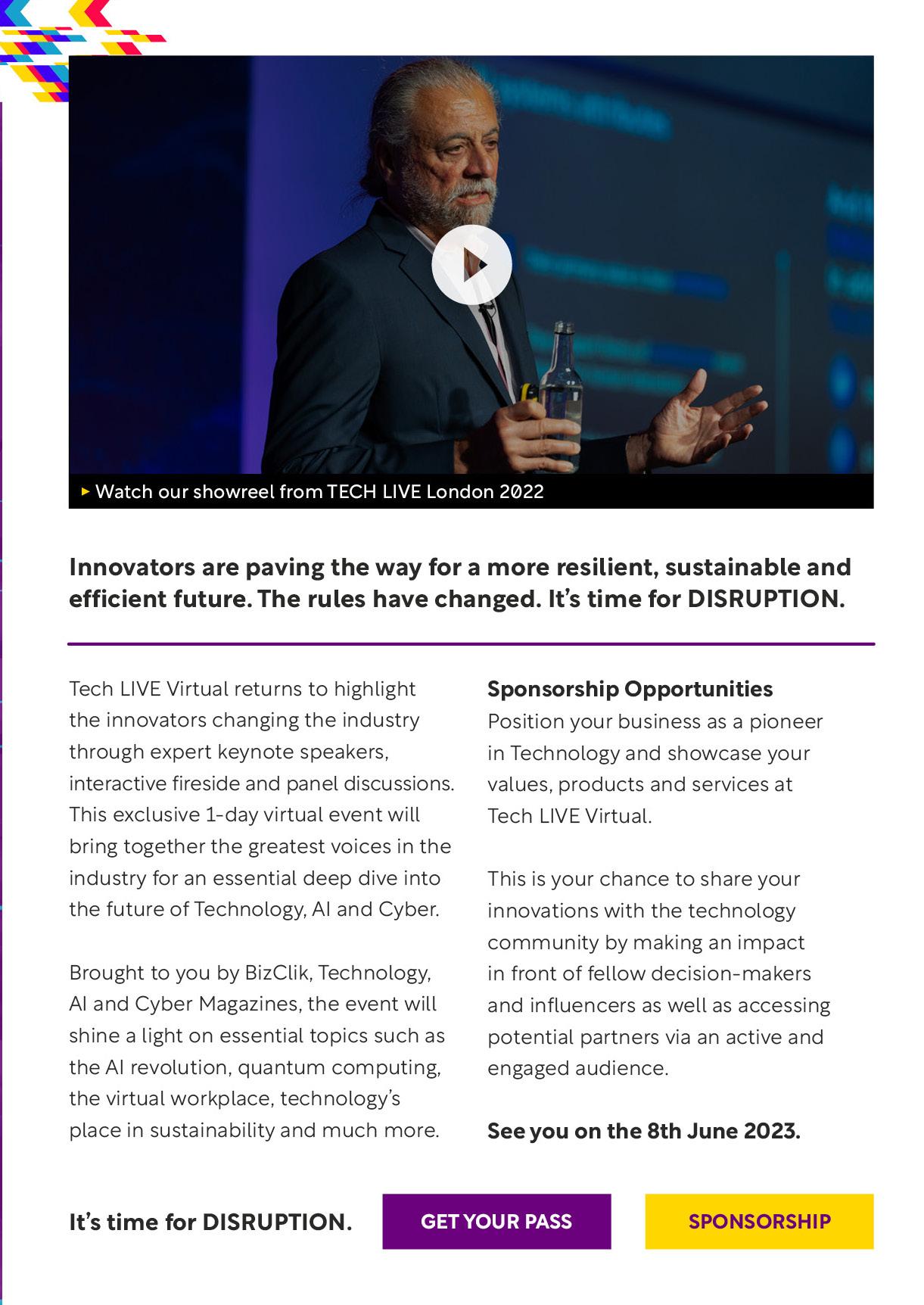












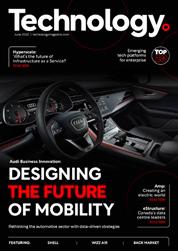




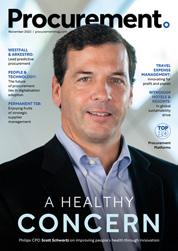








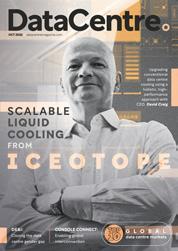
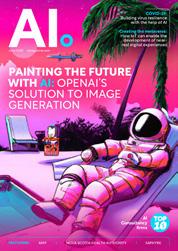



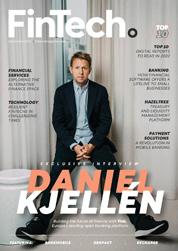

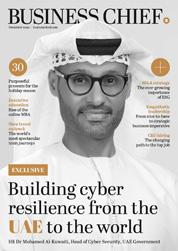

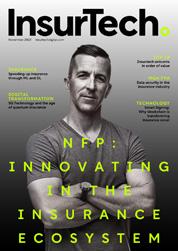




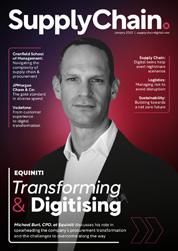




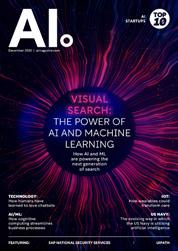

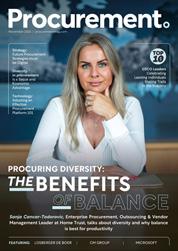






We produce Digital Content for Digital People across 20+ Global Brands, reaching over 15M Executives

Digital Magazines
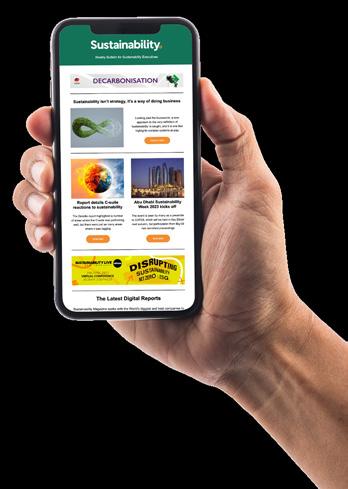







Websites
Newsletters
Industry Data & Demand Generation
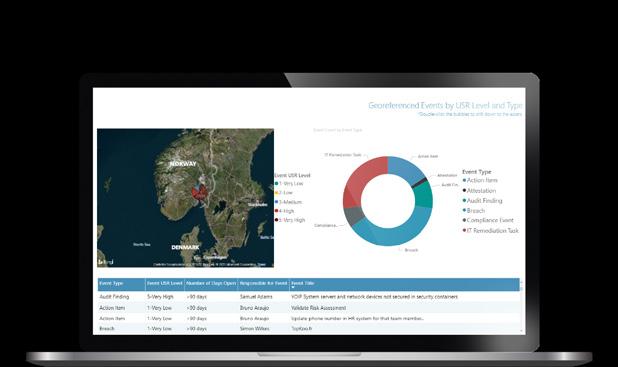
Webinars: Creation & Promotion
White Papers & Research Reports
Lists: Top 10s & Top 100s
Events: Virtual & In-Person


Work with us



With fast-moving developments in the space, what is the state of quantum in 2023, and what does a quantum-enabled future look like?
At IBM’s Quantum Summit in 2021, the company issued a detailed roadmap and declared it would deliver quantum advantage on selected applications in 2023. Quantum advantage – demonstrating that a quantum computer can solve a real-world problem faster than a classical computer – is seen as an important step towards the scaling and eventual wider use of quantum computers.
It was a bold claim greeted with enthusiasm in some quarters, and scepticism in others. But as Richard Hopkins, Distinguished Engineer at IBM, explained to me this month, quantum isn’t a science project: it’s all aimed at delivering real-world benefits for clients.

This year promises to be an exciting one for quantum computing. IBM says it’s on track to deliver its 1,121-qubit Condor processor this year, while researchers at Google demonstrated in 2023 for the first time that using more qubits can lower the error rate of quantum calculations.
Could this be the year of quantum?
MARCUS LAWmarcus.law@bizclikmedia.com

“Quantum isn’t a science project: it’s all aimed at delivering real-world benefits for clients”
016 BIG PICTURE
Front-row seat to the NBA in the Metaverse

018 THE BRIEF
Lenovo announces 2050 netzero sustainability ambitions
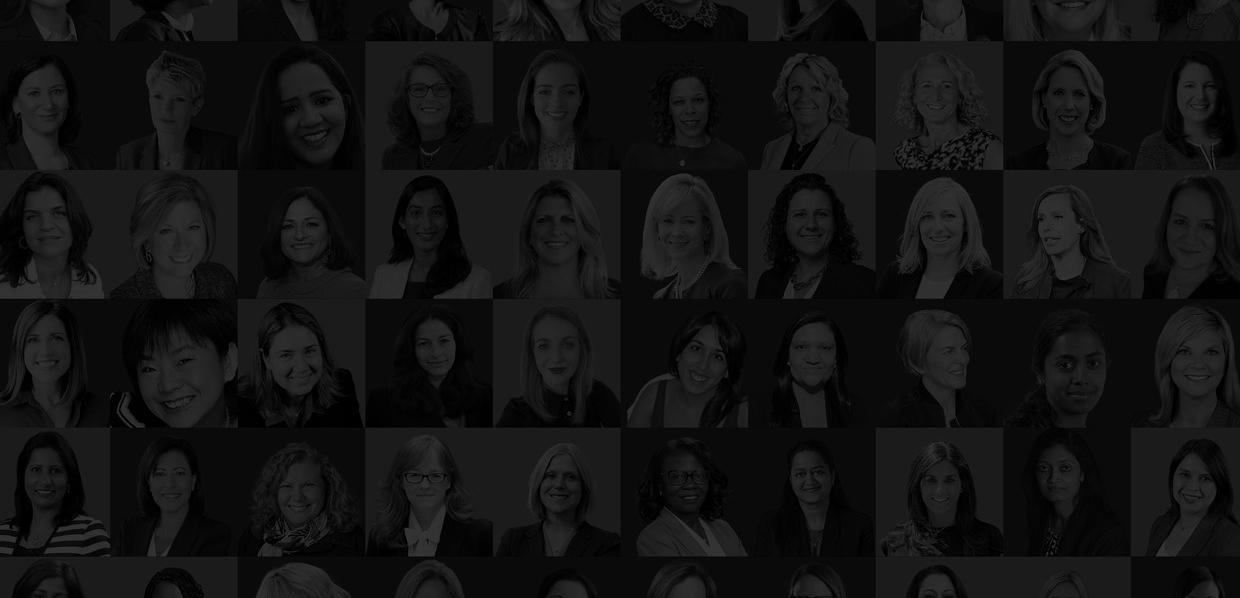
020 TIMELINE
The new oil: how the world became driven by Big Data


022 TRAILBLAZER Tom Jermoluk
026 FIVE MINUTES WITH Martin Porter





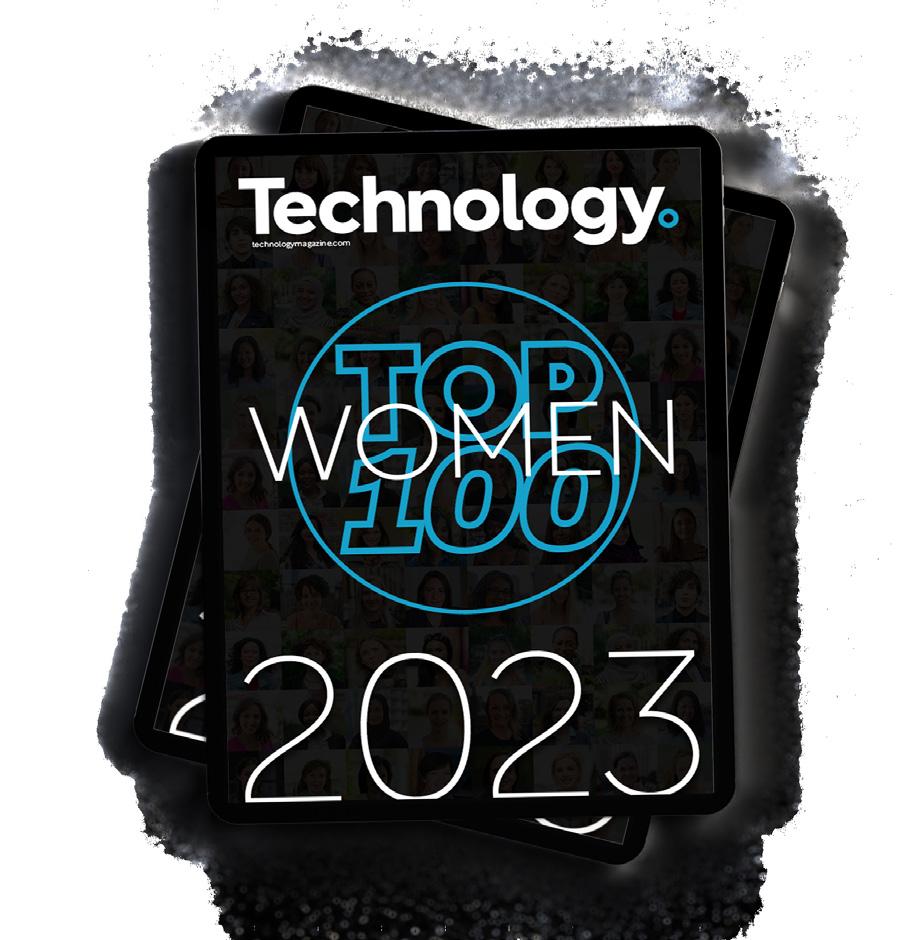

032 CLOUD TRANSFORMATION
Transformation to the Cloud helping airline group soar to its goals

064 SCALA DATA CENTERS
Scaling at scale - bringing hyperscale data centres to LATAM

100 INDARA
Connecting, evolving, and leading the Australian market

128 LIBERTY GLOBAL Transforming the world of entertainment

154 BARNARDO'S
Barnardo’s data and insight journey supports children, young people, and families in the UK

186 EXA INFRASTRUCTURE
Enabling expanding data centre interconnectivity

198 PICK N PAY
How retailer Pick n Pay mastered its migration to the cloud
212 HILLSBOROUGH COUNTY PUBLIC SCHOOLS
Flexible, scalable, and supportive edtech solutions

226 BEST BUY HEALTH
Best Buy Health enables care at home for everyone
240 ELANCO
Securely Scaling Animal Care through Cloud





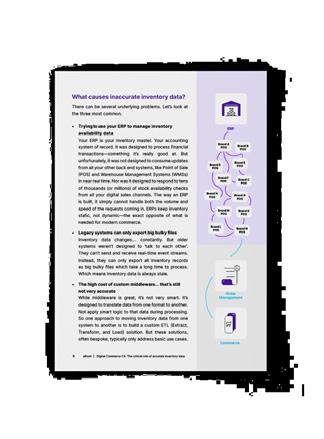
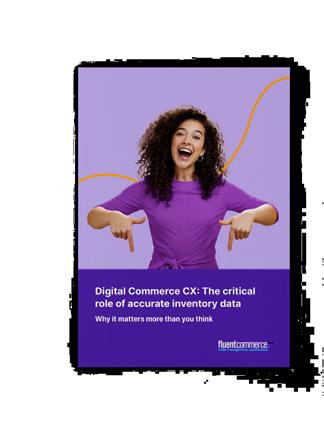

Jamie Cairns, Chief Strategy Officer at Fluent Commerce, on how its order management platform enhances operational efficiency and customer experience.
Fluent Commerce is a global software company focused on distributed order management. Its cloud-native platform, Fluent Order Management, provides accurate and near real-time inventory data visibility, order orchestration, fulfilment optimisation, instore pick and pack, customer service, and reporting to transform fulfilment into a competitive advantage.

As Jamie Cairns, Chief Strategy Officer at Fluent Commerce explains, the process of managing orders begins with inventory data. “Being able to unify a view of inventory and then syndicating that inventory data out across a range of different channels lets you improve the customer experience,” Cairns comments.
That, in turn, has a range of different operational efficiency benefits, reducing costs by reducing split shipments, cancelled orders, and customer service calls.
As Cairns describes, order management represents an opportunity for retailers and B2B organisations to harness inventory data to provide real-world benefits. One of their recent innovations, Fluent Big Inventory, is about unifying in near real-time those inventory sources, enabling all systems to become inventory aware.
“It is not just about enhancing the order fulfilment process, which is typically what has been the domain of an order management system,” Cairns explains. “It’s about making inventory data available to other systems, like search, as well and ultimately being able to personalise search results based on inventory.” With changing customer preferences in recent years,
brands have had to adapt quickly. As Cairns explains, Fluent Order Management not only provides a robust software-as-a-service platform, but at a lower total cost so businesses can move quickly and meet customer expectations efficiently.
During the COVID-19 pandemic when stores were closed, Fluent Order Management enabled businesses to adapt quickly. “Stores still had inventory and there were huge spikes in online demand,” Cairns explains. “Our customers were able to adapt in a matter of a day to completely change their fulfilment workflows.
“Digital agility is essential,” he concludes. “We are not trying to predict what the future is, but to provide a toolset that allows you to adapt as the future evolves.”
Image: instagram.com/brentderanter



Meta has expanded its partnership with the NBA and WNBA as the league’s official VR headset, bringing the excitement of professional basketball in VR to a new level and allowing basketball fans to have a front row seat for more than 50 games. Called XTADIUM, fans can get closer to the action with high-quality video and even stage viewing parties with friends in the Metaverse.

58% of consumer electronic shoppers want to buy gadgets through the metaverse
What’s more, 45% of shoppers purchasing consumer electronics believe that the metaverse represents the future of shopping.
READ MORE
Jaguar Land Rover creates tech hubs for autonomous vehicles
READ MORE
Jaguar Land Rover is expanding its global digital capability by opening three new European tech hubs, creating nearly 100 new engineering jobs and marking the next phase of the company’s digital transformation and global digital recruitment drive. The hubs – situated in Munich, Germany, Bologna, Italy, and Madrid, Spain – will develop autonomous driving systems for JLR’s next-gen modern luxury vehicles.
“Cloud is not just an infrastructure agenda. It is a platform that should be a key pillar in your digital transformation story”
Ankur Rastogi Group Head, IT Application Management, Transition and Cloud Migration, Lufthansa Group
“The caregivers need peace of mind. Caregivers are willing to invest in these technologies to help their parents feel safe”
Jean Olive Chief Technology Officer Best Buy Health
INDUSTRY TRENDS – CYBERCRIME AND DATA BREACHES

• A single data breach on a company cost an average of $9.44mn in the US in 2022
• Cybercrime is a trillion-dollar business and is projected to cost the world $10.5tn by 2025
• Over 75% of cyberattacks begin with an email
• Since 2016, $43bn has been stolen through business email compromise
Lenovo has announced that it will be working towards net-zero greenhouse gas emissions by 2050, aligning with the Science Based Targets initiative (SBTi).
This makes it the first PC and smartphone maker – and one of only 139 companies in the world – with a net-zero target validated by SBTi.
Lenovo commits to reach net-zero GHG emissions across the value chain by FY2049/2050, and to reduce absolute scope 1 and scope 2 GHG emissions 50% by FY2029/2030 from a FY2018/2019 base year.
“Success in achieving net-zero depends on a transparent, science-based, and collaborative framework that will keep organisations accountable for the long run. SBTi has created that framework and will empower companies to expedite emissions reduction,” commented Carolina Milanesi, Founder of The Heart of Tech, an ESGfocused consultancy.
1958
Business intelligence





Experts and analysts have asserted that data – not oil – has become the world’s most valuable resource. Technology Magazine looks at how the world became driven by Big Data
First attributed to Mr. Richard Miller Devens in 1865, IBM researcher Hans Peter Luhn defines Business Intelligence almost a century later as “the ability to apprehend the interrelationships of presented facts in such a way as to guide action towards a desired goal”.


Fritz Pfleumer, a German-Austrian engineer, invents a method of storing information magnetically on tape. The principles he develops are still in use today, with the vast majority of digital data being stored magnetically on computer hard disks.




The World Economic Forums notes this as possibly the first use of the term Big Data in the way it is used today. International best-selling author Erik Larson pens an article for Harper's Magazine, speculating on the origin of the junk mail he receives. He writes: “The keepers of big data say they are doing it for the consumer’s benefit. But data has a way of being used for purposes other than originally intended.”
The US government builds the first data centre with the intention of storing millions of fingerprint sets and tax returns. The initiative – capable of holding 742 million tax returns and 175 million sets of fingerprints – is generally considered the first effort at large-scale data storage.







The publication Wired brings the concept of Big Data to the masses with the article, The End of Theory: The Data Deluge Makes the Scientific Model Obsolete. The world’s servers process 9.57ZB (9.57 trillion GB of information – equivalent to 12GB of information per person, per day), according to the How Much Information? 2010 report.
IDC’s Future of Intelligence predictions for 2023 and beyond finds 90% of the world’s most successful companies will use realtime intelligence and eventstreaming technologies by 2025. The firm also predicts that, by 2024, organisations with greater enterprise intelligence will have 5x institutional reaction time.
Investor and inventor at leading companies like Silicon Graphics, Netscape, and WebMD, Tom Jermoluk is on a mission with his longtime business partner, co-founder Jim Clark, to phase out passwords
Tom Jermoluk (TJ) is a serial Silicon Valley investor and inventor leading companies like Silicon Graphics, Netscape, and WebMD. It is his mission, alongside his long-time business partner and fellow Silicon Valley Giant, Jim Clark, to eliminate passwords.
How did your collaboration with Jim Clark begin, and why does it work so well?
My partnership with Jim Clark goes back a long way – 38 years in fact. Our partnership began with 3D graphics and visual effects pioneer Silicon Graphics in the early 1980s, continuing when Jim Clark and I helped ignite the commercial internet with Netscape, the first commercial internet browser and the high-speed cable Internet service provider @Home Networks. It is fair to say we have been together through some significant technological breakthroughs.
Perhaps surprisingly, the original idea and ‘light bulb’ moment for
Beyond Identity came about when we were developing technology for a high-end automation company and were met with the challenge of using passwords to turn on a lightbulb. It got us thinking about how the limitations of passwords go far beyond just lighting.
Jim and I collaborated on this idea of getting rid of passwords by revisiting inherent identity weaknesses that existed from the early days of the web, which drove us to go back to the core foundation to ‘reboot’ user authentication by extending the cryptography used in Secure Socket Layer (SSL), which was invented at Netscape. We knew this opportunity was too big and disruptive to miss. The resulting effort – Beyond Identity – introduces the elegantly simple concept of extending the asymmetric cryptography used in TLS to bind a user with their device. The solution leverages existing secure communications infrastructure and crypto standards like FIDO passkeys to extend the trust boundary beyond server-to-server communications to include users and their devices. By doing so, it completely removes the need for ‘shared secret’ passwordbased authentication approaches, and dependence on friction-laden compensating controls.
Jim and I have stayed close and continued to invest together over the past 30 years. In a nutshell, we work well together because our skills complement each other, and we have huge respect for one another
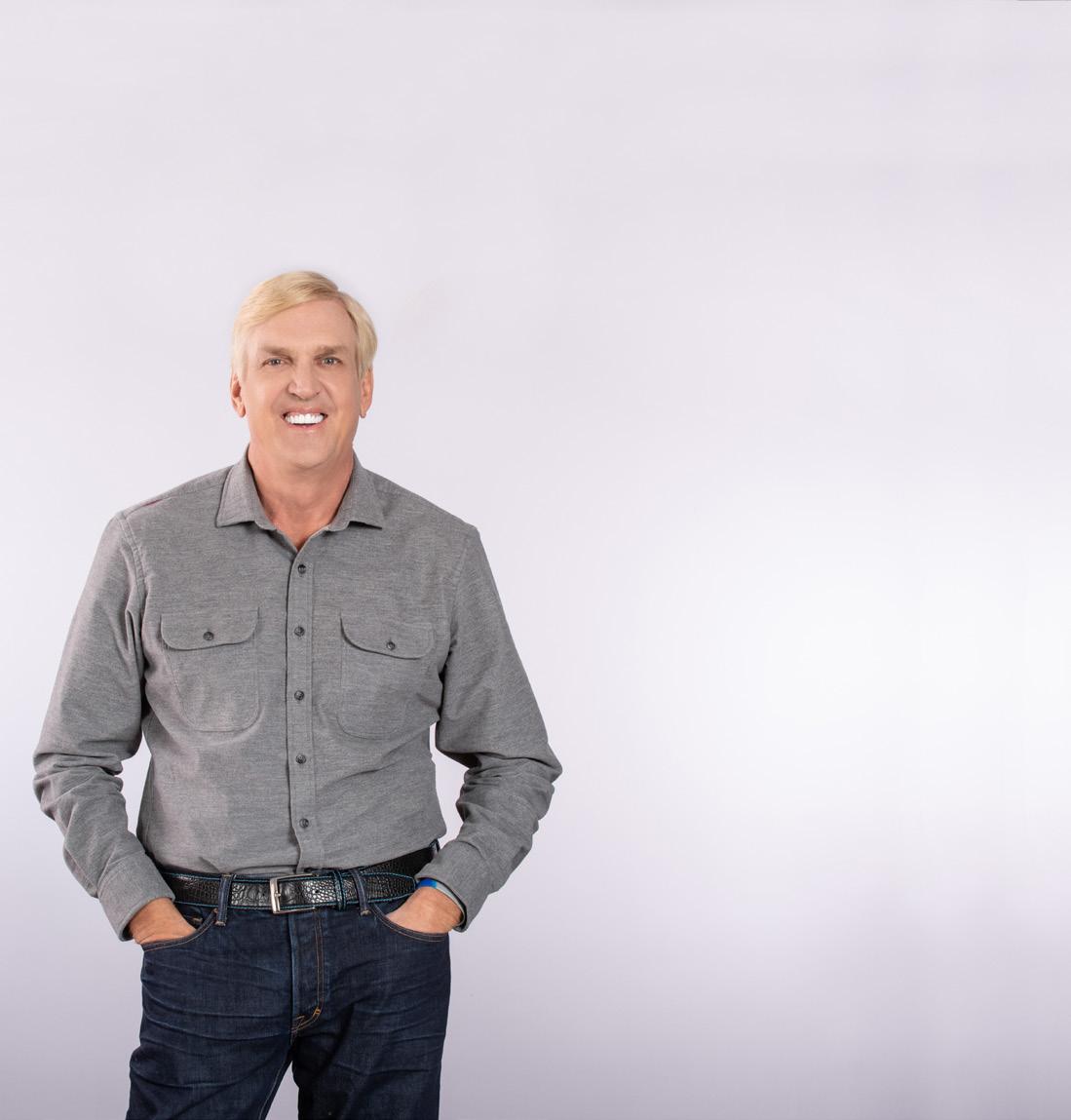


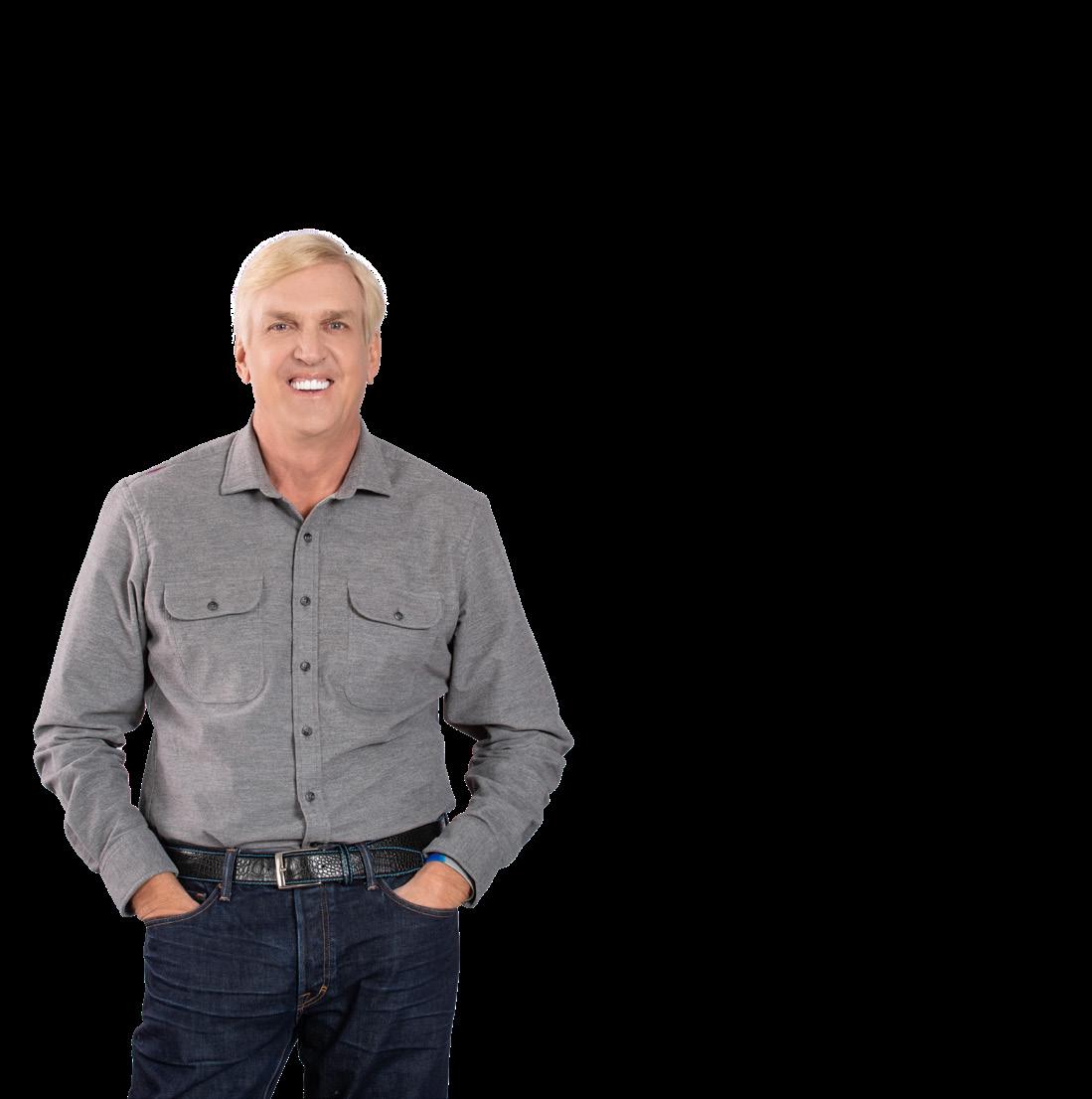
“Perhaps surprisingly, the original idea and ‘light bulb’ moment for Beyond Identity came about when we were developing technology for a high-end automation company”
Tom "TJ" Jermoluk, CEO of Beyond Identity, on how companies can now go passwordless for free


on what we bring to the table. Broadly speaking, Jim is the innovator and I’m the technology guy with the operational expertise that makes it happen, but I would say the partnership and collaboration are key.
Today, we are 100% driven in our strong belief that becoming passwordless is the next big thing for cyber and it should be top of the list for enterprises large and small everywhere. Given our past success and ability to collaborate to bring disruptive ideas to market, we were both excited to go forward and tackle this one together.
Why is passwordless the next big thing in cybersecurity?
Passwords are the root of all evil, the cause of all our cybersecurity problems and threats today. Trust in corporate networks has never been more important and passwordless authentication is a giant step forward for the industry. The password vulnerability has led to a nearly incalculable number of successful data breaches. Stolen and reused credentials are the main source of ransomware and account takeover today. Eliminating passwords removes
prominent attack vectors reusing stolen credentials to gain access and multiple other password-based attacks. MFA was supposed to solve the password issue, but it’s clear that the MFA in-use today is a band aid that isn’t working. By eliminating passwords and replacing weak MFA with strong, easy-to-deploy, phishing-resistant authentication methods, CISOs and team leaders can shut the door on their largest vulnerability and build the most robust Zero Trust initiatives.

Industry leaders like Snowflake, Unqork, and Roblox are relying on Beyond Identity to solve their access security challenges for their customers, employees, contractors and developers to advance their journey toward Zero Trust security.
How are you building a modern approach to MFA at Beyond Identity?
A passwordless identity management solution, like Beyond Identity, replaces passwords with asymmetric cryptography that employs public/ private key pairs and creates a FIDObased phishing-resistant authentication process. Users are authenticated by proving they possess the enrolled device and that it is bound to the user’s identity. Establishing high trust in the user and the device, plus the ability to ensure devices meet appropriate security controls before and after initial access, is a cornerstone of a Zero Trust model – especially for modern network architectures where the identity has become the new perimeter.
Even if you did all the other pieces of Zero Trust perfectly, unless you establish user identity and trust in the device, the effort will fail.
“It’s clear that the MFA in-use today is a band aid that isn’t working”
Founded in 1969 as a Silicon Valley start-up, the AMD journey began with just a few dozen employees.
Now, from those modest beginnings, AMD has grown into a global company setting the standard for modern computing, with billions of users and numerous industry-firsts achieved along the way.
In February 2022, AMD acquired Xilinx in a deal that was the largest in the history of semiconductor business.
Today, the expertise of both companies has firmly established AMD as one of the industry’s high-performance, adaptive computing leaders.
AMD’s technologies are powering the products and services that help solve the world’s most important challenges.
We spoke to Martin Porter, Corporate Vice President of Networking and Storage Software Solutions, to learn more about his work at the forefront of the tech
industry, and get his insights into the advancements that AMD is making.
Q. TELL US ABOUT YOURSELF AND WHAT LED YOU TO YOUR CURRENT ROLE AT AMD?


» I studied Mathematics for my undergraduate degree and was initially interested in pursuing a PhD in the same field.
However, I instead decided to complete an MSc in Music Technology, which involves studying a combination of electronics,
Martin Porter shares the highlights of his 25-year-long software career and outlines the rapid growth pace of the tech giant AMD
“Our technologies power the products and services our customers build to advance the future of the data centre, embedded gaming, and PC markets”

software, and music. I especially enjoyed the software side, and this led to my first role after graduating, where I developed software for a professional audio company.
After about five years, I moved to a networking silicon company and have remained in this field for the last 25 years.

NASA’s Mars rover Perseverance – the most advanced machine to touch down on the Red Planet – is powered by AMD’s FPGA for image processing and navigation
Following AMD’s acquisition of Xilinx in February 2022, I am now the Corporate Vice President of Networking and Storage Software at AMD. My role mainly entails managing software groups focused on networking adapters within the AMD Adaptive and Embedded Computing Group (AECG). It is an exciting role, in which I drive all the software behind the adapters – whether it’s embedded or networking stacks –along with the storage stacks that come with those product ranges.
» Our mission is to help solve the world’s most important challenges through high-performance and adaptive computing. Our technologies power the products and services our customers build to advance the future of the data centre, embedded gaming, and PC markets.
AMD’s AECG division – which includes FPGAs and Adaptive SoCs as well as network adapters and accelerator cards – serves a broad spectrum of markets with specialist silicon solutions. From powering 5G network cores in wireless communications to supporting advanced driver-assistance systems in the automotive sector, all the way to Mars.
In fact, NASA’s Mars rover Perseverance, which is the most advanced machine to touch down on the Red Planet, is powered by AMD’s FPGA for image processing and navigation.
“It is very humbling to know that a good majority of the world’s financial trading is now processed on technology that we've developed”
» As a leader, you must understand products and the technology you’re working on and the company’s business objectives. This helps provide clear direction and give correct feedback to the teams you manage.
I know our engineers are the true experts, so I give clear directions to the team on what the customer is expecting, what we need to deliver, and the timeline. I listen to the feedback from the team and support them in doing their job to execute our business plans.
Sometimes, that involves introducing new processes, obtaining new tools, or providing insight from other groups and typically removing roadblocks to help them to be as productive as possible.

» ‘Your aim should not be to develop software that passes tests; your aim should be to develop software that never fails tests’ – someone once told me this, and it has stuck with me throughout my career.
To me, everything comes down to the quality of the software you’re delivering. For example, in the data centre market, bugs are detrimental; they have a significant impact, and it is crucial to consider how you will verify the quality of your software from the very start of every project.
So, I would say to younger Martin: it’s not just about developing software but how you build quality, reliable software – a rare skill in the industry.



Executives from Appian, AWS, and Xebia share their collaborative efforts and excitement about their partnership in low-code, cloud, and sustainability.
Technology is instrumental to achieving next-level capabilities across industries. But organizations that want to operate sustainably must choose technology that lets them adhere to strong environmental, social, and governance principles.


Appian Corporation, a process automation leader, is a critical piece of the digital transformation and sustainability puzzle. The enterprise-grade Appian Low-Code Platform is built to simplify today’s complex business processes, with process mining, workflow, and automation capabilities.
“By quickly building apps that streamline and automate workflows, organizations are using Appian to make their processes for monitoring and reporting on ESG initiatives faster, simpler, and more effective,” says Meryl Gibbs, Emerging Industries Leader at Appian.
“Both AWS and Appcino are amazing partners of ours,” says Michael Heffner, VP Solutions and Industry Go To Market at Appian. “We have an extremely long legacy engagement with AWS as our trusted, go-to-market partner and Appcino builds “meaningful, business-focused applications on the Appian platform and is amazing in all things ESG.”
As an AWS leader enabling sustainability solutions built on the cloud, Mary Wilson, Global Sustainability Lead at AWS, talks about the partnership with Appian.
“Our objective is to help our customers achieve sustainability goals across their business operations,” says Wilson. “[This means] looking at data availability, meaning access to more data, and enabling actionable insights. “Lowcode, cloud-enabled, technologies will allow organizations to build fast, learn fast, iterate, and continue to improve these insights to drive their sustainability outcomes.”
Tarun Khatri, Co-Founder & Executive Director of Appcino (product part of Xebia), explains just how critical ESG is in the face of digital transformation. “The investment community now considers ESG reporting as a major factor for measuring performance,” says Khatri The collaboration will continually uncover new insights and provides customers the opportunity to accelerate their ESG goals with speed and security.
 WRITTEN BY: MARCUS LAW
PRODUCED BY: LEWIS VAUGHAN
WRITTEN BY: MARCUS LAW
PRODUCED BY: LEWIS VAUGHAN

Customers are always the centre of attention at the Lufthansa Group. The aviation company aims at providing its passengers with perfect service and making flying in all its facets a sustainably positive experience. Against this background, the goal is to assess the company’s offers and products along the entire travel chain on a continuous basis with the aim of optimising them.
Customer orientation and a focus on quality are the Lufthansa Group’s strategic cornerstones. Regular surveys and a continuous dialogue with passengers help the group learn as much as possible about customer needs and to include them in the development of innovative offers.
Significant investments in a modern and efficient fleet, more comfort on board, numerous product innovations, and digital offers ensure that flying is becoming more and more attractive and sustainable for the Lufthansa Group’s customers with the ambitious climate target of being carbonneutral by 2050.

LUFTHANSA GROUP’S DIGITAL TRANSFORMATION IS ENABLING THE GROUP TO PROVIDE A SEAMLESS DIGITAL EXPERIENCE FOR CUSTOMERS AND ACHIEVE ITS SUSTAINABILITY GOALS

As the world increasingly leverages the power of modern technologies, Ankur Rastogi, Group Head, IT Application Management, Transition and Cloud Migration at Lufthansa Group, explains, the organisation’s aim is to be the most digital and the most innovative aviation group in the world.
“Digital transformation is embedded in our business strategy,” he comments. “And our cloud strategy forms a key pillar in our digital strategy. The philosophy behind our cloud strategy is cloud-first, but not cloud-only.

“Cloud is not just an infrastructure agenda. It is a platform that should be a key pillar in your digital transformation story”
ANKUR RASTOGI GROUP HEAD – IT APPLICATION MANAGEMENT, TRANSITION & CLOUD MIGRATION; SENIOR DIRECTOR, LUFTHANSA GROUP
“In simple terms, it means that any new solution that we buy or build has to be cloud native. We are not going to invest in products that are designed for legacy environments.”
As part of his responsibilities, Rastogi heads Lufthansa’s group-wide central cloud team, which is responsible for creating, maintaining, and updating the organisation’s cloud strategy. Lufthansa Group’s cloud transformation was not just about migrating one application from an on-prem data centre to the cloud, he explains.
TITLE: GROUP HEAD – IT APPLICATION MANAGEMENT, TRANSITION & CLOUD MIGRATION; SENIOR DIRECTOR
COMPANY: LUFTHANSA GROUP

Ankur Rastogi completed his Engineering in electronics and communication and MBA with specialisation in Information Management. He comes with 20+ years of strong international and multi-cultural experience in IT and management consulting across different domains and regions (Europe, India, and Africa). He has handled a variety of leadership roles across different disciplines in global organisations like Lufthansa, Oracle, HP Enterprises, and QS Advisory. In his current role at Lufthansa Group, he is the Group-wide process owner for IT Transition and Operations responsible for processes, platforms, partners and practices around IT test and quality management, and application management. As part of Lufthansa’s digital transformation initiatives, he is heading the Central Cloud team, which is responsible for cloud adoption and migration of the entire application portfolio to cloud across the Group.
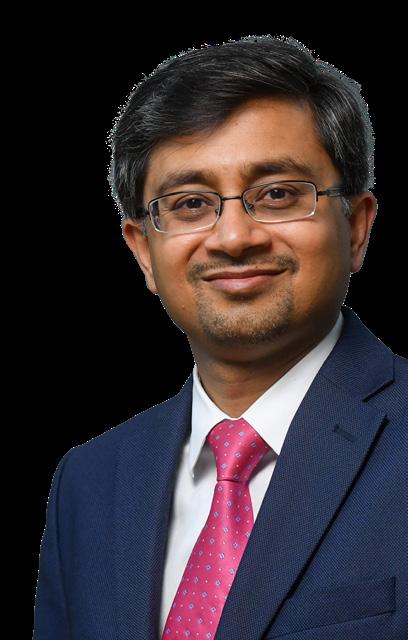
Relentlessly transforming business to move the world forward.
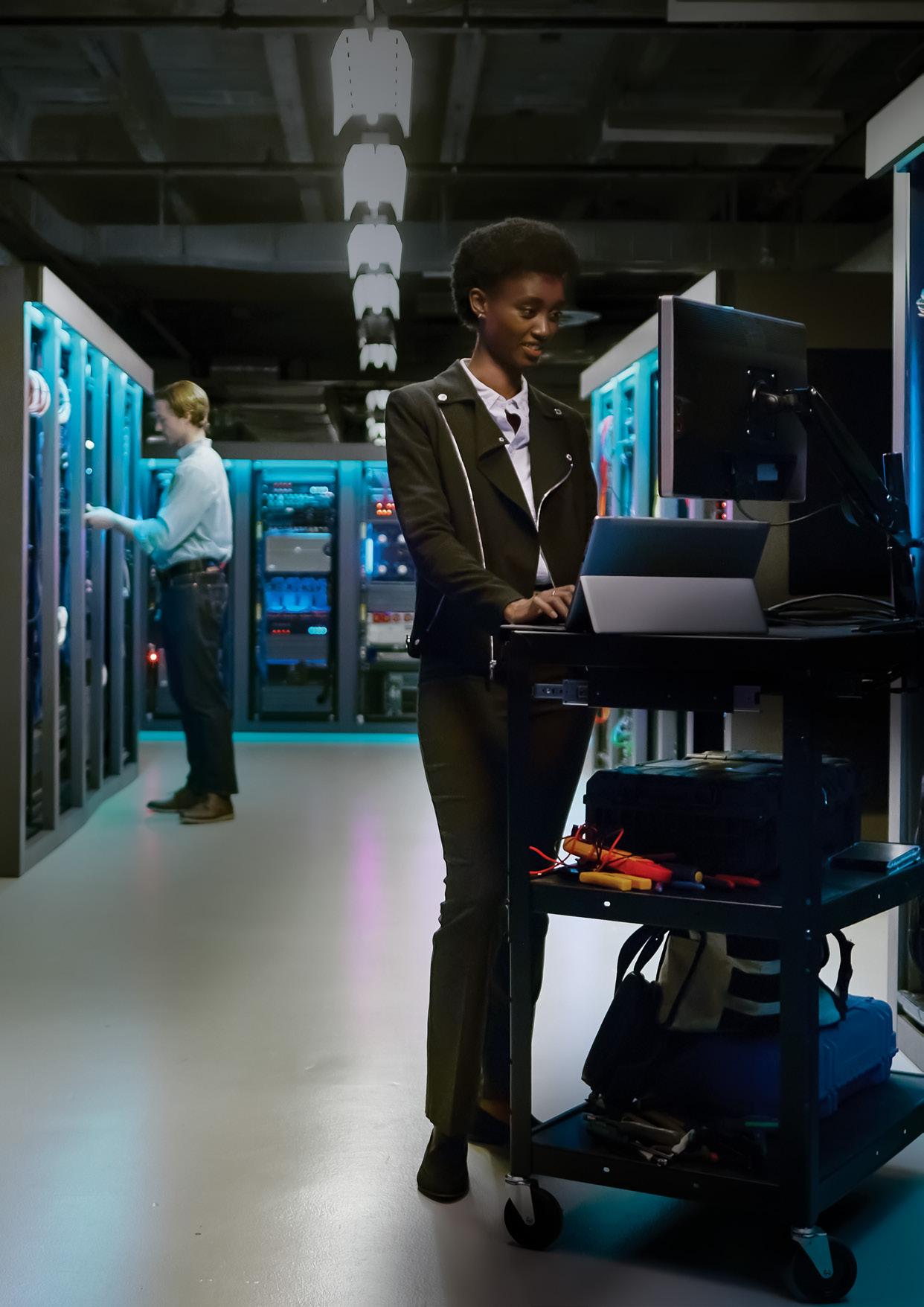
Kyndryl’s Walter Huber is the Vice President & Senior Partner for the Lufthansa account, which means, within Kyndryl, he’s Mr Lufthansa 24/7
Walter Huber is the Vice President and Kyndryl’s Senior Partner for the Lufthansa account, which means he is also known as ‘Mr Lufthansa’ within Kyndryl. Founded in 2021, Kyndryl was once a division of the IBM Corporation, called Global Technology Services.
“We design, build, manage and modernise mission critical infrastructures that keeps the world economy going,” Huber explains.
Kyndryl supports Lufthansa as it shifts to the cloud.
As a trusted partner, Kyndryl manages the foundations of Lufthansa Group cloud system. Having successfully transitioned workloads into the cloud for Lufthansa, Kyndryl is doing more than simply migrating workloads and then running it. “Focusing on the

customer, we can advise which cloud environment is best for which workload – and then accompany the transformation journey.”
The Kyndryl story is about growth and creating value for their customers.

“We are working closely with Lufthansa and its business units to understand what is driving them and understand what they must change going forward to be the most digital and innovative airline group. Putting the customer in the centre of all of that is extremely critical for us, and it’s one of the core values of Kyndryl.”
Another value is to maintain customer focus. Kyndryl does this by aligning itself to the way
the customer is organised and how that customer makes its business decisions.
After an almost 10-year partnership with Lufthansa, Kyndryl sees an ongoing evolution for their continued work together.
“We will continue to drive that relationship with our customer,” he says. “We will continue to work with Lufthansa to take advantage of the capabilities we can offer, using the Kyndryl Vital approach that allows us to find new solutions and the Kyndryl Bridge that allows us to plug in new technologies and new systems into a network managed by us.”

ANKURLUFTHANSA GROUP
“Our cloud strategy is based on the philosophy of cloud-first, but not cloud-only”
“We are migrating thousands of applications residing in multiple data centres,” Rastogi adds. “In a cloud transformation journey, there are multiple stakeholders: application manager, infrastructure team, enterprise architecture team, security team, operations team, licence management and the procurement team.”
“Our central cloud team is bringing all of these stakeholders together towards a common goal, ensuring that they are all working towards the same target objectives and that they're following the same guidelines.”
For managing cloud adoption and transformation at Lufthansa, the central cloud team had to establish a number of guiding principles across aspects related to technical, time and financial considerations.

“The first factor we considered was how we wanted to use the cloud,” Rastogi says. “We would like to use the cloud the way it's designed. It should be possible to use the cloud on a self-service, on-demand and payper-use, or metered, basis.”
“We also want to use the cloud as natively as possible, meaning our implementation preference is Software-as-a-Service, followed by Platform-as-a-Service, and only in the last case, Infrastructureas-a-Service, or lift and shift migration approach. The business continuity and security requirements are directly considered in the design phase.”
As Rastogi explains, there are also guidelines related to time, to fit in with application life cycles and contractual timelines, as well as financial guidelines. “You could spend a lot of effort redesigning or modernising your complete application,” he says, “but at the same time, there has to be a business case behind it. So time versus cost is always a risk-reward that you have to keep in mind.”
There are many aspects that organisations should keep in mind that could make or break a cloud journey; the first of which is having the right strategy. “There are modern data centres that can meet many of your requirements, but there has to be a good reason why you're migrating to the cloud. Cloud can be a key pillar behind your digital transformation story,” comments Rastogi.
109.5K+
The Lufthansa Group has approximately 109,509 employees (31st Dec 2022)
“The second aspect is setting up the right structure in place,” he adds. “For instance, if there is a need for a central cloud team, generally referred to in the industry as the cloud centre of excellence. Similarly, one needs to decide if the journey is performed on a centralised basis or on a decentralised basis.”
“Third is the governance part, which includes technical, security, and process

LTIMindtree is a new kind of technology consulting firm. We help businesses transform – from core to experience – to thrive in the marketplace of the future. With a unique blend of the engineering DNA with the experience DNA, LTIMindtree helps businesses get to the future, faster.
www.ltimindtree.com




Since beginning its journey with Lufthansa Group in 2017, technology consulting firm LTIMindtree has positioned itself as one of the group’s key partners
A new kind of technology consulting firm, LTIMindtree helps businesses transform – from core to experience – to thrive in the marketplace of the future.
Headquartered in Mumbai, India, LTIMindtree has nearly 90,000 IT professionals and works for about 700 clients worldwide.

Today, LTIMindtree is working with all subsidiaries of the Lufthansa Group. But, as Klaus Seifert, Regional Vice President and Head of Germany, explains, the journey started in 2017 with a highly successful data and analytics project.
“The project was about developing a predictive analytics system to properly forecast the demand and optimise the seat pricing for the airline,” Seifert comments.
From there the relationship between Lufthansa Group and LTIMindtree has evolved, with the consulting firm helping Lufthansa Cargo on its cloud journey and later on taking over cloud operations for the AirPlus and Sky Chefs part of the group.


As with countless businesses affected by the COVID-19 pandemic, LTIMindtree was also able to help Lufthansa Group come up with new solutions to scale the business.

“One part of Lufthansa was running extremely well, the cargo side,” Seifert explains. “But the travel side went down. We helped Lufthansa to downscale on one side and become more agile on the other side, where new solutions were needed to cope with demand. That really brought us together in a partnership.”
“At LTIMindtree, we have a long history in travel, transportation and hospitality,” concludes Seifert. “At the same time, our focus on the client experience, customer experience, data analytics, and the cloud journeys are positioning us well as a future strategic partner to advise Lufthansa for their strategies in the cloud, and also for their development of migration strategies.”
€32.77mn

guidelines, as well as a lot of things related to the set up and running of a cloud community within the organisation.”
However, most importantly, Rastogi says, is the concept of change management in the organisation’s journey to the cloud.
“Many people treat cloud as purely a data centre replacement, and hence they try to incorporate the same processes and controls from the data centre world into the cloud,” he says. “But cloud adoption is a paradigm shift. It's not just the replacement of an infrastructure platform.”
As Rastogi explains, business-oriented solutions can be directly built in the cloud. “The cloud can be used as a self-service platform, meaning people can directly go into the cloud

Lufthansa’s cloud journey is helping group soar to its goals

Microsoft supports this transformational journey providing leading Cloud platforms and solutions to Lufthansa empowering their employees and business units to achieve more like the One Data Platform project that enables Lufthansa to assist passengers with personalized services before, during, and after their flight.


portal and provision not just an infrastructure environment but their complete end-to-end solution,” he says. “So many processes that were set, many controls that were in place can get obsolete or need some sort of adaptation. And this is what I call change management. It requires a mindset change.”

As Rastogi lays out, Lufthansa's core mission is to connect people, cultures, and economies in a sustainable way. The organisation has made substantial investments in digital transformation projects, with the end goal to offer the most seamless and the bestconnected travel experiences for customers.
“We start by offering an enhanced user experience, which is personalised,” he comments. “It also means that we can offer a homogeneous experience to passengers, no matter which of our airlines they fly or which of our touchpoints they use to interact with us.”
“We have introduced digital self-service solutions for bookings, rebooking refunds and claim management, handling irregular situations and so on,” he adds. “In the long run, we are trying to create an overall marketplace where personalised solutions can be offered to customers based on their individual needs.”
ANKUR RASTOGI GROUP HEAD – IT APPLICATION MANAGEMENT, TRANSITION &CLOUD MIGRATION; SENIOR DIRECTOR, LUFTHANSA GROUP
“The cloud allows us to use resources more efficiently and in a more optimised manner”
Lufthansa Group’s digital journey is also having a significant contribution to meeting the organisation’s sustainability goals. The group is one of the leading players and is setting the agenda when it comes to sustainability, with the target to be net carbon neutral by 2050.
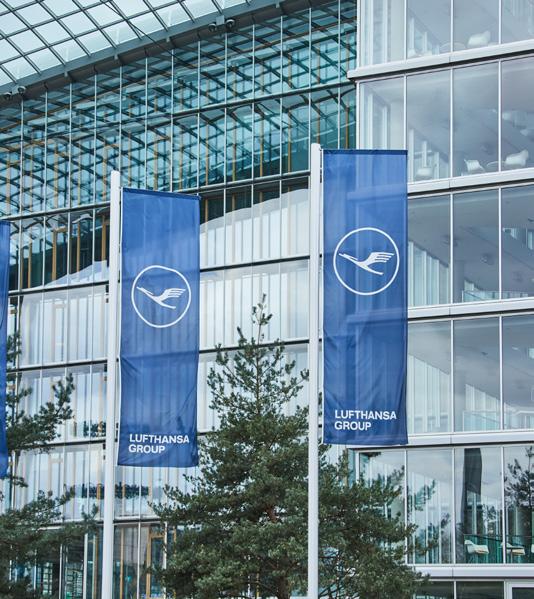

“We are constantly renewing our fleet with more modern, efficient aircraft, which are also more fuel efficient, and more energy efficient,” Rastogi comments. “We are continuously investing in research and implementation of sustainable aviation fuels. We have established the Cleantech Hub, a platform that is driving more than 80 projects in this space. And to our own customers, we are continuously offering more and more sustainable products on our digital platforms.”
“Digital initiatives contribute a lot to sustainability. If I take the cloud as an example, the cloud allows us to use resources more efficiently and in a more optimised manner.”
As Rastogi explains, Lufthansa Group works hand-in-hand with cloud providers who also have very ambitious goals in regard to sustainability, with more fuel-efficient and more energy-efficient data centres.
“The best part I like about cloud is it offers a lot of transparency in various sustainability dimensions, especially in terms of what kind of services you consume and how it directly translates into carbon footprints,” he comments. “So that generates a lot of interesting and useful information.”

“Don’t adopt cloud just because everyone is doing so. Like for any transformation programme, there should be a reason and it is important to answer the question ‘why’ seriously”



 ANKUR RASTOGI GROUP HEAD – IT APPLICATION MANAGEMENT, TRANSITION & CLOUD MIGRATION; SENIOR DIRECTOR, LUFTHANSA GROUP
ANKUR RASTOGI GROUP HEAD – IT APPLICATION MANAGEMENT, TRANSITION & CLOUD MIGRATION; SENIOR DIRECTOR, LUFTHANSA GROUP
This information can further be used to build decision-making algorithms helping Lufthansa Group optimise various parameters within the business domains, from aircraft turnaround time, network scheduling and planning to passenger management. “In my opinion,” Rastogi adds, “every time you make an improvement in efficiency, you're indirectly contributing to sustainability goals.”
Partners are critical for successful outcomes, as Rastogi explains. For every task, a thorough analysis is undertaken to decide if it should be done in-house or should be outsourced. A strategic decision was to employ a multivendor approach.
“In each partner category whether it is cloud, managed service, migration or operations partners — we did a proper due diligence and followed a thorough selection process,” Rastogi says.
For Lufthansa Group, a decision was made to go with a multi-cloud and a hybrid cloud approach. “In our cloud ecosystem, we work quite closely with Microsoft, which is one of our primary landing zones,” Rastogi comments. “Many applications are already in or are in the process of being migrated to Azure. When it comes to managed services, we work with CGI and Kyndryl who are managing the foundations of our cloud ecosystem,” Rastogi adds. “For cloud migration and application operations and management, we work very closely with CGI and Mindtree.”

“Cloud adoption is a paradigm shift. Business-oriented solutions can be directly built in the cloud”
Talk of risk management or security or compliance might initially seem daunting in the cloud, but as Rastogi explains, many aspects that might apply to any IT project also apply to the cloud.
“Cloud providers themselves spend a lot in avoidance of any vulnerabilities,” he comments. “However the overall end-to-end
risk management is a shared responsibility. We need to set up our own organisations and controls over and above the measures provided by the cloud providers.”
As Rastogi explains, measures that would be implemented on a typical IT lifecycle apply to the cloud as well, for instance generating awareness, building the right checks and balances, introducing policies

“Structure the journey to cloud and the organisational setup properly. Hire the right skills and choose the right partners”
ANKUR RASTOGI GROUP HEAD – IT APPLICATION MANAGEMENT, TRANSITION & CLOUD MIGRATION; SENIOR DIRECTOR, LUFTHANSA GROUP
like multifactor authentication, password and encryption policies, configuring and securing infrastructure and networks by implementing the right kind of architecture, firewalls, network security groups and load balancers.
“Another interesting aspect with cloud is the evergreen approach,” he comments. “Cloud does not support legacy technologies or older versions of
operating systems and databases. So the cloud is forcing us to continuously upgrade our applications to the latest versions and constantly patch them.”
As Rastogi describes, the future at Lufthansa Group will see continued heavy investment into digital transformation projects, balancing the objectives of innovation transformation and operational stability.

“Through digital transformation projects, we are trying to improve our customer satisfaction, and make their overall travel experience simpler and as individualistic as possible. We are trying to offer a seamless and connected experience.”
“We are building up a marketplace environment with different ancillaries and different products, which are personalised,” Rastogi adds. “These will leverage the data and insights that we capture and offer solutions to our customers that fulfil their needs.”
At the same time, along with customerfacing projects, the group is also investing in a number of projects internally, such as solutions to improve employee collaboration and employee experiences.
“We are constantly modernising our application portfolio and our infrastructure portfolio,” Rastogi concludes. “We have projects that are focused on improving our cyber-defence capabilities. In all of these projects, whether in the digital area, innovation area, or modernisation of our application stack, the cloud continues to be a key pillar.”

We live in an ever-increasingly data-dominated world. How insurance organisations handle that avalanche of information is critical to success
 WRITTEN BY: MARCUS LAW
WRITTEN BY: MARCUS LAW
Thanks to the rise of smartphones, sensors, and connected vehicles and appliances, a data explosion has taken place in recent years.

Increasingly vital, businesses that don’t treat data as an integral part of their operations could be unable to continue in the near-future.
While only 3 of the 10 most valuable enterprises were actively taking a datadriven approach in 2008, that number has risen to 7 out of 10 today.
According to Accenture, the world produces five exabytes of data each day. By 2025, this is set to rise to a rate of 463 exabytes per day. It acts as a highly valuable tool for the insurance industry, which can use this data to: analyse trends and patterns, inform policy, assess risk, and identify fraud.

First coined in 2011 by Gartner, ‘datafication’ is the technological trend of converting peoples’ activities into actionable stats. This has been enabled by a rise in technologies such as AI, ML, big data analytics, and predictive analytics. By collecting and harnessing this data, insurers can optimise the claims process, offer new, value-added solutions, and deliver a better overall experience for the consumer.
According to McKinsey, insurance companies that offer best-in-class customer experiences are 80% more likely to retain customers than companies that don’t.
As Chris Moore, Head of ibott 1971 at Apollo, explains, there is an urgent need for the industry to digitalise and truly harness the power of data to provide better experiences to consumers.
“In the past, the insurance industry has relied on the knowledge that customers are
BlackBerry prevents DarkSide, NOBELIUM and REvil attacks with security powered by Cylance ® AI
 TWITTER FACEBOOK INSTAGRAM YOUTUBE
HEAD
TWITTER FACEBOOK INSTAGRAM YOUTUBE
HEAD
always going to come to us,” he comments. “However, new consumers – especially when it comes to big commercial clients – don’t want that buyer-seller relationship anymore. What they want is a strategic partnership.
When you look at that strategic partnership model, the major companies that are coming to say ‘we want to buy huge levels of insurance’ are massive digital companies. And for them, data and digitalisation aren’t just important to their business, they are their business.”

As Moore highlights, the overwhelming warning sign for the insurance industry is to not sit and do nothing. Last year, Tesla CEO Elon Musk announced plans to launch his company’s own insurance offering, with a statement saying premiums would be calculated on driving behaviour rather than ‘traditional factors like credit, age, gender, claim history, and driving records’ used by traditional insurance providers.
“That, for me, is quite scary,” says Moore. “I don’t think Elon Musk wants to be an insurer. It’s not that glamorous. But I think he’s doing it because he’s saying, ‘I refuse to allow an industry to be a blocker of where I see the future’. And that’s why I think we have to digitalise. If we don’t, rest assured someone else will.”
“There are huge amounts of data available, but you have to have a strategy of what you’re using that data for”
With massive amounts of data on tap, how organisations handle that information is key. “I don’t think many insurers have absolutely nailed what their key data strategy is,” Moore comments. “We do a lot of business with Lyft, the ride-share company in North America, and I’ll always remember the risk manager describing the insurance industry as ‘data vampires’, sucking up huge quantities of data and not knowing what to do with it.
“For the most part, he was right. I remember meeting with an insurance

“It’s all about using data in the right way to engage with the customers more”
ELLIOTT GREEN SALES DIRECTOR, GENASYS
company in 2018. They weren’t using any of their telematics data for pricing: they were collecting all this data and not even using it.
“And that’s the challenge. There are huge amounts of data available, but you have to have a strategy of what you’re using that data for.”
With an avalanche of information, how insurers actually translate that data into action is key.
“From an underwriting point of view within our platform, we’ve seen there is a vast amount of data,” comments Elliott Green, Sales Director at Genasys. “The challenge

According to The National Association of Insurance Commissioners (NAIC), insurers use big data in a number of ways, such as:
• Underwrite more accurately, price risk and incentivise risk reduction. Telematics, for example, allows insurers to collect real-time driver behaviour and usage data to provide premium discounts and usage-based insurance
• Enrich customer experience by quickly resolving service issues
• Improve marketing effectiveness by tailoring products to individual preferences
• Create operating efficiencies by streamlining the application process – an example of this being a pre-filled homeowner’s application
• Facilitate better claims processing by applying machine learning algorithms to outcomes
• Reduce fraud through better identification techniques – for example, text analytics can identify potential ‘red flag’ trends across adjusters' reports
• Improve solvency through the ability to more accurately assess risk



A study published in Computer Law & Security Review by Dr Zofia Bednarz and co-author Dr Kayleen Manwaring in June 2022 argued that policymakers and regulators should act to prevent consumer harm before insurers invest in services, software, and strategies around big data and AI, becoming resistant to subsequent regulation. The researchers provide an overview of potential solutions, including:
• Prohibition on the use of external data;
• Limitation on the use of data, e.g. to only specific factors;

• Mandating transparency, including explaining the models used;
• Privacy law improvements: higher requirements as to the privacy policies and notices, restriction of collection, disclosure, and use of personal information to what can
be reasonably expected by consumers (this last point is particularly timely given the ongoing Privacy Act review).
Dr Bednarz said: “There is a lot of opacity and secrecy surrounding underwriting processes as well as the data practices of insurers. There is limited control of regulators over what data is collected and used by insurers, and in what ways. Consumers themselves have very little control over their own data.
“We propose a concept of ‘extrinsic data’ – data consumers do not expect to be collected by insurers and used for underwriting. But the issue is actually bigger: even if we know insurers are using our data for underwriting, we often don’t know how it translates into the risk assessment. And this is why more transparency is needed.”


“I don’t think Elon Musk wants to be an insurer; he’s doing it because he’s saying, ‘I refuse to allow an industry to be a blocker of where I see the future’”
CHRIS MOORE HEAD OF IBOTT 1971, APOLLO


is about pulling out the key items that you actually need within that.
“We work with a lot of health insurers, which are now pushing a lot of messages to users to encourage them to perform more steps a day, for example, and rewarding them with lower premiums.
“Research has shown that 80% of illnesses are based on lifestyle. So, as an insurer, you are going to have fewer claims for health issues if people are doing more steps. It benefits both sides: it benefits the consumer who gets these rewards, and it benefits the insurer because fewer claims are coming in. It’s all about using data in the right way to engage with the customers more.”
The rising use of data is already providing benefits, but research from the University of Sydney, authored by Dr Zofia Bednarz, Lecturer in the Law School at University of Sydney, and co-authored by Dr Kayleen Manwaring, argued that the ‘datafication’ of insurer processes may fuel excessive data collection in the context of insurance contracts. However, as Scott Logie – Customer Engagement Director at data business Sagacity and Chair of the Customer Engagement Committee at the Data and Marketing Association (DMA) – explains,
“Insurers can move on from metrics like people’s age and postcode and get to know their policyholders much better than they have done to date”
SCOTT LOGIE CUSTOMER ENGAGEMENT DIRECTOR, SAGACITY
consumers are frequently happy to share this data with insurers.
“From using step trackers to demonstrate they are physically active to proving they are a safe driver through a telematics device in their car, growing numbers of consumers are happy to share real-world data with insurers if it helps reduce their premiums,” he comments. “This is great news for an industry that has always been driven by data: insurers can move on from metrics like people’s age and postcode and get to know their policyholders much better than they have done to date.”
In theory, this data can support more intelligent decision-making, such as giving
cheaper quotes to lower-risk customers, while also being realistic about the additional risk others might pose. As Logie concludes, though, in practice, insurers have struggled to utilise data to its full potential.
“A major reason for this is that data is often stored on different systems, in varying formats, making it challenging for insurers to obtain a single view of customers or treat them as individuals,” he says. “To get the most out of datafication, insurers need to ensure all customer data is accurate and easily retrievable so that it is then possible to apply analytics to uncover the insights that drive better decision making.”


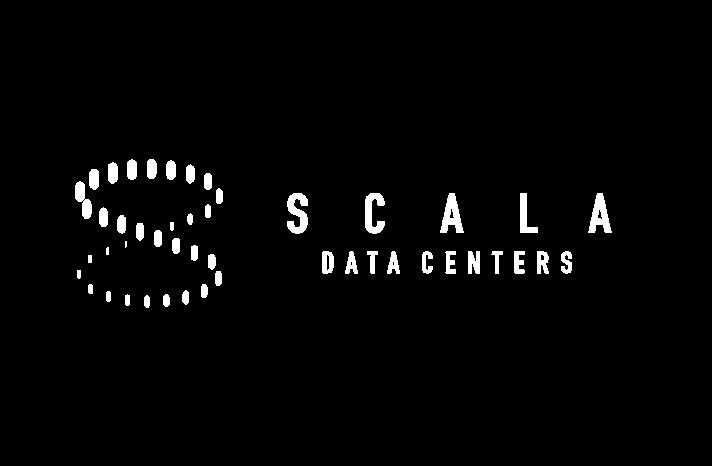
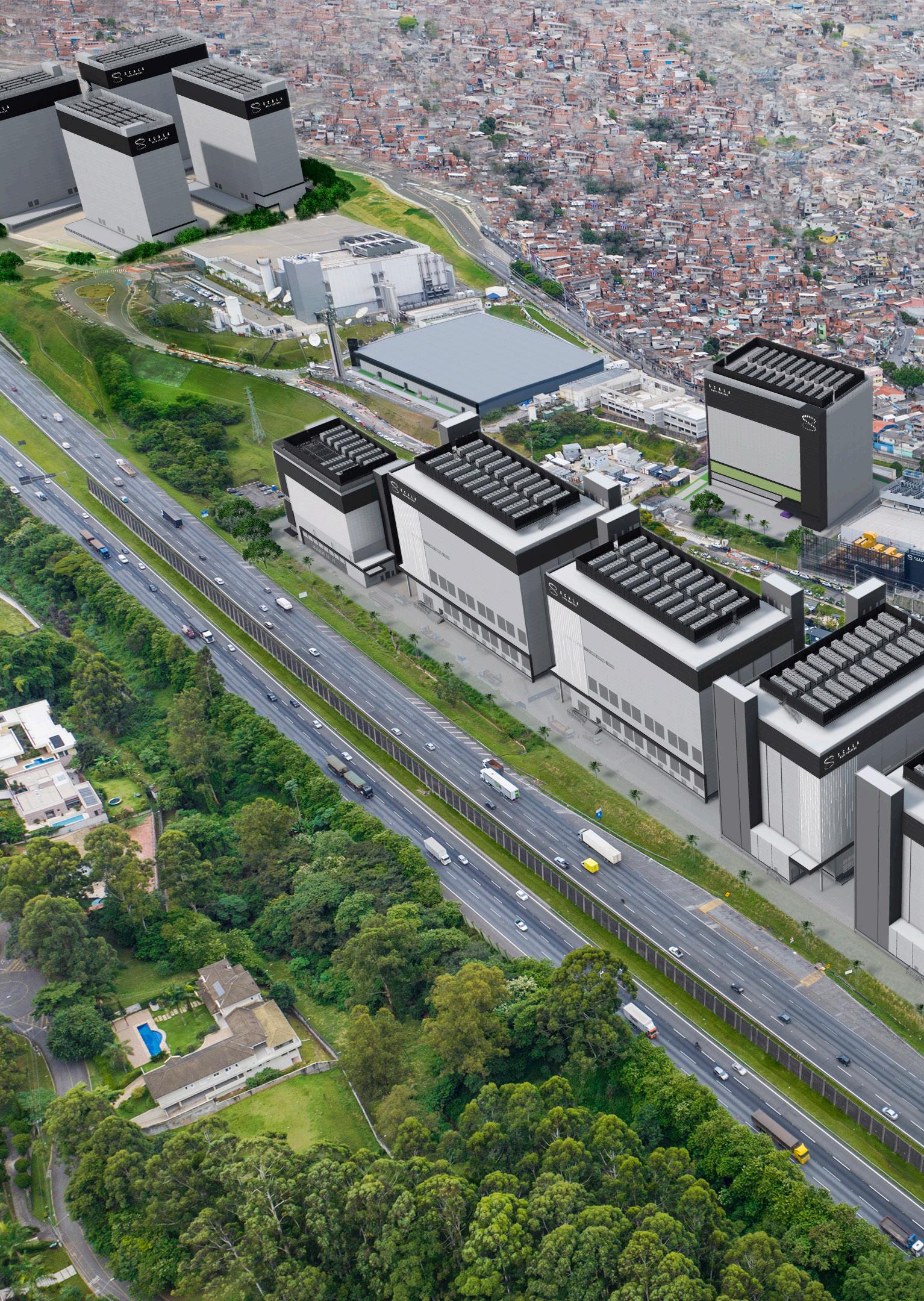 WRITTEN BY: JOSEPHINE WALBANK
PRODUCED BY: LEWIS VAUGHAN
WRITTEN BY: JOSEPHINE WALBANK
PRODUCED BY: LEWIS VAUGHAN
Fourth largest campus worldwide
450MW IT 17 buildings

600MW total power +11,000 jobs 100% renewable energy
Campus Tamboré: The data centers in operation and those ones in 3D rendered images that will be built or are under construction
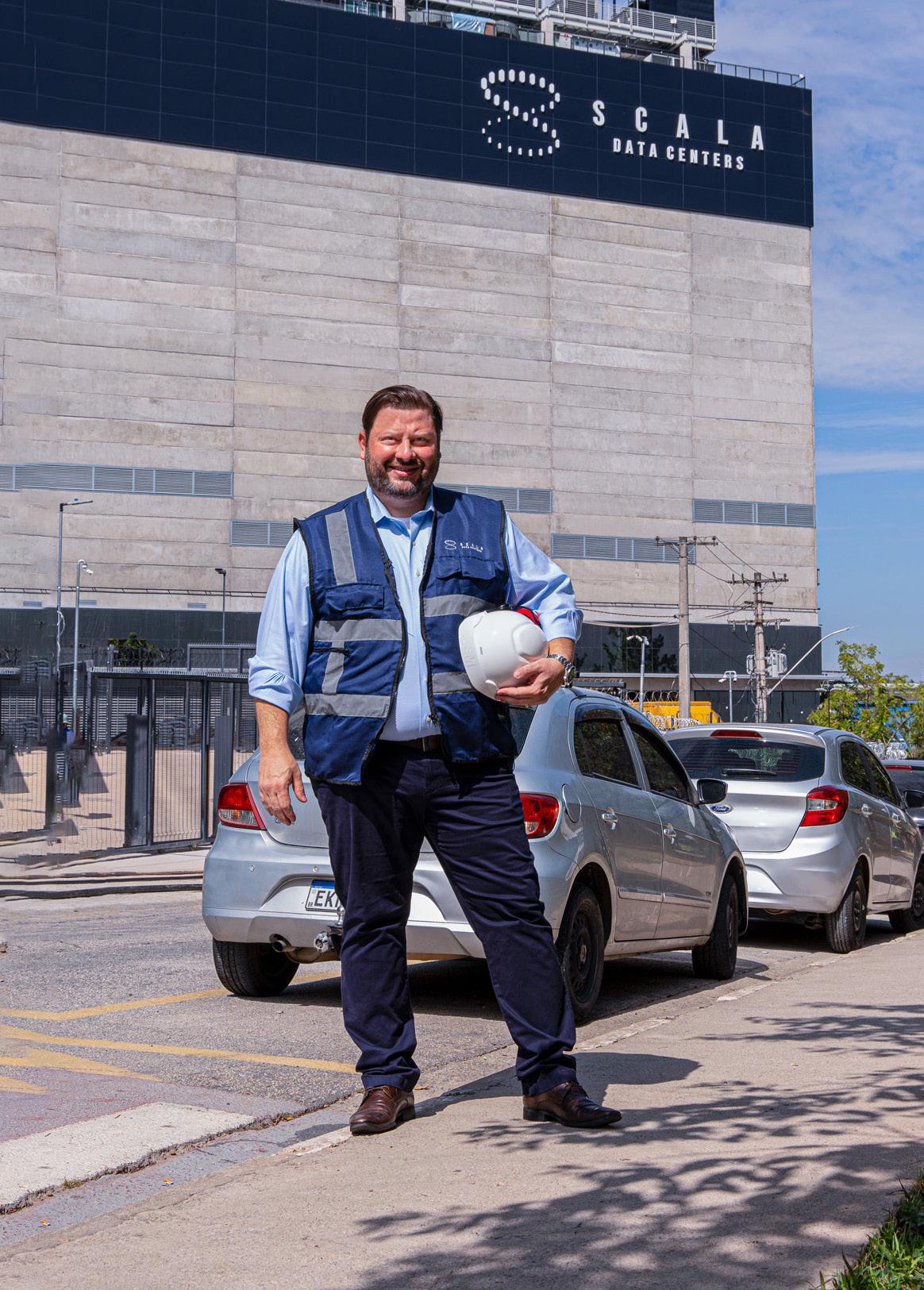
an exclusive interview with Marcos Peigo,
Scala shifts the paradigm in the Latin American data centre industry by growing at real scale.

The factors that instantly set Scala Data Centers apart from its competitors are the phenomenal pace of its growth, the size of the sites that it is deploying and the extraordinary degree of its customercentric approach. Although this would be an impressive feat in any of the global data centre markets, what’s particularly remarkable is that this is being achieved in one of the most notoriously underserved data centre markets: LATAM.
Scala is scaling at real scale and, in less than three years, has grown from its starting point of 17MW in bookings to 150MW, possessing the 4th largest data centre campus in the world – the largest in Latin America by a considerable margin – and managing a team that has grown from 32 to more than 700 employees in this short period.
In an exclusive interview with Marcos Peigo, Co-Founder and CEO of Scala Data Centers, we find out more about the factors driving this growth and the DC provider’s ambitions for the next decades.
In
Co-Founder and CEO, we get an insight into the phenomenal pace of growth that Scala is achieving

Leader in the development and manufacture of Modular Data Centers in Latin America, Modular enables and drives the technology market by developing intelligent, flexible, and high-quality solutions.



The future becomes increasingly feasible, safe, and near.

Modular is a platform for developing and producing Modular Data Centers and modular components for Data Centers that was born a leader in Latin America, combining a strategic vision of the technology market with a proven entrepreneurial and innovation capacity.


Modular designs and manufactures intelligent structures. It is rigid in complying with the standards’ requirements but flexible to its customers’ needs, aligning its solutions to the challenges of the market. The modules leave the factory tested, commissioned, and TIA-942 Ready certified, reducing the risk of field installation, optimizing deployment time, and ensuring the quality that certification brings.
Our products enable a future of possibilities with Modular support by a quality digital infrastructure fully prepared to support mission-critical environments.

We think, build, and apply state-of -the-art processes and technology in everything we develop.

With factories that serve all of Latin America and a complete portfolio for the most varied needs of our customers, we supply indoor or outdoor demands, offering smart prefabricated modular structures, which leave our factories ready and commissioned.
Formed by a group of investors, partners, and executives with decades of experience in the technology, engineering, aerospace, financial, and manufacturing industries, we were founded by the acquisition and incorporation of the engineering, manufacturing, and intellectual property assets of a former market leader in the Brazilian market.

We have developed our families of “Fast Forward” and “Good To Go” supporting demands from 2 to 60 racks and 10kW to 600kW per module to meet market needs using innovative and cuttingedge infrastructure technology.
LEARN MORE Cooling Room Power Room Data HallA late market entrance, spurring new growth mindset
Interestingly, Peigo explains that one of the principal reasons behind Scala’s trademark approach to growth is the fact that the provider came to the data centre market relatively late in the game.

“When we arrived, our competitors were already established, with a fragmented capacity distributed among the LATAM countries. So, we decided to invest not in shared facilities, but in single tenant facilities foreseeing an expansion in the demand similar to what has happened in other more developed markets,” Peigo explains.
“Instead of starting by building one data centre and sharing space in that facility for
MARCOS PEIGO CO-FOUNDER & CEO SCALA DATA CENTERS
“ We are a partner of DigitalBridge, but I see the DigitalBridge team much more as an extension of the companies they invest in”
TITLE: CO-FOUNDER & CEO
COMPANY: SCALA DATA CENTERS
LOCATION: SÃO PAULO
Marcos Peigo is the Co-Founder and CEO of Scala Data Centers. As a seasoned leader, he provides critical insights into the Latin American data centre and IT markets, leveraging over 25 years of experience working with technology and infrastructure-focused firms in Brazil and Latin America.
Marcos studied Electrical Engineering and Economics at Pontifícia Universidade Católica de São Paulo. In 2023, Marcos was the only Latin American executive nominated by the Pacific Telecommunications Council (PTC) for the Outstanding C-Level Executive Award and, in 2022, Marcos was awarded the title of Industry Leader by DatacenterDynamics.


customer A, B, C and D until 70-80% of that data centre is already occupied before launching a new one, we started another approach, which was specifically designed to meet the needs of hyperscale customers. We decided to get the same four customers, and create one building for customer A, one building for customer B, one building for customer C, and one building for customer D, with reserved space for them to grow.”
In the LATAM market, besides the advance of digital transformation, key drivers of growth here are the power restrictions that are currently being experienced in North America that used to serve our region, data sovereignty regulations and currency instability concerns. Consequently, catering


“When they sign an agreement with us, our customers have secured an avenue to grow for decades, and we assume a strong long-term expansion capacity commitment, while giving them the comfort of growing in the same location, with a trusted partner”

MARCOS PEIGO CO-FOUNDER & CEO SCALA DATA CENTERS
for this demand then shifts to the Latin American region.
In recent years, this long-standing trend was coupled with the shift brought about by the COVID-19 pandemic, during which Scala experienced a dramatic increase in demand, fuelled by the world’s pivot to cloud technologies and companies’ rising reliance on data.
“When the demand spiked, these customers triggered the reserved space and asked for more reservations within the same campuses. So, we placed our bets on building at scale, dedicating spaces for our customers for significant growth – much bigger than that which
they had experienced in Latin America in the previous years – all within large, customised, and dedicated buildings,” Peigo outlines.
“When they sign an agreement with us, our customers have secured an avenue to grow for decades. We assume a strong long-term expansion capacity commitment while giving them the comfort of growing in the same location with a trusted partner obsessed with their success.”
From there, the average size of Scala’s tickets jumped from 2MW to 8MW, then 8MW to 20MW, and so on, as Scala and its customers alike saw returns from their investments in these large deployments.

When you need to rapidly expand but not overprovision, you need to scale with confidence.

Introducing the new Vertiv™ Powerbar iMPB modular busway power distribution system. Ideal for any data center, our user-friendly system provides a cost-e ective way to ensure continued uptime of your IT load. Easily integrate power with a smart, overhead solution that keeps floor space open for additional IT equipment, scaling your data center today and getting ready for growth tomorrow.

“The combination of these factors – alongside our massive control from design to construction with sustainability practices, all developed by our own team – and this long-term view, which sees us betting on our customers’ growth, has taken us to this position where we are basically doubling the size of the LATAM market in three years.”

Now, Scala plans on opening 12 sites within the next 24 months – a testament to the quality of its engineering and construction teams. This is even more

impressive when you consider that the young company started out (just a few years ago) with two sites. For Peigo, Scala’s unique relationship with its partners has proved absolutely instrumental in achieving this.
“To work with DigitalBridge is really a pleasure. DigitalBridge brings us a unique combination of global experience with Scala’s local knowledge. So, we don't see DigitalBridge as single investors – they are also operators,” Peigo explains.
“I see the DigitalBridge team much more as an extension of the companies they invest in, rather than investors that we meet in board meetings to talk about results and define targets. It's more a dayby-day relationship with strong alignment,” Peigo posits.

Similarly, the bespoke partnership that Scala has established with Brazilian company Modular Data Centers has been key to achieving a faster pace of customercentric service that has defined its success.
“Modular had all-in-one prefab outdoor modules. They sell to the market, in general, smaller deployments, at 8, 16 or 30 racks. But, based on the idea of enhancing the amount of components that we could prefab before sending to the site – so that we could achieve higher standardisation and need less time to deploy – Modular took on the challenge to build something bespoke for Scala and together we came up with the FastDeploy design where dedicated blocks of 600kW of capacity can be delivered on record time in strategically located sites that can grow up to 7.2MW of IT capacity.”
Since much of what Scala does in this region is the first of its kind, a key part of its sustainability strategy is working with local people and communities.
“We have to work with municipalities and local governments to educate them about what a data centre is and the benefits that a data centre deployment can bring. In this way, we’re working also to enable tier two markets in Latin America, bringing progress to these countries and locations, and enabling the future in Latin America,” Peigo asserts.
“We really believe that digital infrastructure is the way to pave the future for these countries and to enable growth in a sustainable manner. This isn’t something that happens in one meeting or with one press release; this is a process, and it takes time to consolidate.”
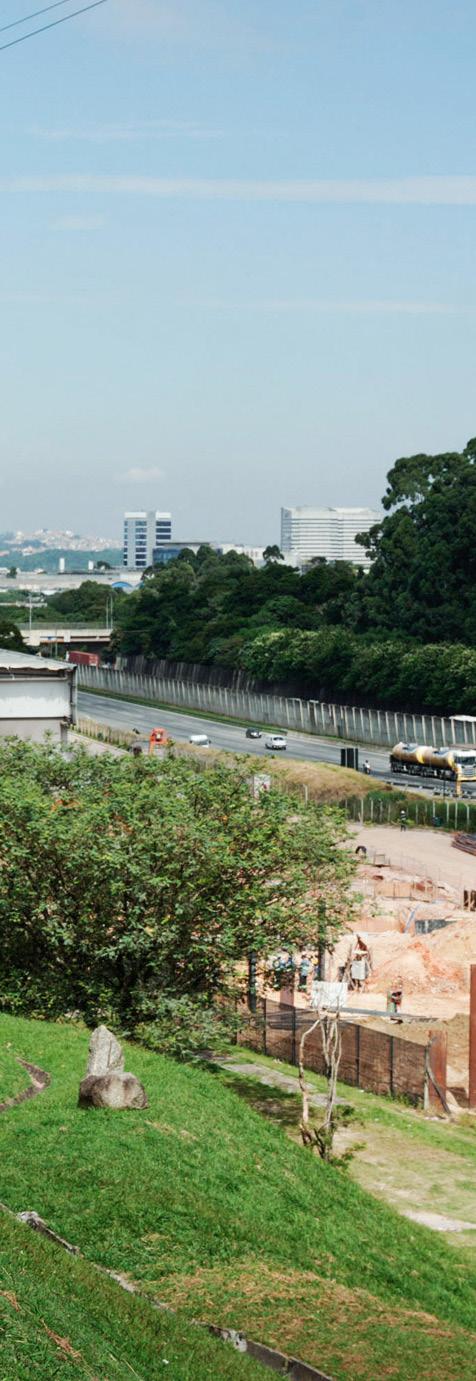
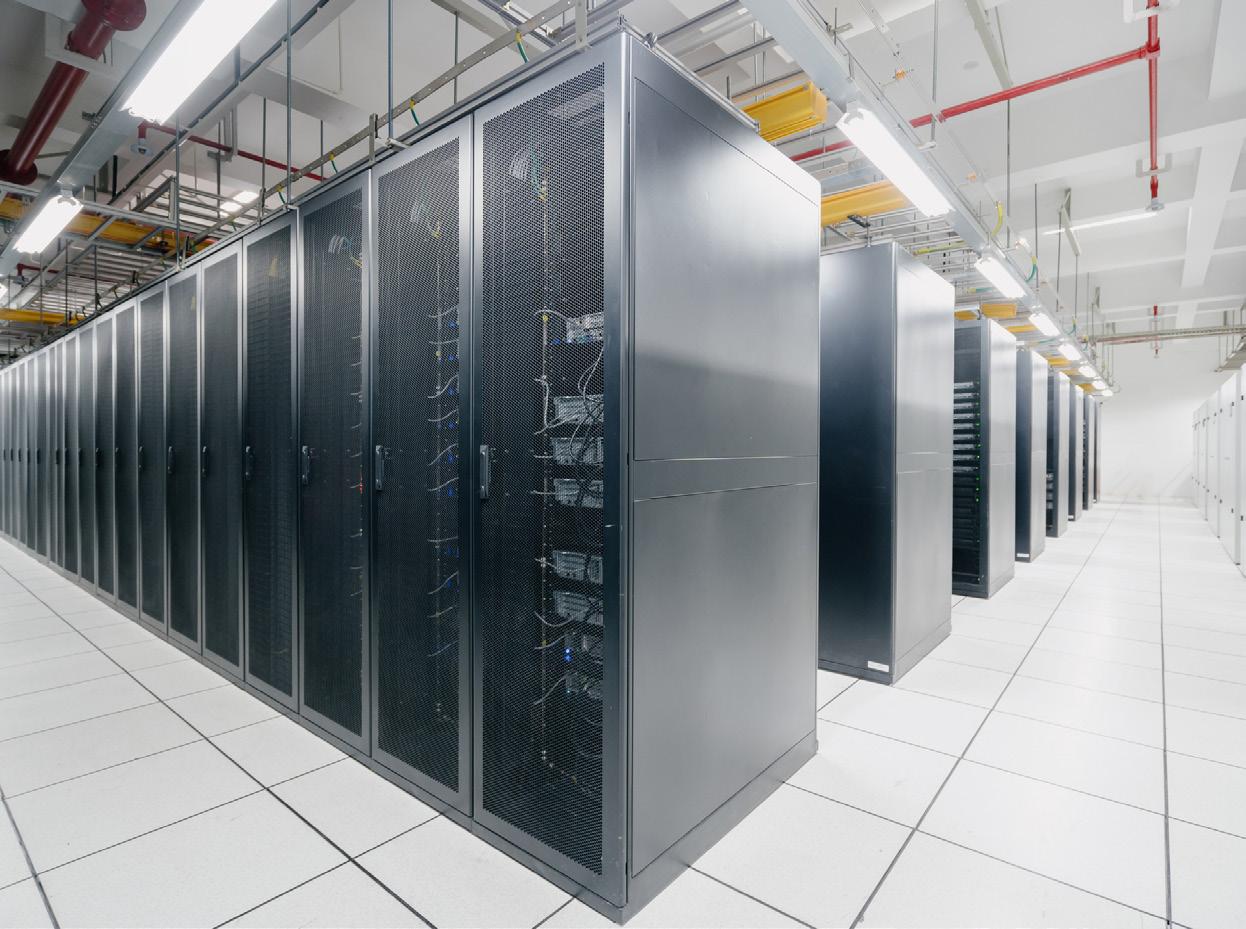
RS CONSTRUÇÕES owns highly qualified teams and a renowned structure in the fields of engineering, management, quality, security and environment, which enables us to provide our clients innovative, sustainable and profitable solutions in all projects we partake.

Scala believes that infrastructure and education contribute massively to transforming society and guided by this belief, since 2020, Scala has donated full engineering scholarships to young people in situations of social vulnerability.
“In November 2022, we expanded the programme announcing that from now on, for every MW booked, we will donate a full engineering scholarship in the area where that capacity will be deployed, plus a dedicated mentoring program with a Scala executive plus a job opportunity at the company”, Peigo asserts. “Therefore, millions of opportunities in someone's life will be created, enabling a brighter future for them and their families. In 2023 we will reach 150 full engineering scholarships.”
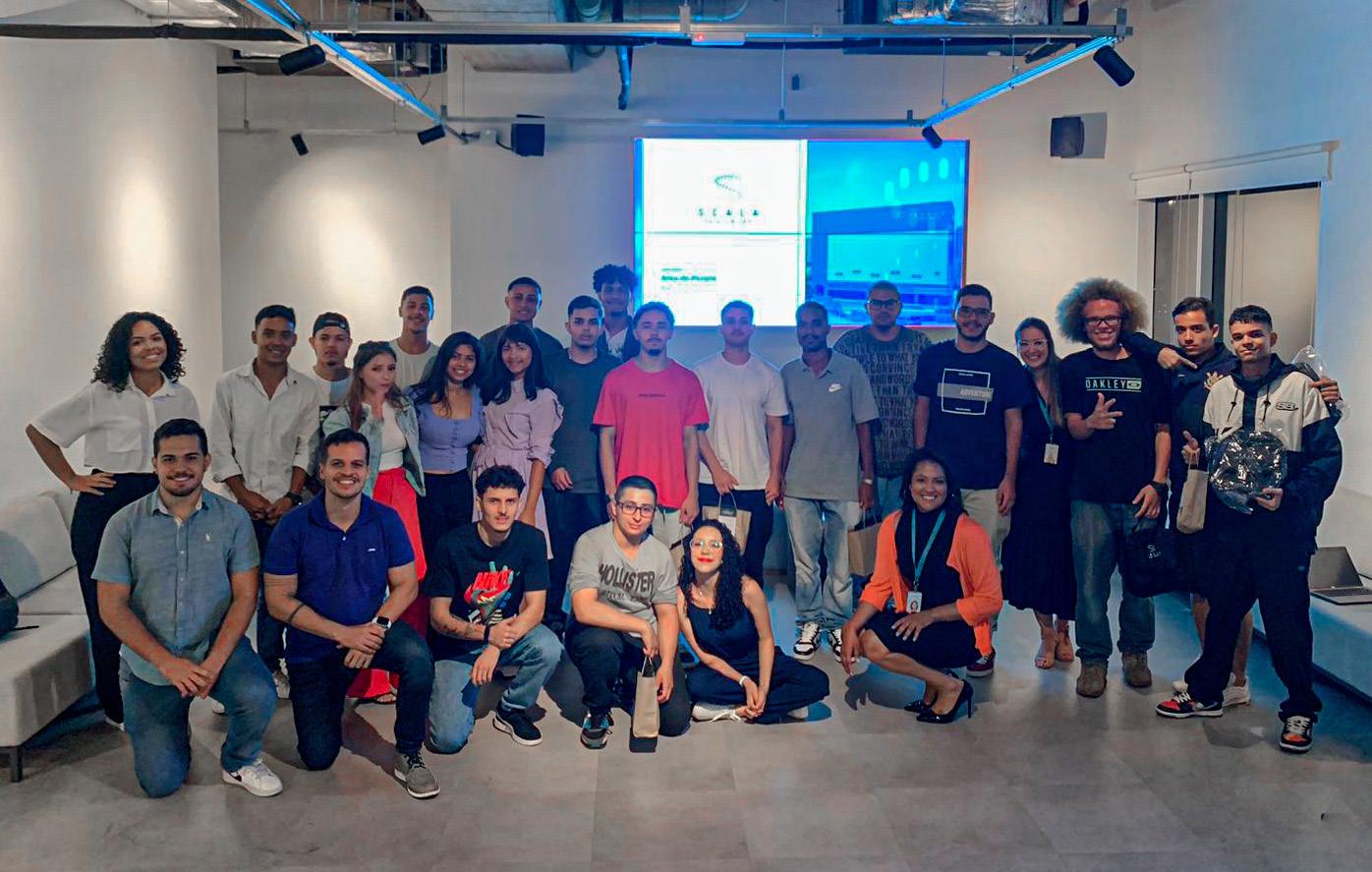
MARCOS PEIGO CO-FOUNDER & CEO SCALA DATA CENTERS
“We really believe that digital infrastructure and education are the way to pave the future for these countries and to enable the growth in a sustainable manner”

Experienced with assembling of air conditioning, ventilation and exhaust systems.
In 2017 our efforts were directed to the data centre field. In 2020 we were privileged to perform the assembling of SCALA SP3 HVAC system. Continually seeking for quality on service provision, we had the first recurrence of HVAC assembling system with SCALA SP4, and recently SCALA SP5



Alongside this, Scala has firmly asserted itself as a market leader in the field of green standards.
“What makes us really proud is that, since the beginning, sustainability has been a must. This means huge investments to drive lower PUEs, only renewable sourcing since our first day of operation, and being the first Latin American data centre to reach a carbon neutrality status, plus the first to operate with 100% renewable sources in the region.”
“The average PUE for data centres in Latin America is 1.74. Our average PUE in loaded sites today is under 1.35 and, in our most recent designs, we are already reaching below 1.30. We’re very proud to be leading the industry in our region in this way being the benchmark to be followed.”
Currently, Scala’s key availability zones in Brazil can be seen as a triangle of its vast Tamboré, Jundiaí and Campinas campuses. Then, running in parallel to these expansions, it is also rapidly developing its presence in other cities in Brazil – Rio de Janeiro and Porto Alegre – and also in other LATAM countries, including Colombia, Mexico and Chile.
What makes Scala so successful in this emerging market is the strategic positioning of its data centres, in order to create opportunistic availability zones, which are precisely designed to best serve customers.

Scala’s ascent to the top of the LATAM DC market began in Brazil, upon the acquisition of two premium data centres from the UOL Group.

“We quickly decided to grow, with the idea of big campuses in LATAM mirroring the US markets. Seeing this growth combined with the maturity of the applications, the constraints of power and growth in North America, plus the demand for lower latency deployments in Latin America, we drive for bigger deployments,” Peigo explains.
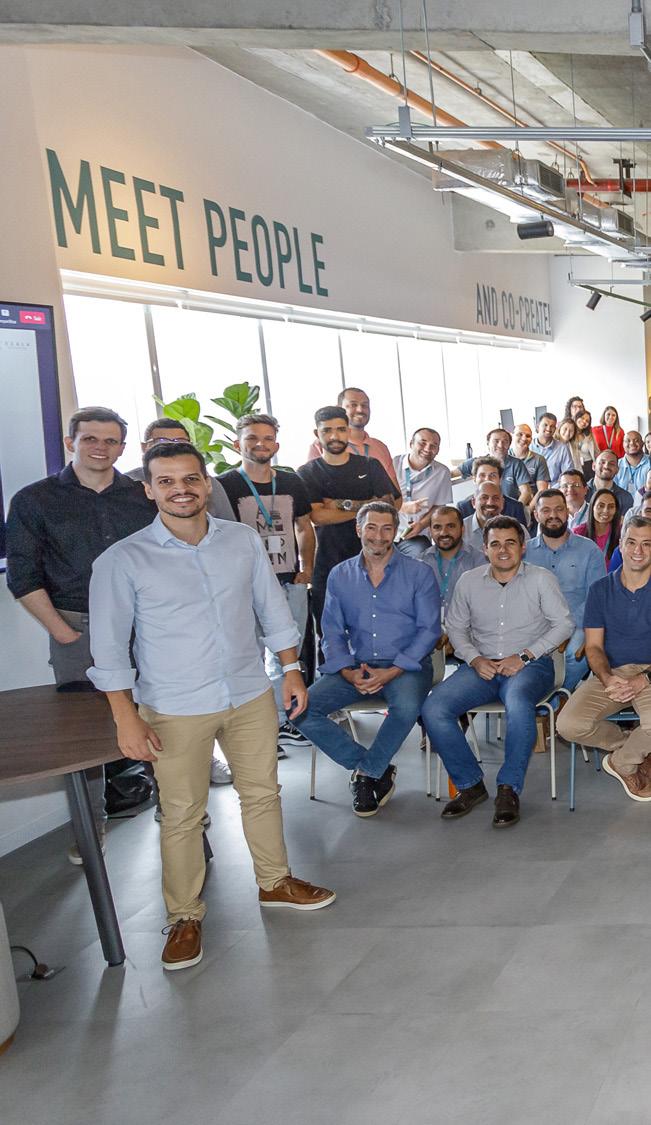
“Before 2020, the average deployments in Latin America (for a hyperscale site) were 2-3MW. Now, we’re talking about 20-30MW buildings dedicated to single hyperscale customers, not only in Brazil but also in other countries.”
In fact, Scala is currently deploying its Lampa campus which is already the biggest campus ever permitted in Chile, with 120MW of total capacity and 90MW of IT capacity when fully deployed.
“And to give you a sense of how big we plan for some locations to be, for our Tamboré campus alone, we have secured 600MW of power, which makes Tamboré the fourth largest campus in the world, and by far the biggest one in the entire LATAM market,” Peigo says.
“The average PUE for data centres in Latin America is 1.74. Our average PUE today is 1.35 and, in our new designs, we are reaching below 1.30”
Scala has grown from to more than 700 employees in less than three years
32 than employees than years
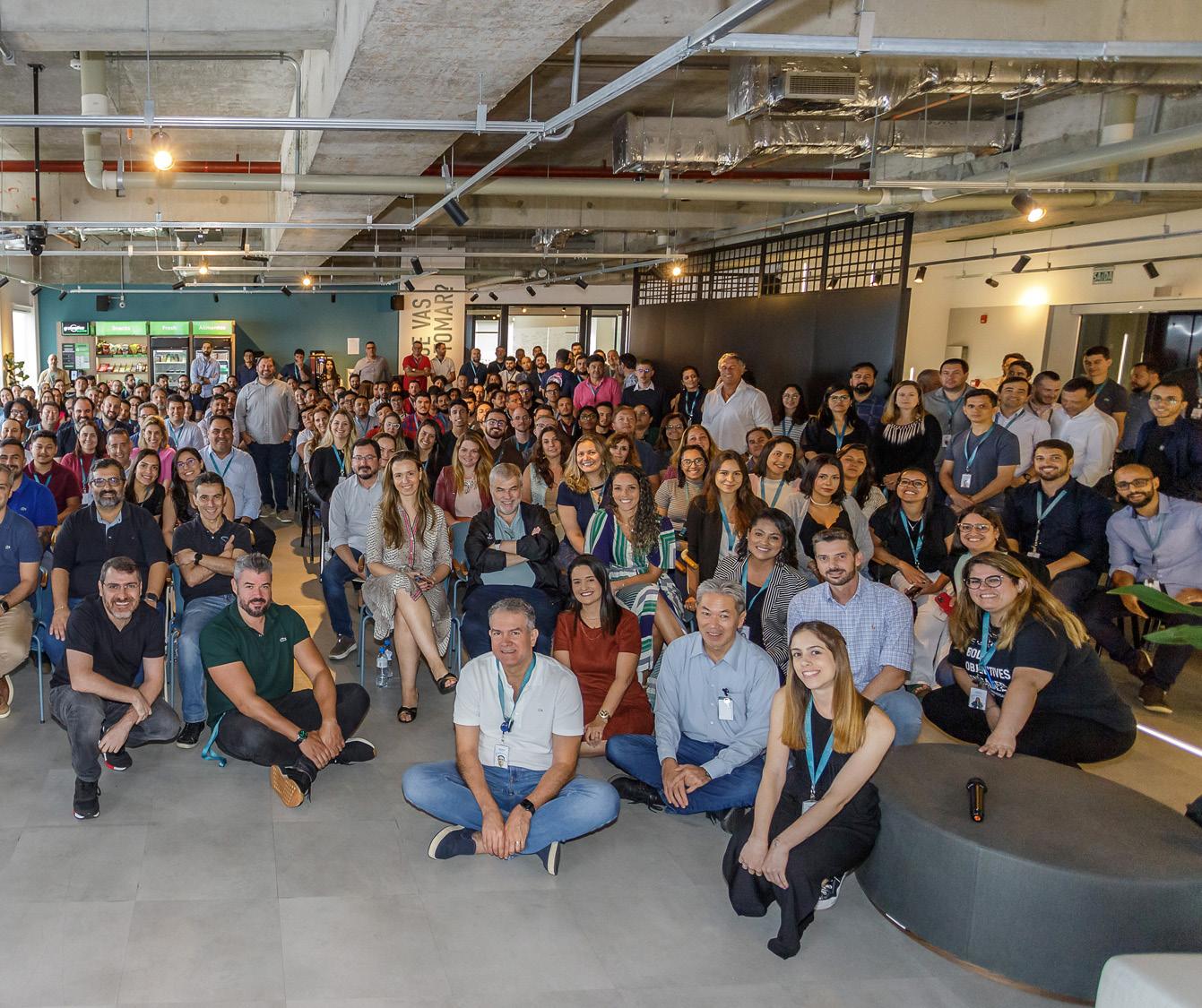
“We already have 100MW in production, and we are now adding a second substation with another 100MW and the third substation will be 400MW. It's a massive amount of capacity. To give some perspective on this, the consumption in Tamboré alone will be the same size as the consumption required for the entirety of Brasília.”
The pace of Scala’s growth – particularly in 2022 and 2023 – is massive. But why? Beyond simply a case of profit for profit’s sake, why has the speed of growth been set as such a paramount priority for the provider?
“Firstly, we understood from the beginning that this hyperscale market didn't exist in LATAM. We had hyperscale customers with capacity deployed in LATAM, but all of their capacity or all of their loads were relatively small, with one megawatt here, two megawatts there, and so on.”



SGRUTB04 went into service in 2022, dedicated to a single hyperscale client, with a commitment to full capacity for more than a decade
from which we control everything from the design up to construction management.”
The Center of Excellence gives Scala a far greater degree of control in the design, construction management, planning and performance evaluation of its data centres. Rather than using general contractors, the centre gives the company centralised control, helping it to implement a streamlined, uniform approach across its entire Latin American portfolio.

“Instead of having branches of Scala, we have uniform sites. So, if you’re working for Scala in a data centre – whether it’s in Colombia or Rio – it's the same local structure, supported by our centralised command centre. We basically change the address.”
This approach is not only fostering efficiencies across the entire portfolio, but this approach is a cornerstone of Scala’s company culture.
“Add to this equation that the majority of the existing DC’s in the region were smaller in average size than a single data hall of a real hyperscale facility. Of course, they were built in an era where the capacity and the visibility for the future was very small, but that does not change the fact those structures were not ready for the current demand. Plus, they were designed without the sustainable requirements that we have today.”
Peigo explains that, very early on, Scala realised the hyperscale expertise on engineering, design and sustainability for data centres were practically non-existent in LATAM. Then, they instead decided to invest in creating this expertise from the ground up.
“So, we hired a lot of people and built our Center of Excellence in Engineering (CoE),
“We are not creating the sense that Brazil is the biggest country and the centre of our portfolio – Scala is a Latin American platform.
“With the non-Brazilian employees that we have hired, we bring them to the headquarters, and they stay with us for three to six months, working and getting trained in the common centre. Then, when they get back to their countries, they’ve left a piece of their country here and they take a piece of Scala there. This forges our culture and strengthens the bonds among our people, it doesn’t matter where they live or work.
“This is the way we are growing as a unique company: a single entity, operating all of these campuses in a sustainable way throughout Latin America.”


As more ‘things’ get connected, the number of ways to attack them has increased. With cybersecurity no longer one-size-fits all, businesses must take care
WRITTEN BY: MARCUS LAW

The Internet of Things is changing the way the world works and plays. From applications in MedTech, logistics, and transportation to smart home solutions, IoT is an enabler of a larger digital transformation that will produce vast quantities of data to be stored, parsed, and transmitted over an ever-expanding global network.
But, as the world of IoT continues to expand, so too do security threats. The billions of IoT devices in use have naturally created new vulnerabilities for companies. According to global management consulting firm McKinsey, as more ‘things’ get connected, the number of ways to attack them has increased dramatically. Pre-IoT, a large corporate network might have needed to account for up to 500,000 endpoints being vulnerable to attack, while the IoT may involve a network with millions or tens of millions of these endpoints.
IoT fuelling transformation but vulnerabilities create risks for businesses The potential value of IoT is large and growing. By 2030, McKinsey estimates it could amount to up to US$12.5tn globally. And, according to Palo Alto Networks, the rapid growth of capabilities and adoption of IoT technology has fuelled a transformation in enterprise operations. IoT devices are believed to make up 30% of total devices on enterprise networks today, with the rich data collected from these devices providing a number of valuable insights informing real-time decisions and delivering accurate predictive modelling. In addition, IoT is a key enabler of digital transformation in the enterprise, with the potential to drive up workforce productivity, business efficiency, and profitability, as well as the overall employee experience. However, despite the many advantages IoT technology enables, the interconnectedness of smart devices

“ The billions of existing IoT devices were not deployed overnight, and the security problems they inherit will not be fixed overnight either”
TOM CANNING VICE PRESIDENT OF GLOBAL SALES IOT AND DEVICES, CANONICAL
presents a substantial challenge to enterprises, primarily in terms of the serious security risks arising from unmonitored and unsecured devices connected to the network.

What’s more, with increases in hybrid working environments, security weaknesses on employees’ home networks could create risks for businesses. Last year, infosec firm Bitdefender found a number of security vulnerabilities in a particular brand of baby monitors, potentially enabling attackers to either access the camera feed or execute malicious code on vulnerable devices.
And, in addition to commercial impact, the risks of IoT-related service disruptions extend to the critical infrastructure in our communities.
According to Palo Alto Networks, security teams are now faced with new and escalating challenges that are unique to IoT security, including:
• Inventory – not having clear visibility and context for what IoT devices are in the network, and how to securely manage new devices.
• Threats – lack of well-embedded security into IoT device operating systems that are hard or impossible to patch.
• Data volume – overseeing vast amounts of data generated from both managed and unmanaged IoT devices.
• Ownership – new risks associated with the management of IoT devices by disparate teams within the organisation.

• Diversity – the sheer diversity of IoT devices, in terms of their limitless forms and functions.
• Operations – the unification crisis wherein IoT devices are critical to core operations yet difficult for IT to integrate into the core security posture.


educators. Empowering students. Explore how we accelerate student discovery, learning and innovation with our Digital Education 3D Experience.

“Imagine the implications of an attack on the switching infrastructure of a metro subway line, a wireless pacemaker becoming compromised, or a power grid shutting down,” reports a whitepaper by Fortinet. As the report explains, security professionals must be prepared to define solution requirements thoughtfully to guard against these new threats.
“Thanks to the work-from-anywhere era, the boundaries between home and work networks have blurred,” explains Sunil Ravi, Chief Security Architect at Versa Networks. “Once the malware has breached a home network, it can then move laterally across to the homeowner’s work network, inflicting significant damage to the organisation. With IoT devices being the perfect target for malware, vendors must ensure that their products have effective security.”
As Palo Alto Networks explains, without robust security, any connected IoT device is vulnerable to breach, compromise, and control by a bad actor to ultimately infiltrate, steal user data, and bring down systems.
With large volumes of diverse IoT devices continuing to connect to the network, a dramatic expansion of the attack surface is occurring in parallel. As a result, the entire network security posture is diminished, in terms of the level of integrity and protection offered to the least secure device.



In addition to these challenges, 98% of all IoT device traffic is unencrypted, putting personal and confidential data at severe risk.
Almost half of the respondents to a study by Capgemini identified the inclusion of technologies like IoT as one of the main issues exposing their organisation to breaches. Ineffective delegation of cybersecurity responsibilities also ranks amongst the top vulnerabilities, an issue making it difficult to identify malicious activity in a timely manner.
“ Thanks to the work-fromanywhere era, the boundaries between home and work networks have blurred”
SUNIL RAVI CHIEF SECURITY ARCHITECT, VERSA NETWORKS


“
While on the surface it seems like security and networking performance are at complete opposite ends of the spectrum, SASE has proven an ability to strike the perfect balance between the two entities”
APURVA MEHTA CTO AND CO-FOUNDER, VERSA NETWORKS
Secure Access Service Edge (SASE) is an emerging wide-area networks (WAN) model coined by Gartner in The Cloud that delivers network and security FWaaS, secure web gateway, and CASB as services to protect connected entities capabilities are delivered as a service based upon the identity of the entity, real-time context, enterprise security/ the sessions. Identities of entities can applications, services, IoT systems, or

As Tom Canning, Vice President of Global Sales IoT and Devices at Canonical, explains: “Businesses need to take a long, hard look at where their burden of security lies, and seriously consider putting trust in IoT applications to support and manage networks. That way, managers can be confident that they’re futureproofing through technology, which can automatically remediate any security issues.
“It’s no longer a case of one-size-fitsall in the smart era of Industry 4.0. Device hardware is not static and manufacturers must recognise that the future does not lie in this form of vulnerable hardware, but instead in software-defined capabilities.

“As attacks continue to accelerate, more action is needed to protect and futureproof the manufacturing industry. It will take investment and a real commitment to change how the industry thinks about security in relation to smart infrastructure. The billions of existing IoT devices were not deployed overnight, and the security problems they inherit will not be fixed overnight, either.”

“ With SASE, IoT devices can maintain their performance to meet the needs of the business but also ensure that security is watertight”
APURVA MEHTA CTO AND CO-FOUNDER, VERSA NETWORKS
SASE striking the perfect balance Coined by Gartner in the 2019 Networking Hype Cycle and Market Trends report, Secure Access Service Edge (SASE) introduces a new architecture where networking and security functions are bundled in a cloud-delivered service. As IoT and internet-based traffic continues to soar, SASE allows enterprises to streamline network integration, security, and policy management of distributed devices with a centrally-managed platform.
“Whilst on the surface it seems like security and networking performance are at complete opposite ends of the spectrum, SASE has proven to be able to strike the perfect balance between the two entities,” explains Apurva Mehta, CTO and co-founder at Versa Networks.
“SASE allows for a tighter integration between networking performance and security. This means IoT devices can be secure, while also ensuring that high performance

is maintained. Additionally, through SASE, organisations can ensure that all endpoints on IoT networks receive the same amount of security coverage and management capabilities – giving security teams complete visibility across their network.”
Not only does SASE give organisations visibility across all endpoints in IoT networks, but it also segments the network, too. By doing this, organisations can restrict the movement of malware on IoT networks, meaning that the cyber-risk of an organisation is dramatically reduced. Additionally, when suspicious activity is spotted within IoT devices, it can be easily located by security teams and mitigated.
“IoT devices are here to stay and they have proven to be extremely valuable to businesses, however, they must be secure,” Mehta concludes. “With SASE, IoT devices can maintain their performance to meet the needs of the business but also ensure that security is watertight.”

 WRITTEN BY: JOSEPHINE WALBANK
PRODUCED BY: STUART IRVING
WRITTEN BY: JOSEPHINE WALBANK
PRODUCED BY: STUART IRVING

With over 22 years’ experience and over 4300 sites, Indara is a leading owner and operator of wireless digital infrastructure in Australia. With an ambitious build and growth programme, they have over 700 new Build to Suit (BTS) sites currently in development.
In charge of this extensive portfolio and its rapid expansion is Scott Robson, the Executive Director of Deployment at Indara.

“My role is to oversee the portfolio and infrastructure services growth of the business – and that includes the 700+ BTS programme, plus the professional services that we offer. Those services include site acquisition, town planning, site design, structural and radio frequency engineering, and construction services we perform on our infrastructure for our customers,” Robson explains.
In an exclusive interview, we speak to Robson about his role and the factors that enable Indara to strengthen its reputation as a leading digital infrastructure provider.
Indara is a leading owner and operator of digital infrastructure in Australia. Over the course of the last two decades, it has firmly established itself as a connectivity leader.

“Our vision is to accelerate a sustainable digital future – across all of Australia –being our customers’ first choice provider of innovative wireless digital infrastructure, supporting smarter and more connected communities,” Robson explains.

“We own, build, operate, and manage the critical physical infrastructure across the country. We've got deep industry knowledge and expertise delivering new infrastructure and services across our portfolio.”
These sites are strategically located across both metropolitan and regional areas to enable our customers to deliver highspeed, reliable connectivity across Australia.
“Our vision is delivered by our operational excellence and commitment to customer experience, underpinned by our organisational design and focus on ESG”
SCOTT ROBSON EXECUTIVE DIRECTOR OF DEPLOYMENT, INDARA
TITLE: EXECUTIVE DIRECTOR, DEPLOYMENT
COMPANY: INDARA
INDUSTRY: TELECOMMUNICATIONS
LOCATION: AUSTRALIA
With more than 20 years’ experience in the telecommunications industry, Scott is responsible for the management of Indara’s infrastructure and services growth.

Scott has extensive turnkey mobile deployment experience and has been intimately involved in all major 3G, 4G, and 5G rollouts as well as public and private network deployments. Scott’s role is to grow Indara’s infrastructure portfolio focusing on the customer’s experience and implementation of new infrastructure products and services.
“Our vision is delivered by our operational excellence and commitment to customer experience and is underpinned by our organisational design and focus on ESG.
In a market like Australia, the main obstacles that providers face will, inevitably, include the cost to upgrade or expand a network over a vast land mass and geography. With over 4000 sites, the challenge that they always consider is, how quickly could a customer expand its coverage, upgrade, or add a new technology, like 5G? And how does Indara help navigate this?
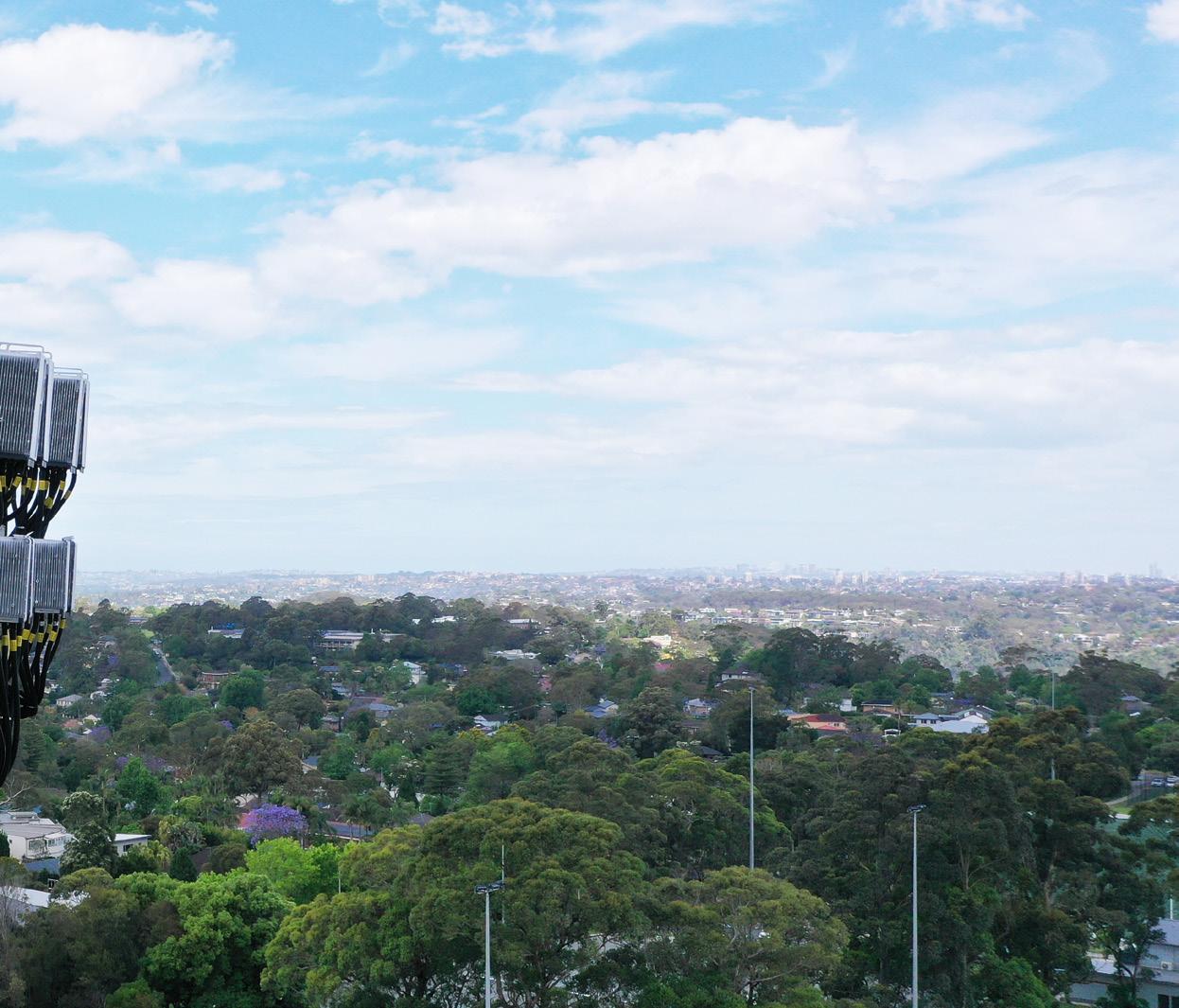
With a strong proven track record of delivery, Scott is passionate about delivering outcomes in partnership with customers and suppliers.
Scott holds a Master of Business Administration from Macquarie Graduate School of Management and a Bachelor of Building (Construction Economics), from the University of Technology Sydney.
With consumer demand for greater coverage and more data, the need for outsourced telecom infrastructure deployment has intensified over the last decade. As a leading service provider, CPS has a proven history delivering this infrastructure and deploying every technology generation (1G to 5G) to date. Learn
CPS commenced operations in 1992 and we are the longest running independent service provider in the Australian market.
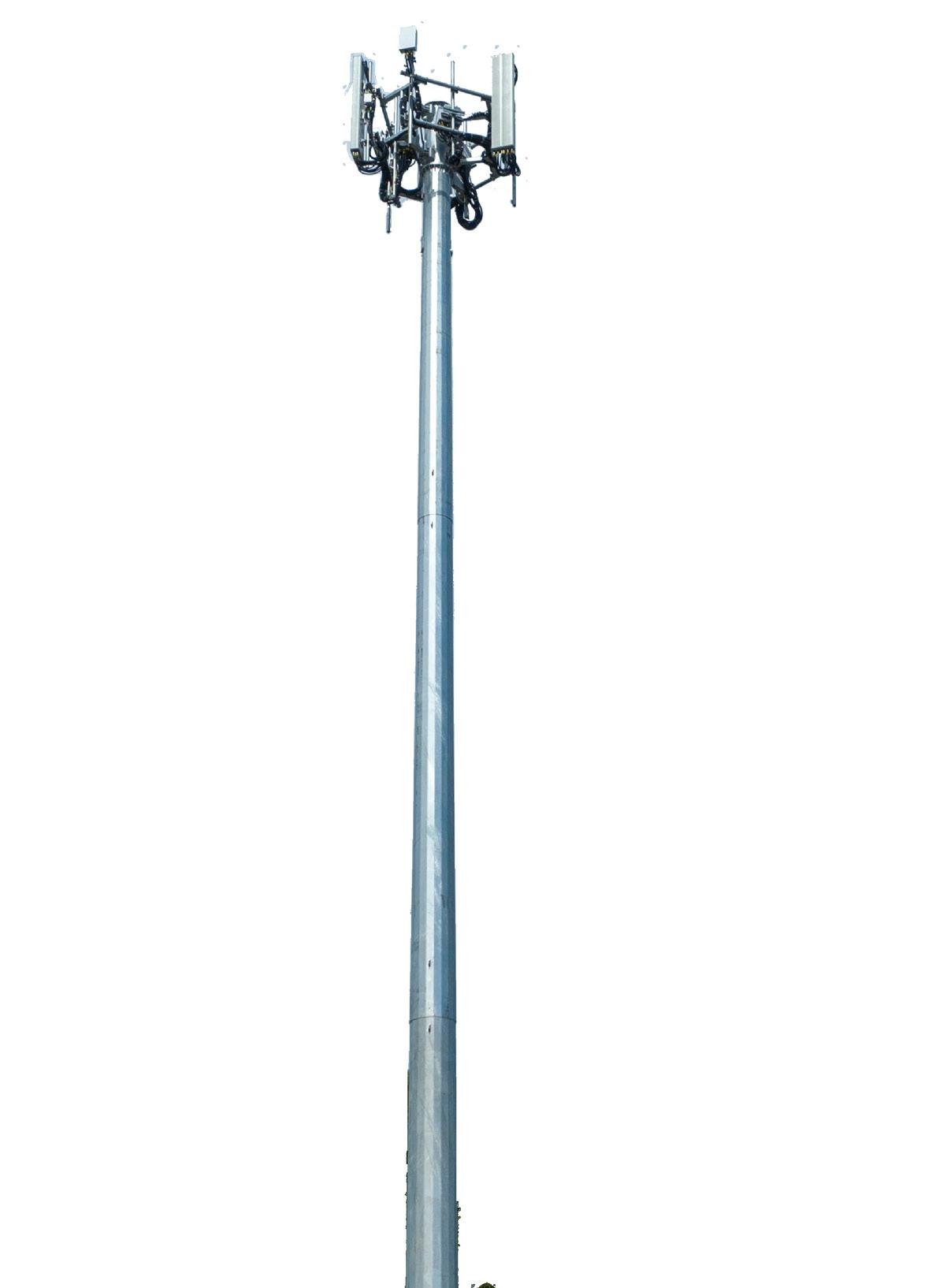
CPS Supports all OEMs and are therefore independent with our approach to project work.
Founded in 1992, CPS is one of Australia's volume end-to-end infrastructure and telecommunications deployment partners. a diverse workforce for the Australian telecommunications market. We have with specialist skills. As an organisation, our vision is to be the leading enabler of technology, connectivity, and innovation that ultimately improves productivity,
in technological innovations that drive efficiency, productivity, and quality in our project management tracking and in service delivery.
Our approach is to continually strive for excellence and by seamlessly integrating our people, processes, and systems into our customer organisations, we become a natural extension of their organisation. This allows us the ability to cultivate a culture of collaboration and innovation, as we firmly believe in being in the project, rather than on the project.
the past 5 years. Our core competency micro projects, for leading infrastructure and federal telecommunications demand.
Our rich heritage, approach to problem solving, and commitment to great service and performance, as well as our burning desire to listen and deliver our customer’s goals, will see CPS remain at the fore of the infrastructure and telecommunications sectors.
Wide
CPS typically has projects running in every State and Territory in Australia
CPS works to the highest standards of safety and quality and uphold that with a passion.


“What we offer to the industry is speedto-market. We continue to invest in our processes, systems, and site data to enable our customers to get on site faster and easier.
“While we understand our existing sites, one of the key factors (or barriers to overcome) in the deployment of new sites is the property acquisition and regulatory approval regime as there's a significant amount of time required to navigate through both local and state government approvals and processes. So, building community engagement and awareness strategies, understanding what matters most to each community, and building relationships with local councils and government agencies are what’s required to develop infrastructure that meets the needs of our customers and that of the community.”

SCOTT ROBSON EXECUTIVE DIRECTOR OF DEPLOYMENT, INDARA
“Our vision is to accelerate a sustainable digital future – across all of Australia – being the customer's first choice, a provider of innovative wireless digital infrastructure, and to support smarter, more connected communities”
When it comes to asserting – and consistently re-asserting – its position as a leading digital infrastructure provider, speed is a critical market differentiator for Indara.
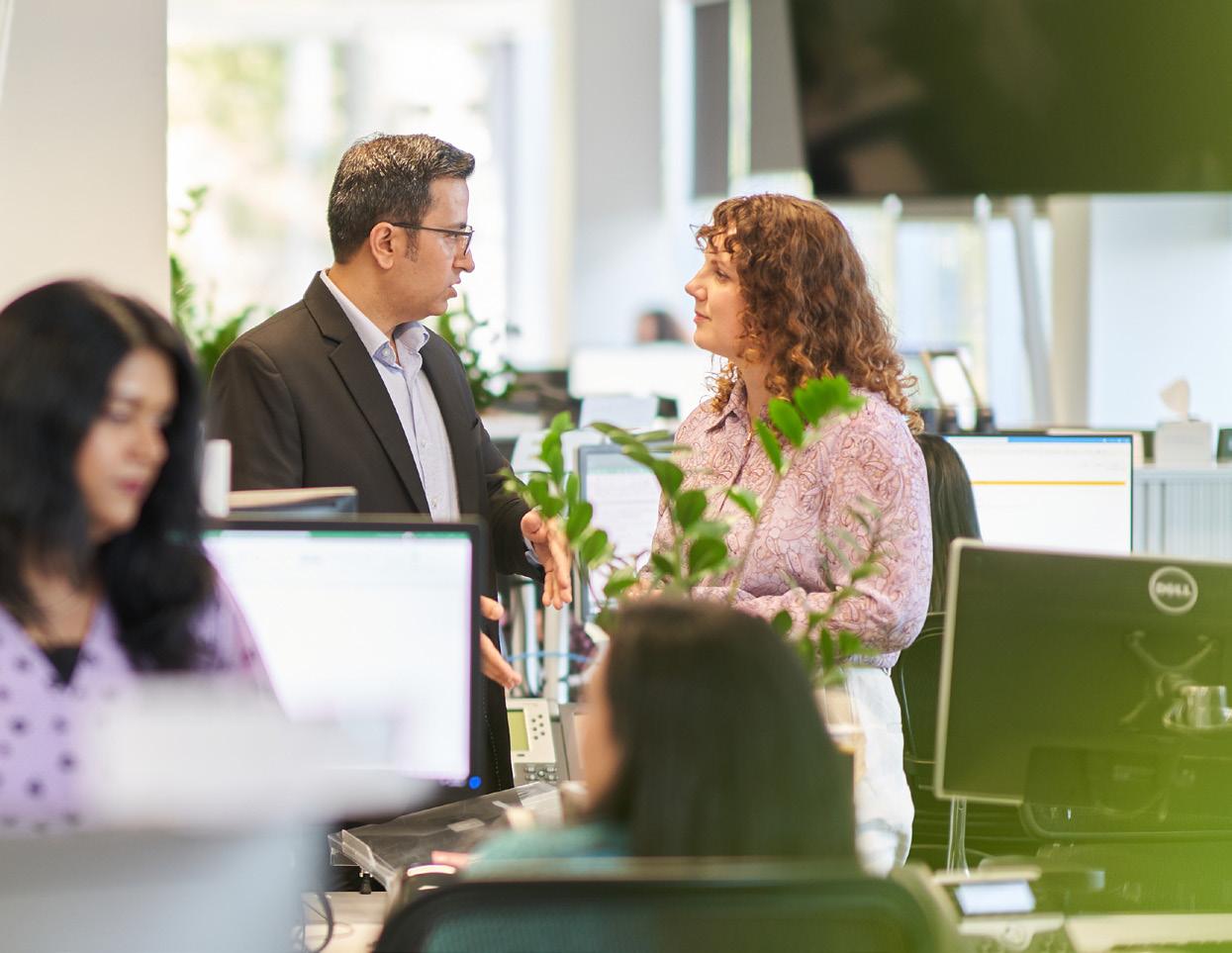
“We exist as a company to accelerate the transformation to the digital world. Our growing infrastructure solutions empower a smarter, more sustainable digital future,” Robson explains.
“We support new technologies to benefit all Australians. We shape the future of digital infrastructure, and with our extensive experience, we offer a diverse suite of services and solutions. Our longstanding reputation for operational excellence, engineering expertise, and our commitment to customer experience are major pillars of what we do and how we do things.”
Rapid portfolio expansion to support customers and accelerate a digital future Indara is implementing state-of-the-art and exceptionally reliable infrastructure solutions across Australia, extending its 4,300-strong portfolio at a rapid pace.
From circa 750 sites in 2000, Indara has grown to a vast network of over 4,300 sites, with an additional 700 currently in development
“As an organisation, we have an innovation and growth mindset. Our portfolio growth – both in the towers, rooftops, and other infrastructure – is designed to capitalise on the digital technologies that are shaping our lives now and in the future. And we leverage our technical partnerships, operational expertise, and long-standing experiencein the industry to make it happen.
SINCE 1994
Roam Engineering specialise in providing innovative and cost-effective telecommunications monopoles, towers, guyed-masts, headframes, and structure strengthening solutions.
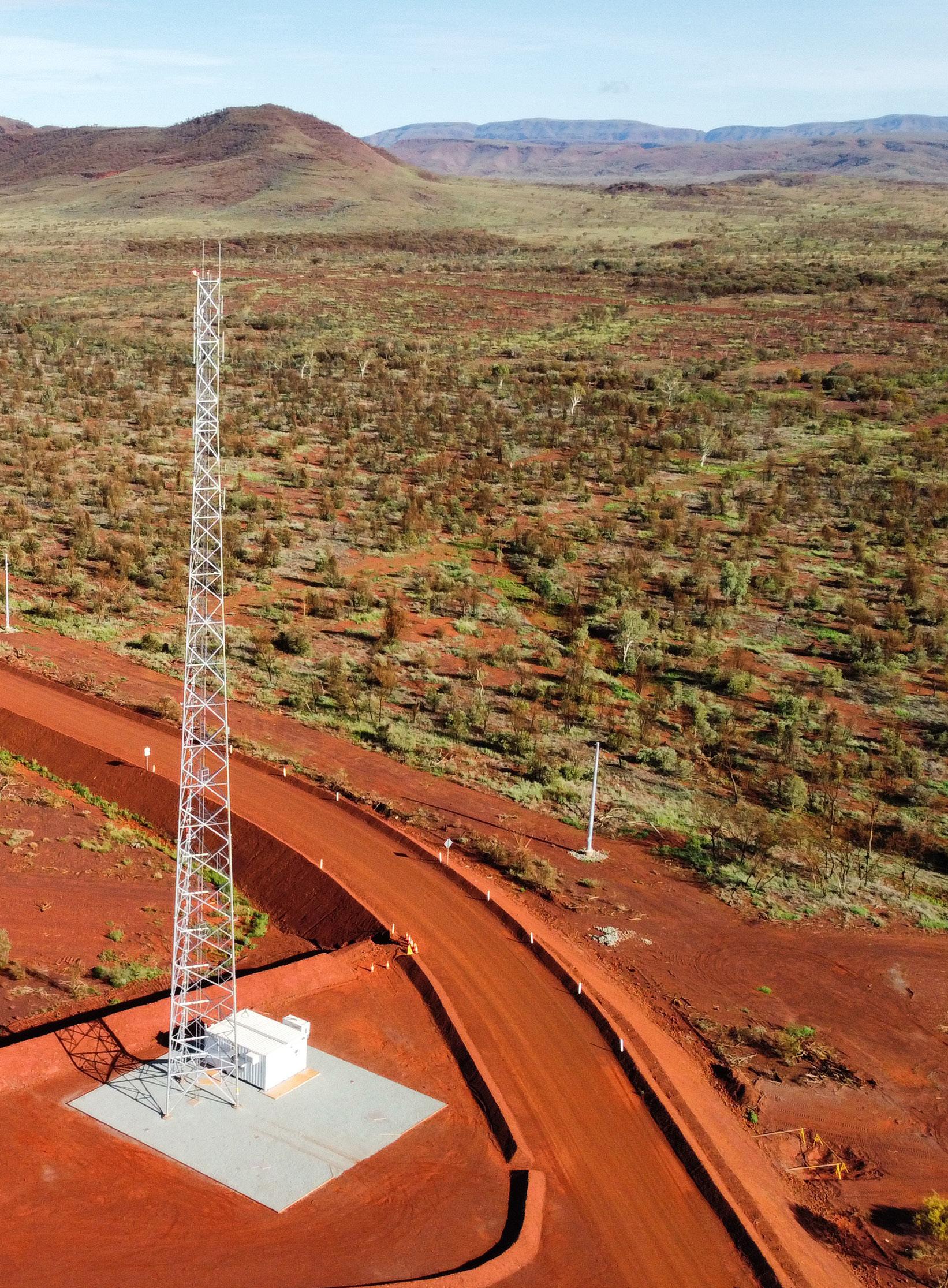
We are a proud Australian business, with a reputation for quality, engineering capability, and customer service.
LEARN MORE
SCOTT ROBSON EXECUTIVE DIRECTOR OF DEPLOYMENT, INDARA“We have over 22 years’ experience and, in that time, we’ve supported – or actively participated in – every wireless technology deployment for all the MNOs, government, and enterprise customers,” Robson asserts.
“We’ve been involved, first-hand, in some of Australia’s largest infrastructure projects and network deployments, from Australia’s National Broadband Network, through to more recently partnering with TPG and Optus for their 5G network rollouts, providing new infrastructure and professional services across our portfolio. We’ve also partnered with the government on regional connectivity programmes, to expand infrastructure in underserved areas, and MNOs through our industry leading structural engineering services subsidiary Structel. So, we’ve either been a part of, or heavily involved in, the end-to-end process with all the major deployments for the last 22 years.”
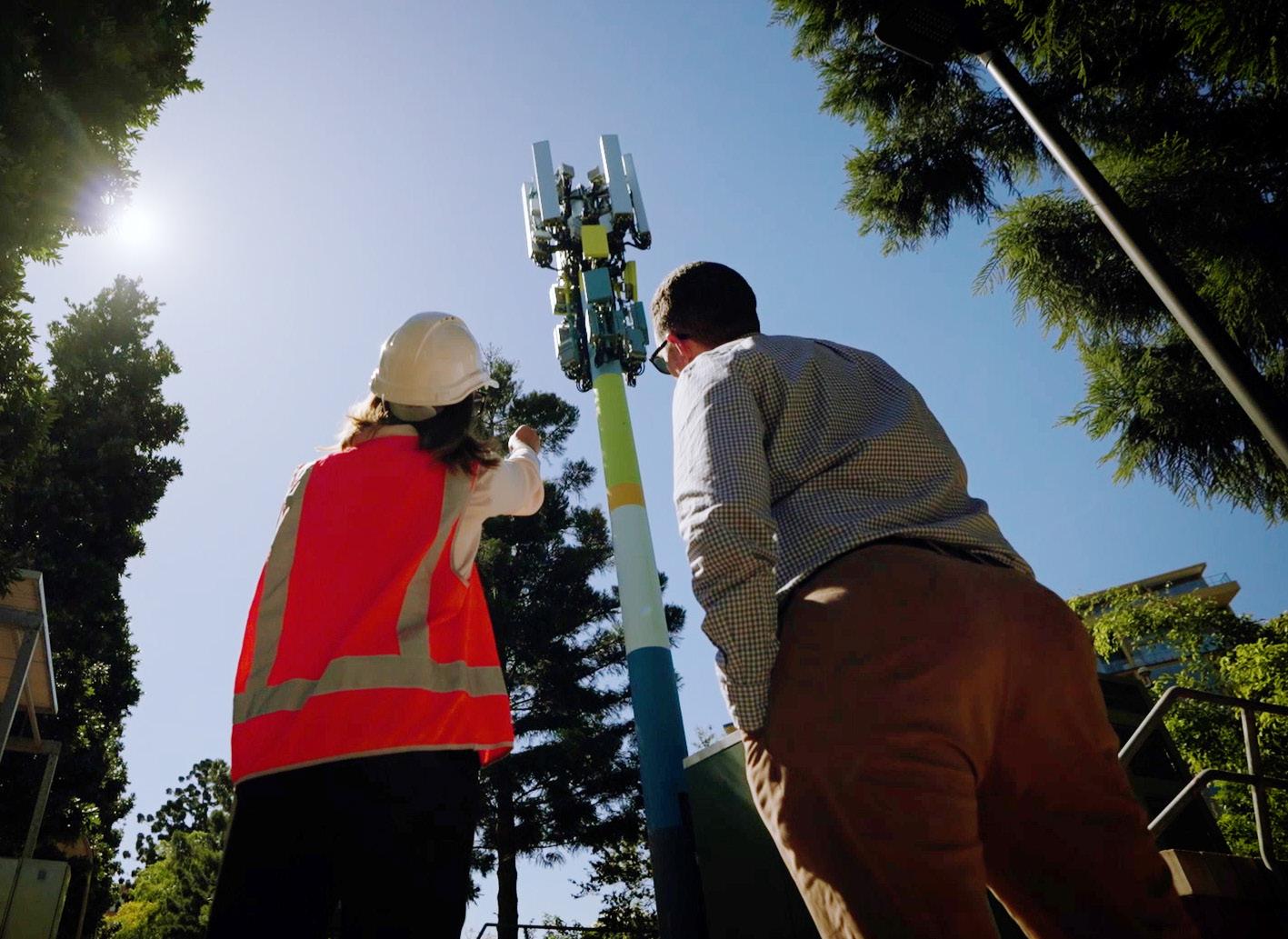
“What we offer to the industry is speed-tomarket: having the knowledge, expertise, and data that supports faster and easier deployment solutions for all customers”
With its vast and growing portfolio, Indara is able to provide their customers with more choice and more flexibility.

“How we differentiate ourselves lies in the way we develop and execute solutions for our customers through our vast, constantly growing digital infrastructure portfolio. For a customer, that solution might be a macro tower, it might be a small cell on our smart poles, or it might be a DAS through our inbuilding solution.
“Regardless, our focus is on developing the right outcome for our customers, and this approach is not simply anchored to a tower or infrastructure that we have today. As a company, we will continue to look for opportunities to expand our infrastructure and services to support our customers’ future plans and we’re supported by our shareholders – Australian Super and Singtel.”
To that end, Robson explains that Indara simply couldn’t exist without its partners. The company has built up an extensive partner ecosystem, working with leading providers such as CPS Technology and Roam Engineering.
“We have a curated panel of partners with national coverage and scope across professional services and construction, who make up our deployment ecosystem. And CPS is one of those key partners that spans both professional services and construction services.”
“We depend on CPS to deliver on our national build-to-suit (BTS) programmes. We rely on CPS to find and acquire a new site, obtain all regulatory approvals, complete the engineering design, and then construct and integrate these towers into our network. So, CPS is along the journey with us from start to finish. And we absolutely rely on their expertise to provide our customers with our speed-tomarket advantage.”

LeBLANC, 45+ years dedicated to the Australasian market, bespoke engineered manufactured solutions, innovation, and excellence…trusted partner, even by nature.



ACUTA your specialist partner committed to performance and quality, facilitating height safety, PPE and consumables to the telco, utilities, aviation, and construction sectors.

Similarly, Indara’s partnership with Roam Engineering is key to maintaining the company’s characteristic growth pace.
“A core part of our growth strategy is building new sites, and we've got many, many hundreds in progress. Roam is one of our major structure suppliers across the design, supply and installation of lattice towers and monopoles, and we use Roam structures right across Australia. So, whether it's a 50m lattice tower or a 30m monopole, we rely on Roam's engineering, talent, and expertise to supply us with towers that are designed to suit the location we've selected.”
In short, Robson explains, Indara’s partner ecosystem is essential to the work that it does and the results that it achieves.
“We work closely with our partners to succeed and we see them as an extension of our team.”
Smart cities, smart cells and pioneering technologies – the future for Indara Indara acquired ENE.HUB and HUB in the latter half of 2022. This company has been a global leader in the design and manufacture of multifunction poles and smart street furniture for the last 20 years.
“Through ENE.HUB as part of Indara, we deliver a wide range of products and services for public spaces. ENE.HUB smart poles, for example, are designed to support small cell deployment while also providing other smart city services. Integrated into the poles are features that provide local authorities with data to improve the safety and wellbeing of their community as well as supporting smart city services,” Robson explains.
“A key differentiator for Indara is that we are able to develop coverage solutions. We are able to deliver integrated wireless functionality into the smart city space, be it via the smart.node, smart poles, or smart

SCOTT ROBSON EXECUTIVE DIRECTOR OF DEPLOYMENT, INDARA
“We exist as a company to accelerate the transformation to the digital world”
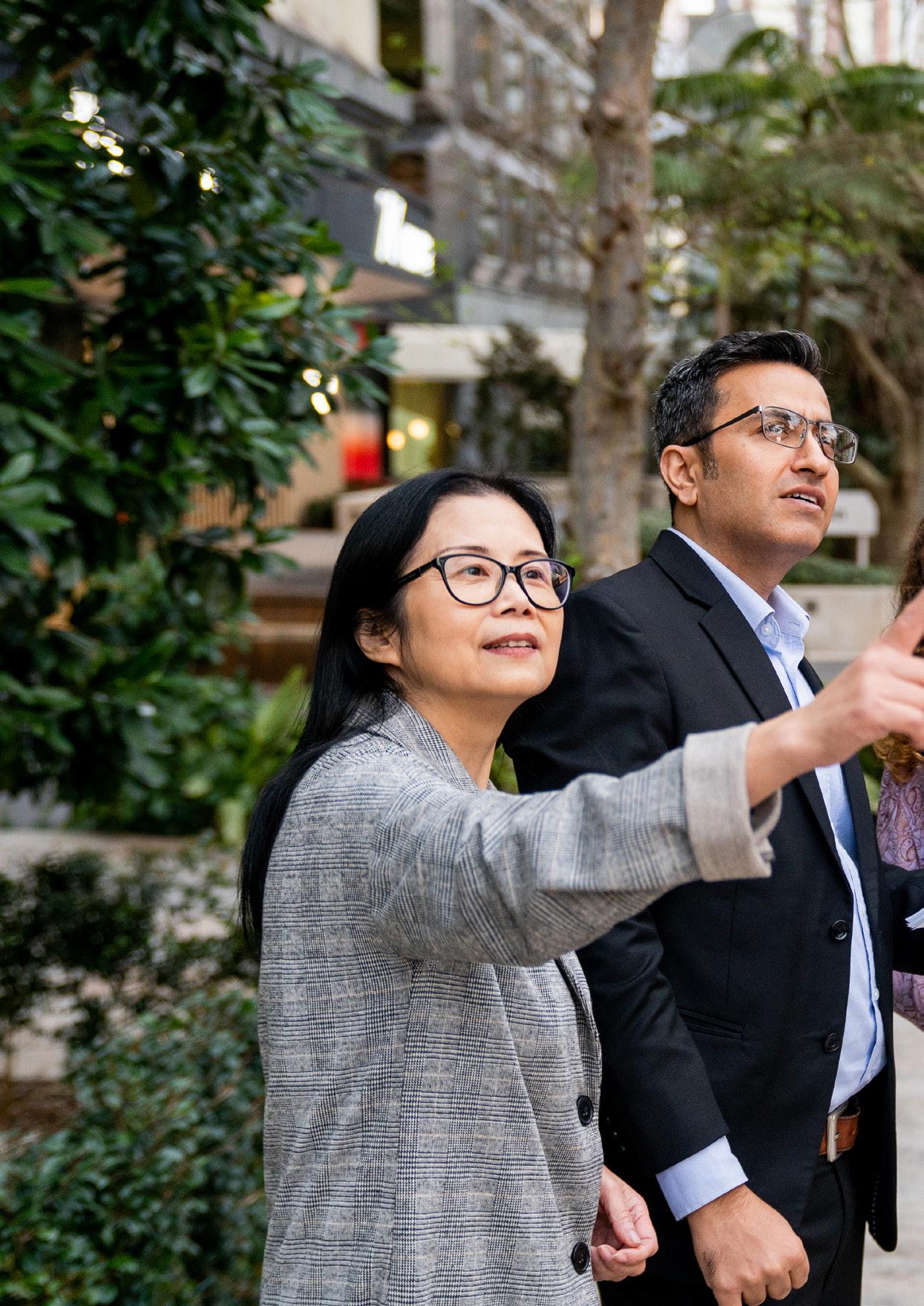
SCOTT ROBSON EXECUTIVE DIRECTOR OF DEPLOYMENT, INDARA
“Speed-to-market remains key. Digital Twin provides our customers with the information that allows for straight through processing and, therefore, faster, easier access to site”
furniture. Another unique product development has been our tower.node, which was originally designed for community sports field lighting, now reimagined with telecommunications in mind as well.”
This is just one component of Indara’s growth and diversification plan.
Another key strategic initiative is Indara’s digital transformation strategy, which consists of significant investment in all areas to improve our customer experience.
“Digital transformation is something we are continuously doing to change the way we interact with our customers and our ability to provide a consistent and high quality customer experience,” Robson states.

“We’re investing in the latest technologies and platforms that will support smart data and high-tech digital interaction to enable our customers to get on site faster and easier. Internally, this will improve efficiencies for our business and enable us to scale as we grow.”
One of the areas that Indara is heavily investing in is its Digital Twin capability.
“Digital twins are digital representations of sites that provide Indara and its customers with access to up-to-date site information, including information of each of our customers’ equipment on our infrastructure. Integrating that level of detailed data into our systems will enable our customers to make more accurate and informed decisions than ever before”.
“Speed-to-market remains key. Digital Twin provides our customers with the information that allows for straight through processing and, therefore, faster, easier access to site.”


 WRITTEN BY: MARCUS LAW
WRITTEN BY: MARCUS LAW
From improving decision-making to enhancing the understanding of the market and competition, data and data analytics (D&A) hold an increasingly important role for Chief Marketing Officers.

Research from Gartner conducted in 2022 found CMOs are increasingly targeting D&A and marketing technology. With customer data including everything from online purchase data, click-through rates and browsing behaviour to social media interactions, mobile device usage, and geolocation data, there is a huge quantity of available information.

But as consumers generate more data than ever before, the firm’s The State of Marketing Budget and Strategy 2022 survey also found that there are a number of resource challenges around dealing with that data.
The report found that CMOs must work with IT leaders to establish clear governance rules regarding the extent, scope and timing of IT’s involvement in business- or marketing-led digital projects. Successful partnerships involve clear definitions of safe zones and the co-creation of an adaptive governance framework.
“CMOs who cannot effectively partner with their IT and D&A counterparts will fail to build the necessary digital capabilities –such as omnichannel journey orchestration and personalisation – needed to deliver a strong customer experience (CX) and achieve customer acquisition and retention goals,” said Aparajita Mazumdar, Principal of Research in the Gartner Marketing practice. “CMOs must educate C-suite executives and senior IT leaders about the benefits of this delivery approach, while also acknowledging a mature and effective democratised delivery programme will not happen overnight.”

Turning vast amounts of data into useful information is a major challenge. CMOs must work with IT leaders to make the most of data analytics
A modern network must be able to respond easily, quickly and flexibly to the growing needs of today’s digital business. Must provide visibility & control of applications, users and devices on and off the network and Intelligently direct traffic across the WAN. Be scalable and automate the process to provide new innovative services. Support IoT devices and utilize state-of-the-art technologies such as real-time analytics, ML and AI. And all these must be provided with maximum security and minimum cost.
This is the power that brings the integration of two cloud managed platforms, Cisco Meraki and Cisco Umbrella. This integration is binding together the best of breed in cloud-managed networking and Security.
cisco.com










With an increase in martech investment comes a number of challenges, explains a report published by global management consulting firm Kearney.
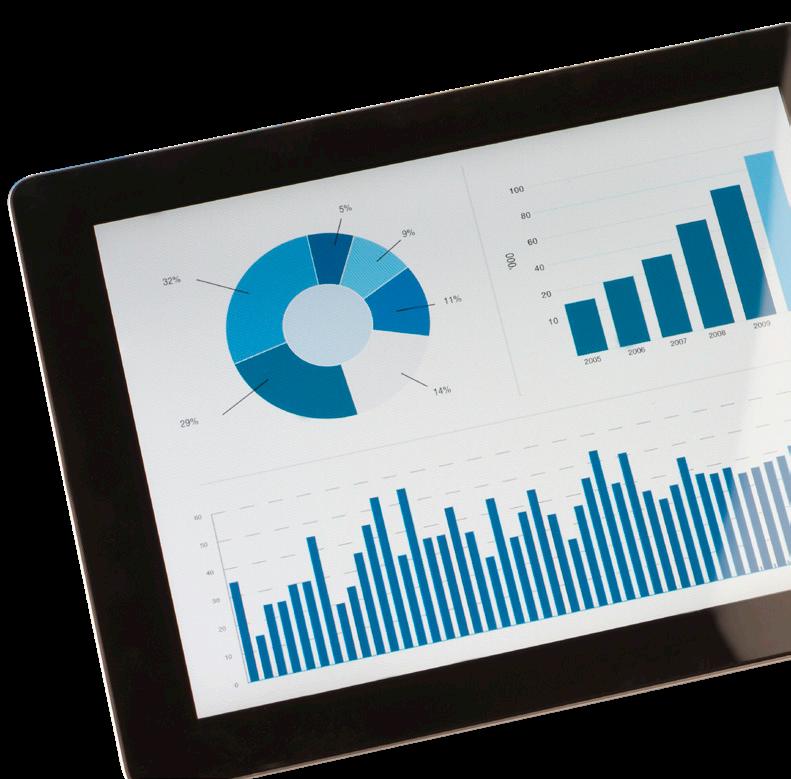
“Martech investment across companies continues to grow, contributing to a flurry of startups and M&A activities,” the report explains. “With this comes an increasing teaming of marketers, data scientists, product managers, and IT/solutions architects.”
Despite these organisational shifts and advancements, CMOs face many legacy martech challenges. For example, today’s martech stacks continue to be unnecessarily complex, redundant, and fragmented.
“Many organisations are running 60 or more applications, not to mention countless data sources and content and digital asset management platforms,” Kearney says. “The result is a lack of orchestration between tools, leading many organisations to gradually move toward single platforms and “one-stop shops.”

As Perry Krug, Director of Shared Services at Couchbase, explains, turning the sheer volume of data into useful information is a significant challenge.
“CMOs are under pressure from all sides for more meaningful, intuitive, and personalised experiences”
PERRY KRUG DIRECTOR OF SHARED SERVICES, COUCHBASE

A third of CMOs (33%) are more focused on the impact of rising number of channels and platforms than increasingly complicated consumer behaviour (17%), according to new research from integrated marketing data platform Adverity.
Titled ‘Recession, Resilience, & Marketing Data: What’s shaping the CMO’s roadmap?’, the report found that while 85% of CMOs agree the capacity to make data-driven decisions is a critical competitive advantage, many are struggling to ensure effective data management. Almost seven in ten (67%) feel the volume of marketing data available has become overwhelming –with 99% using 10 or more data sources and 52% using 14 or more.
“Especially in the digital age, CMOs are under pressure from all sides for more meaningful, intuitive, and personalised experiences,” he says. “Customers are generating more data than ever before as they interact with brands through channels from websites to mobile apps and even devices like smartwatches.”
Used correctly, this can give all the insights a brand needs. However, as Krug explains, turning this sheer volume of data into useful information is also one of the biggest challenges marketers face.
“To deal with this, marketers need three things,” he says. “First, they

need to remove any barriers that keep data locked away in silos – for instance, limited to certain channels or certain teams. If marketers don’t have the complete picture, they can’t make fully informed decisions.

“Second,” Krug adds, “they need all the data to be immediately accessible. If data takes time to process, marketing teams aren’t acting on the most up-todate information. And if data can only be queried in certain ways, then marketers will be limited in what they can ask and what insights they can gain.

“CMOs who cannot effectively partner with their IT and D&A counterparts will fail to build the necessary digital capabilities”
APARAJITA MAZUMDAR PRINCIPAL, RESEARCH, GARTNER MARKETING






The power of data and analytics means businesses are now able to draw together multiple pieces of information about customers to drive highly targeted marketing outreach”
CUSTOMER ENGAGEMENT DIRECTOR, SAGACITY

The world has welcomed a new era of marketing technology, according to a report by Kearney. The martech stack had become an unworkable collection of “shiny objects”, say analysts, with thousands of applications and datasets being added to the mix, often without ever being used.


Kearney’s Associate Partner Jason Wehner, Vice President Jarosław Podsiadło, and Consultant Alex Wang compiled more than 40,000 martechrelated articles published in the past three years.
Kearney’s findings indicate AI and voice solutions have been welcomed as new applications, but the new “data and analytics” era requires the ongoing evolution of marketing capabilities, including tackling legacy challenges.
Today’s martech stacks continue to be unnecessarily complex, the report found, with some organisations running more than 60 applications alongside an unnecessary wealth of data sources as well as content and digital asset management platforms. This dizzying array of options has led organisations to move toward single “one-stop-shop” platforms.


“Finally, data needs to be put in the hands of the people who need it. If marketers have to put every query through a dedicated research or database team, they can’t be as agile and run the risk of information getting lost in translation.”
All of this can mean a substantial change in database architecture, especially for organisations that rely on traditional relational databases. Nevertheless, as Krug explains, this change can be made easier: by, for instance, adopting cloud services or adopting modern platforms that still use familiar programming languages, so that

hard-won skills aren’t rendered obsolete.
“An example of this approach is Domino’s,” he describes. “As the largest pizza company in the world, with almost 18,000 stores in more than 90 countries and more than 50% of worldwide sales across digital channels – including smartwatches and Slack – it had a huge wealth of data to use. By adopting a modern database, marketers can now pull out incredibly granular data in realtime as and when they need it – creating ad-hoc, highly personalised marketing campaigns targeted at specific audiences.”
“Customers are generating more data than ever before as they interact with brands through channels from websites to mobile apps”
PERRY KRUG DIRECTOR OF SHARED SERVICES, COUCHBASECouchbase Capella Overview
Analytics joining the dots
“The power of data and analytics means businesses are now able to draw together multiple pieces of information about customers to drive highly targeted marketing outreach,” explains Scott Logie, Customer Engagement Director at Sagacity, and Chair of the Customer Engagement Committee at the Data and Marketing Association (DMA). “The days of blanket advertising to your entire customer base are gone, with those that continue doing this not only wasting time and money but also being viewed as increasingly outdated by their consumers, while many of their competitors hit the target with increasing accuracy.”
If used effectively, analytics tools can join the dots between people and products. “It should help answer key questions about who your customers are, where



they came from and the value of what they’ve bought, but then also what they are likely to buy in the future, through which channel and what value they will drive in the future,” Logie explains. “This data can support more targeted and creative marketing engagements and develop better customer relationships as a result.
“For example, if a telco is launching new upgrade bundles that combine multiple phone deals with data or streaming services, analytics can be used to identify the segment of customers who are likely to be interested, such as families that all have multiple phones registered to the same household. Ultimately, people buy from people and using analytics enables businesses to increasingly treat customers as individuals, make marketing more cost-effective, and avoid damaging relationships.”


 WRITTEN BY: MARCUS LAW
PRODUCED BY: MICHAEL BANYARD
WRITTEN BY: MARCUS LAW
PRODUCED BY: MICHAEL BANYARD
Liberty Global is a world leader in converged broadband, video, and mobile communications, and an active investor in cuttingedge infrastructure, content, and technology ventures. With investments in fibre-based and 5G networks, Liberty Global plays a vital role in society, currently providing over 86mn fixed and mobile connections while also rolling out the next generation of products and services, as well as readying its networks for 10Gbps and beyond.
But as Pieter Vervoort, Liberty Global’s Vice President for Entertainment Products, explains, there is much more to Liberty Global than providing networking solutions to customers.
“Our core mission is to build tomorrow's connections today,” he explains. “We want to bring people together using the power of technology, and especially our network, but also, the services that we deliver to the end-user are then a central piece in those connections. We matter in people’s daily lives. Especially during the pandemic period this became very clear to us but also to our consumers. Reliable connectivity and great entertainment were highly appreciated when working from and living at home.”
An experienced executive professional with 25 years of international experience in the global technology sector, Vervoort spent 17 years working in consumer electronics



Through a multi-cloud and AI-powered approach, EPAM designs and delivers intelligent solutions for your business, powering unparalleled client experiences at scale. With end-to-end solutions in cloud, cybersecurity, IoT and responsible AI, EPAM is uniquely positioned to be your partner in optimization.




Discover your true business value today.

before joining the telecoms industry a decade ago, starting with the innovative Dutch cable company Ziggo.
“When I joined the group in 2015 – when Liberty Global acquired Ziggo – Liberty Global was very much a traditional cable company,” he comments. “At that time, we were active in over 12 markets in Europe and also in Latin America. Today, we are focused on fewer markets, but we are a fixed mobile converged player and have fully integrated broadband, video and mobile into these companies.”
As Vervoort explains, Liberty Global is combining the best broadband and mobile networks under brands such as Virgin Media-O2 in the UK, VodafoneZiggo in The Netherlands, Telenet in Belgium, Sunrise in Switzerland, Virgin Media in Ireland, and UPC in Slovakia, creating what he describes as National Champions.
“In the markets where we are active, we like to think of ourselves as National Champions,” he continues. “We are either the number one or two player in those markets in which we are active. Our portfolio and our markets have changed quite a bit – you could say that, nowadays, we are as much a mobile company as a fixed company.”
TITLE: VICE PRESIDENT ENTERTAINMENT PRODUCTS
COMPANY: LIBERTY GLOBAL
INDUSTRY: TELECOMMUNICATIONS
LOCATION: AMSTERDAM
Responsible for the complete current and future Entertainment Products portfolio management of Liberty Global. The product portfolio aims to deliver a full, consistent and aggregated entertainment experience across several set top boxes and other relevant platforms for our consumers both in and out of the home.
Vervoort has been with Liberty Global since 2015, when he joined Liberty as VP Connectivity Products. Before that, he had been at Ziggo since 2012 as an executive leading its product portfolio & innovation for connectivity, entertainment, digital & programming. Prior to his tenure in telecom, he worked for 17 years with Philips in various executive international roles in finance, sales, marketing, product strategy and business management for the Philips TV group.

“Our portfolio and our markets have changed quite a bit – you could say that, nowadays, we are as much a mobile company as we are a fixed company”
PIETER VERVOORT VICE PRESIDENT ENTERTAINMENT PRODUCTS, LIBERTY GLOBAL

Rather than a sole emphasis on fixed-mobile convergence and broadband packages, Liberty Global instead offers an integrated entertainment experience to consumers, with what it describes as the superaggregation of multiple services. Central to this strategy, Vervoort explains, is providing consumers with one place where they can find all of their personal content, all served in a very intuitive manner.
Its latest product, the Horizon 4 superfast all IP mini set-top box offers 4K Ultra HD picture quality and an upgraded version of Liberty’s ‘GO’ mobile app, enabling customers to watch programmes on the go, whenever and wherever they want.
“In the last couple of years, we’ve been putting a lot of energy into developing our

“We very much believe that consumers are overwhelmed with the amount of video content that they can get these days. As a result, it’’s important that they come back to a place where they find all their content, and it’s served to them in an intuitive manner”
PIETER VERVOORT VICE PRESIDENT ENTERTAINMENT PRODUCTS, LIBERTY GLOBAL
next-generation video platform, which we call Horizon,” Vervoort comments. This has been rolled out to millions of households, with consumer feedback very positive: it reduces churn, thereby increasing day-to-day usage.
“We have really seen that people have embraced that concept. The platform brings together the world of linear TV, time-shift TV, and on-demand, but also over-the-top streaming – all brought together in an intuitive way.”


In addition to providing broadband, video, and mobile communications, Liberty Global is a very active investor in cuttingedge infrastructure, content, and technology ventures, such as ITV in the UK, Plume for smart wifi, Lionsgate for content, AtlasEdge for edge computing, and the motorsport series Formula E. Its content portfolio is positioned
to capture changes in the consumption of entertainment, sports, and gaming, providing a holistic experience to customers.
“We very much believe that consumers today are overwhelmed with the amount of video content that they can get these days,” says Vervoort. “As a result, it's important that they come back to a place where they find all their content and it's also served to them in a straightforward way. This means that search and discovery journeys for content on the platform need to provide the end user with what they expect. This can be done very easily by just using our voice assistant.”
In a competitive environment where consumers face overwhelming quantities of media, providing them with a frictionless experience is absolutely essential. As Vervoort explains, these ‘digital journeys’



“CommScope Home Networks was thrilled to collaborate with Liberty Global on the design of the Mini TV Box, a device manufactured by CommScope, and could not be happier with its continued success. We are committed to continuing our support for Liberty Global, delivering solutions that achieve their sustainability goals. By embedding sustainability into the very product design, we can deliver the features and content consumers want, manufactured in a way we can all feel good about.”


Joe Chow, President, Home Networks,

CommScope Home Networks is pushing the boundaries of technology to deliver innovative solutions that are built with sustainability in mind. Our global team of employees, innovators, and technologists empower customers to anticipate what’s next and invent what’s possible.
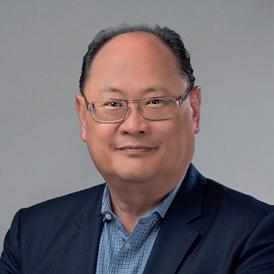 CommScope
CommScope
– combining high-speed internet with the capabilities of its streaming video platform –drive customer satisfaction.
“These digital journeys need to be absolutely frictionless. We do have traditional channels as well. We still have call centre agents, and we have engineers
available to visit customers’ homes in the case of an unforeseen problem. But our digital touchpoints – our apps, websites and user interfaces – are critical to our success.”
Central to helping provide this seamless experience when it comes to video is the Reference Design Kit (RDK) platform, an open-source software platform supported by Liberty Global and Comcast, on which the Horizon 4 set-top box was developed.
“The RDK platform allows us to create a very rich and fully-integrated video experience,” Vervoort explains. “It also allows us to be in full control of our own destiny and roadmap. That also comes with a challenge. So, you need to define the roadmap that you want carefully, and then make sure that, with the RDK software and your own engineers, you're building what you're aiming for.”
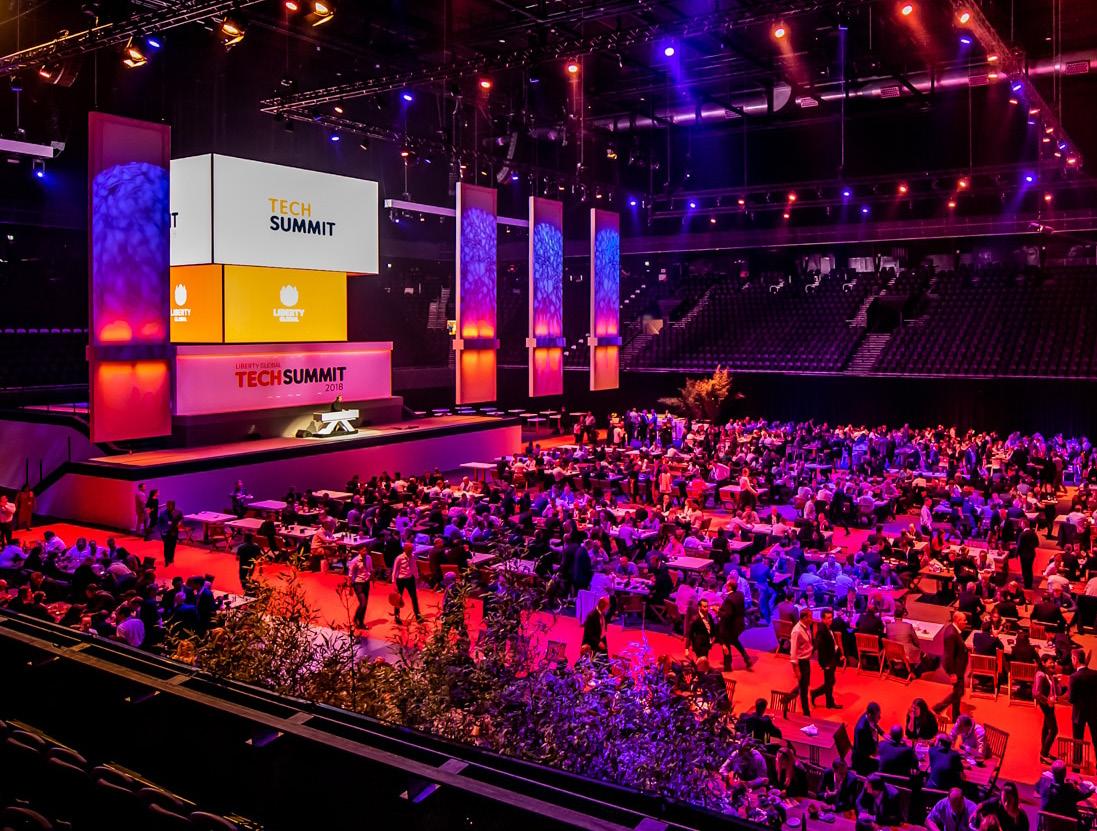
“Our digital journeys need to be absolutely frictionless. We do have traditional channels as well. But our digital touchpoints – our apps, websites, and user interfaces – are critical to our success”
PIETER VERVOORT VICE PRESIDENT ENTERTAINMENT PRODUCTS, LIBERTY GLOBAL
Liberty Global currently provides over 86 million fixed and mobile connections and is rolling out the next generation of products and services, while readying its networks for 10Gbps and beyond.

 Liberty Global Tech Summit
Liberty Global Tech Summit
To enable its broadband and video offer, Liberty Global works alongside many partners. Its partners include Nuance, Gracenote, ThinkAnalytics, Cadent, Conviva, and Adobe. When it comes to hardware partners, Liberty Global works with the likes of CommScope, Universal Electronics, and Omni for remote controls, while working with various software partners such as Infosys, Prodapt, and EPAM.
“It's not possible these days to innovate and do everything yourself,” explains Vervoort. “We do a lot in-house. So, we have a huge, skilled products and software development team, but we also like to tap into the scale and skills of our partners.”
One such partnership is with network infrastructure provider CommScope, which has been a long-term set-top box and modem partner for Liberty Global, with its latest Horizon 4 all IP mini streaming box featuring heavily.
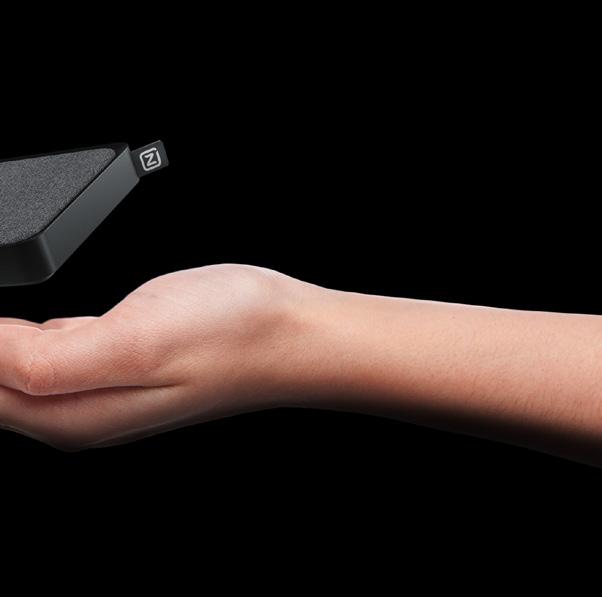

“Together,” Vervoort adds, “we have developed products that are now in consumer homes by the millions, and they’ve proven to be a very reliable, trustworthy partner. Our engineers and our product people work hand-in-glove with the teams at CommScope.”
What’s more, Liberty Global has an extensive network of content partnerships, from global streaming companies to local broadcasters, ensuring a truly comprehensive offering for customers.
“We have content partnerships with the global streamers – Netflix, YouTube, Disney Plus, Amazon Prime, and Apple. But we also have partnerships with a lot of local players, local broadcasters in most cases. Players like Sky, ITV, BBC, SBS, and RTL are critical in making sure that the end product that we deliver when it comes to video is a complete product.
“Without partnerships, something like Horizon is not possible. You cannot do that in isolation.”
As Vervoort explains, the future at Liberty Global is looking bright. The platform will continue to be rolled out to more customers, while the amount of content available will continue to increase.
“With our Horizon platform, we are now for the first time active in all the markets where we operate,” he comments. “Now, we need to further penetrate the base and roll it out to more consumers so they can enjoy the latest and the greatest.”
Further down the line, the level of content will be expanded into new areas and possibilities, from audio and gaming to smart home integration, as consumers look for more holistic experiences.



Read more
 We implemented our energy harvesting technology in the UEI ETERNA voice remote, it’s powered by our Xtreme Low Power System-On-Chip and our high-density photovoltaic panel.
We implemented our energy harvesting technology in the UEI ETERNA voice remote, it’s powered by our Xtreme Low Power System-On-Chip and our high-density photovoltaic panel.
As the largest manufacturer of control solutions, our objective is to help create a battery-less world.
“That expansion of the definition of entertainment is not something that we have come up with, but that's something that consumers are looking at the entire entertainment space. It's very logical for us, as a platform, to follow that definition and to
make sure that things like gaming and smart homes also find their way onto the platform.”
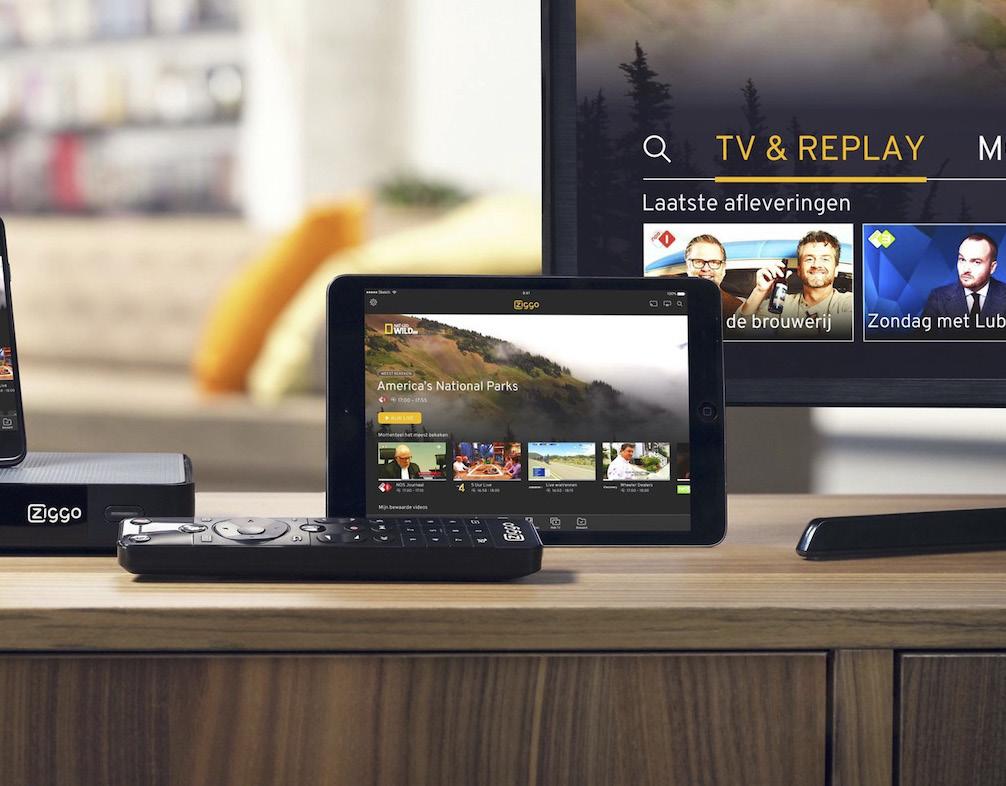
As customers increasingly look for seamless experiences, Vervoort predicts that the future will see further convergence between fixed broadband services and mobile. “People less and less find it important to fully realise on what kind of platform they sit,” Vervoort says. “As a result, the mobile experience and the WiFi experience need to be absolutely seamless. It also comes with the obligation that the WiFi coverage needs to be there at speed in every corner of your home. It’s the same for mobile –every corner of your country needs to be covered with enough bandwidth.”
Liberty’s latest set-top box is designed with this increased fixed-mobile convergence in mind. “Our latest set-top box is very small and fully IP-based,” Vervoort explains. “But it's also fully cloud-based. With that, it can run over a hybrid fibre coaxial (HFC) cable, it can run
“The challenge is to remain relevant in the fastchanging, very competitive video landscape. The amount of content is simply overwhelming. It’s coming from every angle”



over fibre, it can run over DSL, and it can run over a mobile network.
“As a result, it becomes agnostic and independent of its video delivery from the network. That's critical to us because we also have various fibre rollout plans in some of the markets in which we operate with our brands.”
As competition between streaming platforms continues to increase, and consumers are faced with ever-more choices – with Netflix admitting last year that competition was eating into its growth – new strategies are necessary.

“If we look at the industry as a whole, I think there will be even more competition in future,” Vervoort predicts. “We already saw the rise of global streamers with Netflix and Disney, and all the others are following. You can find video services everywhere now. And, with players like TikTok and Instagram, a lot of consumers get a bit overwhelmed.”
As a result, with uncertain economic conditions globally causing consumers to re-evaluate and cut back on streaming services, providing bundled services will be central to Liberty Global’s strategy in future.
“We foresee a need to offer an aggregated, integrated, curated experience,” concludes Vervoort, “not only from a user interface perspective but also financially.
“Not everybody will sign up for 10, 11, or 12 different subscriptions, so there is an opportunity to also aggregate or bundle our services. By bundling various subscriptions, allowing people to pick and choose, this will allow customers to be more flexible in the way they consume their video content.”

IBM is pushing the limits of what can be done with quantum processors. We speak with Richard Hopkins, Distinguished Engineer at IBM, to find out more
 WRITTEN BY: MARCUS LAW
WRITTEN BY: MARCUS LAW
hen IBM previewed its first quantum development roadmap in 2020, it laid out a pioneering timeline for progressing quantum computing.

In 2022, IBM updated its development roadmap to present an equally ambitious plan for scaling quantum systems beyond old limitations and toward advantage. At this time, it also unveiled the 433-qubit Osprey processor, just one year after breaking the 100-qubit barrier with its 127-qubit Eagle chip.
“We are continuously scaling up and advancing our quantum technology across hardware, software and classical integration, to meet the biggest challenges of our time, in conjunction with our partners and clients worldwide,” said Dr Darío Gil, Senior Vice President and Director of Research at IBM. “This work will prove foundational for the coming era of quantum-centric supercomputing.”
This year, IBM is on track to deliver its 1,121-qubit Condor processor, which will push the limits of what can be done with single-chip processors and controlling large systems.
Richard Hopkins, Distinguished Engineer at IBM and Fellow of the Royal Academy of Engineering, has spent the last 30 years with IBM, working with clients and solving their problems, particularly in the UK government space.
As he explains, the state of quantum for IBM in 2023 is unique in a number of ways. “First of all,” he describes, “it’s probably the first time in IBM that I’ve seen a roadmap published quite so far out as we’ve published it.
“We’re publishing at least three years out every year. In that regard, it is entirely different from anything else I’ve seen us do in 30 years.”

This roadmap is founded on principles of transparency, Hopkins explains. “We recognised very early on that there was a potential for hype and misinformation,” he adds. “As a result, we have adopted a transparency policy to the likes of which I’ve never seen, and that has worked enormously well.”
The roadmap to advantage Capable of solving problems up to 100 million times faster than traditional computers, quantum computing has the potential to comprehensively speed up processes, on a monumental scale. Quantum computers use qubits, which can be 1 and 0 simultaneously, allowing these machines to handle much more complex problems. Quantum computers might one day run revolutionary algorithms that could, for example, search unwieldy databases or factor large numbers — including, importantly, those used in encryption.
“This year we will hopefully announce our Condor processor with over 1,000 qubits,” comments Hopkins. “That, in itself, is a good step forward, but it's not enough in its own right.”

“We recognised very early on that there was a potential for hype and misinformation. So, we adopted a transparency policy, the likes of which I’ve never seen”
IBM’s quantum roadmap also explains its plans to bridge multiple quantum processing units (QPUs) together. These techniques, it says, will be used to help it reach a 4,000 qubit machine.
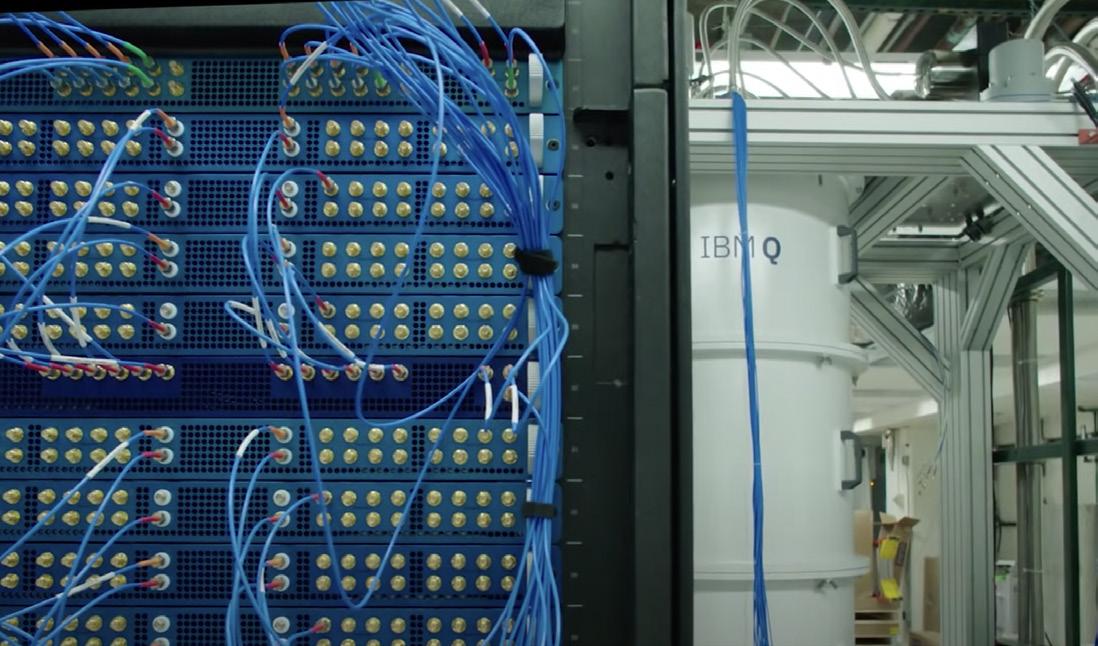
“We’ve also announced that we intend to improve the gate fidelities and the coherence of our chips, so that we’ll be able to execute 100 qubits with 100 gates: a 100 by 100 challenge with error mitigation,” Hopkins adds. “That will be another leap forward in terms of accuracy and coherence.
“It’s a multilayer roadmap and the idea is that all those things are going to come together,” Hopkins explains. “These aren’t scientific projects, they are engineering
projects, all aimed at actually delivering real-world benefits for our clients.”
Quantum
machine learning
Research has shown that quantum computers have the potential to boost the performance of machine learning (ML) systems, and may eventually power efforts in fields spanning everything from drug discovery to fraud detection.
Most people will have been inconvenienced at some point by a payment being refused, or may perhaps have fallen victim to a fraudulent transaction. Algorithms used in the payment card industry mean this is, fortunately, a rare occurrence.
“We are continuously scaling up and advancing our quantum technology across hardware, software and classical integration, to meet the biggest challenges of our time”
DARIO GIL SVP AND DIRECTOR OF RESEARCH, IBM
The Sounds of IBM: IBM Quantum WATCH NOW
But, as Hopkins explains, even small improvements to those algorithms will have a sizeable impact, with evidence already demonstrating that quantum computers can help to resolve these common problems.

“We’ve recently published a paper where we took information about real debit and credit card details and transactions, and passed them through a quantum algorithm and two conventional algorithms, XG Boost and Random Forest,” Hopkins says.
“Even with today’s quantum hardware, providing we let the quantum computer select the parameters to predict the fraud, then we would get the same level of accuracy out of an intermediate-scale quantum computer,” he explains. “That, in itself, is not bad going, but it doesn’t get you to that quantum advantage.”
However, as Hopkins describes, the quantum algorithm was able to make qualitatively different judgements and, as a result, come to different conclusions.
“When we look at these results more closely, we found that, first of all, the quantum algorithm chose different parameters,” he says. “And then, when we looked at the results again, we saw that it was making qualitatively different judgments. The accuracy was the same, but it was making a judgement on different elements and coming to different conclusions in many cases.”
As Hopkins describes, these hybrid applications will have a number of use cases, particularly in the world of ML.
“I think what you’re going to see, especially in the ML space, is that these hybrid algorithms will emerge fairly early on, where you are combining the power of an existing algorithm that can run at high speed with a quantum algorithm, which will run slower, but will actually take a qualitative different decision, using a completely different algorithm than the other one,” he says.

“I think what you're going to see, especially in the ML space, is these hybrid algorithms emerge fairly early on”
RICHARD HOPKINS DISTINGUISHED ENGINEER, IBM
The arrival of quantum computers will make quantum security a vital part of the new economy, according to Dr Andrew Shields, Head of the Quantum Technology Division, Toshiba Europe. What’s more, the WEF predicts that 20 billion devices will need to be upgraded or replaced to support new forms of quantum-resistant encryption over the next two decades.

“Even though we may still be a handful of years away from quantum computers entering the mainstream, hackers are already using scraping and harvesting techniques to gather encrypted data, which they’ll be able to break into once they gain access to the power of a quantum computer," explained Dr Shields. “This means that organisations need to future-proof their data by protecting it now, especially if it’s information that remains sensitive for a long time, such as genomic or financial data.”

According to a report by Markets and Markets, the quantum computing market could be worth more than US$4bn by 2028, growing at a CAGR of 38%.
Factors such as the rising adoption of quantum computing technology in various industries and sectors, together with increasing investments in quantum technology, are driving the market, which is currently valued at US$866mn.
According to the research, countries such as the US, Germany, Japan and China are expected to be the key markets for quantum computing services.


Use more image captions as often as possible
“In the commercial space, you’ll see these hybrid algorithms begin to dominate, where you’re using both together to come up with something that’s better than we could do today on a classical computer or even on a supercomputer.”
The potential for quantum computing is immense. It can open up new opportunities in AI and ML, with a growing research field in quantum ML identifying ways that quantum algorithms can enable faster AI.
“Ideally we want to completely isolate people from the idea that they’re using a quantum machine,” Hopkins says. “The vision is, you write a programme that performs some predictions or optimisation, or generally does what supercomputers are good at. And then, you’ll send that off by calling a simple operation. Some of that query will run on a conventional computer, some of which might run on a GPU, some of which will run on one or more QPUs, but the idea is, eventually, it’ll be completely invisible to you.”
As Hopkins explains, quantum is likely to be more useful in the future than many had perhaps conceived.
“Quantum is going to be a much more powerful capability than, I think, many people were envisioning,” Hopkins concludes. “I think people had in their minds that quantum computers don’t become useful until you’ve got logical qubits. What we’re working out is how to get value out of these things for our clients in the near term.
“Eventually, I’m sure we’ll get to very large numbers of logical qubits, but we don’t want to wait until that point to get value, and neither do our clients. So, we’re doing something different.”


 WRITTEN BY: TOM SWALLOW
PRODUCED BY: KRISTOFER PALMER
WRITTEN BY: TOM SWALLOW
PRODUCED BY: KRISTOFER PALMER

Understanding what goes on behind the scenes of an organisation allows you to appreciate its achievements and the operational scale that it has to work to. This is the striking realisation to be had when looking into the journey of the UK’s largest children’s charity, Barnardo’s, founded in 1867 by Thomas Barnardo.
He set out to provide homes and a basic education for disadvantaged children–this was a pivotal thread throughout the charity’s history that echoes through its work in the modern day.
The charity’s value of leadership has spanned the generations. One case is particularly visible among the data and insight team: in 2017, Remi Martins-Tonks brought his economics expertise into the charity’s fold in his search for a role that would fulfil his own values in alignment with those of his employer, job, and the team in which he works.
“The values on which Barnardo’s was established more than 150 years ago remain the same today. Last year, Barnardo’s provided essential support to over 357,000 children, young people, parents, and carers through more than 790 services and partnerships across the UK,” says Martins-Tonks.
“We provide vital support to children and families who need us most to help with a range of issues from mental health to child sexual abuse and children in care.”


Such motives extend beyond the requirements of Martins-Tonks’ role, supporting the backend operations of the charity to enable teams with data-driven insights and products. To understand how this is incorporated into day-to-day functions, it’s important to recognise how it can support the team’s overall function.
“The charity has changed over the years as it responds to the world around it and is moulded by the society in which it operates to provide services that people need today. But when we go back to the basics of what informed our founder’s work, which was about giving children the best possible start in life, then it’s just as accurate today,” says Martins-Tonks.
Barnardo’s values are: “respecting the unique work of every person, encouraging people to fulfil their potential, working with hope, and exercising responsible stewardship”.
With the organisation venturing further into the digital era, data has been selected as a critical component of its ongoing strategy,

“We’ve been growing ever since because there’s been more emphasis on the benefits that data provides”
REMI MARTINS-TONKS HEAD OF DATA AND INSIGHT, BARNARDO'S
allowing Barnardo’s to continue its vital work. With a legacy dating back more than 150 years, the charity is continuously evolving to incorporate more digital solutions that streamline the work of other teams, therefore encouraging the wider use of data to carry their work forward.

“You can’t really take your foot off the pedal at the moment. At Barnardo’s, we’ve done a few things,” Martins-Tonks says. “Firstly, we’ve appointed a new head of emerging technology, who is a peer to me. Their specific role is to do with the digital trends and how we get the most use out of them.”
An example of this application is aligned with continuous improvement,
TITLE: HEAD OF DATA AND INSIGHT
COMPANY: BARNARDO'S
INDUSTRY: NON-PROFIT
LOCATION: ENGLAND, UK
Remi Martins-Tonks is the Head of Data and Insight at Barnardo's, the UK’s largest children’s charity. With a background in economics, statistics and data analysis, Remi has been with Barnardo's for six years, including two years in his current role. His team are working to develop data products and embed a data culture throughout the organisation which improves decisionmaking and enables better outcomes for the children and young people which

which resulted in the adoption and wider use of systems like robotic process automation (RPA) to uncover data and insights at a lower level. As the team adheres to this principle, a number of apprenticeships have taken on critical roles within the team, learning areas such
as data analytics, data science, and AI and machine learning.
“We’re in the process of refreshing our digital and data strategy, which is going to focus even more on future digital trends, now that we’ve got a more solid foundation to build upon,” Martins-Tonks explains.

Training and career development is indeed a key part of the charity’s strategy for all-round social support, which, in turn, has a profound impact on its ability to help and support children, young people and families in the UK. The end point for delivering value through data is down to the product teams, enabling various teams to reap the benefits of its in-house data products.
“We’ve got one team that is focused on creating data products for children’s services and one on support services–building

“The key is being able to embed the use of data to help us with our core purpose”
Barnardo’s data and insight journey supports children, young people and families in the UK
REMI MARTINS-TONKS HEAD OF DATA AND INSIGHT, BARNARDO'S
products for our finance, HR, recruitment, and the property and facilities teams. We're also about to set up a product team focusing on Barnardo’s Trading company.”
It’s all well and good having teams for data and products in place, but how can we understand the work that goes into their products behind the scenes, as well as the effect they have on the charity and the people it helps?
Classification of the two can be complex, but to understand them, it’s crucial to assess the teams’ data purview: across all areas of the charity, data is becoming firmly embedded–though the application, uses, and outcomes depend on the team or function it informs–collecting information across a range of parameters, not only informing what each team needs at their fingertips via a dashboard,
but assessing different measures of success to determine next steps.
As Martins-Tonks explains this, he also provides an example of a recent data product designed to aid the mental health support which the charity provides. “The feedback that we’re getting from that data product is that it’s saving them time, because they’re not having to run reports manually and do things in Excel.
“This means that our teams can spend more of their time helping children and young people. Supporting those teams allows them to consider who’s been referred to the service and subsequently plan their delivery based on the person’s requirements. It also means we can begin analysing our outcomes data and truly understand the impact these services make.”


A qualified doctor, Thomas Barnardo founded the charity to support children who needed homes and a basic education in the 19th century.
Born in Dublin, Ireland, Barnardo moved to London to carry out his medical training, but couldn’t ignore his sentiments towards those in the city who were living in poverty.
He witnessed first-hand an abundance of children sleeping on the streets, which influenced him to give up
his endeavours in the medical profession to instead pursue what seemed to him to be an urgent need to do more to help children and young people.
This birthed the charity that exists today, which continues to carry out his tireless work. Barnardo’s first step to building the charity was setting up a ‘ragged school’ to allow children free, basic education preceding the creation of the 1889 Children’s Charter and 1908 Children’s Act in Britain, which aimed to alleviate child poverty.
Ingrained into the organisation is its passion for giving children and young people the best possible start in life, but having an educational culture means the benefits are twofold. From an employment perspective, Barnardo’s prides itself on supporting the careers of its team members, and this has a knock-on effect on their commitment to the cause and the outcomes they produce.

As part of this educational culture at Barnardo’s, it works to ensure that all new

This is especially noticeable in Martins-Tonks’ data and insight team–it’s all about reflection.
“I always make sure I mention the importance of learning–and that’s learning by experience. That means working on something, delivering on it, and then reflecting: what did you achieve, what could have been improved, and what you'll do differently next time,” says Martins-Tonks.

“It’s also part of a wider data culture. If colleagues are supported to learn, if they’re curious and confident about the data they’re using, that’s really important for enabling things to improve.”
The in-house development programme is what allows teams to advance their careers through Barnardo’s, which seems to be the major driving factor for some of its employees.

“The majority of people I speak to are generally motivated by learning and want to do more; they want to be able to learn more.”
“One of the greatest privileges of being a leader is giving people the opportunity to learn and develop.”
Continuous development is a huge focus point for Barnardo’s. Not just from an operational perspective, but for those who are supported by the charity. The

provision of a great service spans the entire organisation and its work is never done.
Even across the data and insight team, progress is key for the greatest outcomes. Nevertheless, Martins-Tonks recognises the great milestones of the team as steps in the right direction.
“The key is being able to embed the use of data to help us with our primary function to support children and young people so they can enjoy better outcomes and opportunities in their lives,” says Martins-Tonks.
“We’ve got a whole load of metrics that we’re measuring in the programme, in terms of how much people are using data, how much value they’re getting from it, and the time they’re saving by using more efficient data products.”
“You can’t really take your foot off the pedal at the moment”
11 Data products released 697 Unique viewers
72.87% Viewers as % of intended audience
35,264 Total usage (page views)

This is a digital journey that would not have been possible without Barnardo’s partners, businesses well-established in their relevant fields of support. From EY, the charity received expert consultancy to achieve its data-driven goals and revamp its data architecture. EY also supported the process of data migration, moving from the previous legacy reporting system to go digital instead, which incorporated the adoption of Microsoft Azure as a system that brings everything together.
Also supporting the team on this journey is Amplifi, which is sharing its knowledge and expertise, allowing Barnardo’s to access the highest quality data for its operations. Finally, Cambridge Spark is a crucial partner who supported Barnardo’s with upskilling its Data and Insight team in data science, analytics, as well as some core data skills.
Partnership conversations will continue as demands for digital literacy grows and, with ample support from its stakeholders, Barnardo’s will further data usage over the next few years, embedding it firmly at its core.

“We’ve got one team that is focused on creating data products for children’s services and one on support services”
REMI MARTINS-TONKS HEAD OF DATA AND INSIGHT, BARNARDO'S
Earlier this month Technology Magazine released its list of TOP 100 Women – here we look back at who made the prestigious TOP 10
 WRITTEN BY: DAISY SLATER
WRITTEN BY: DAISY SLATER











https://www.linkedin.com/company/ ernstandyoung/
Barbara O’Neill has been EY’s Global Chief Information Security Officer since 2002 and leads the company’s strategic direction for all information security-related matters. Helping to build confidence in capital markets and economies across the globe, EY is a global leader in assurance, tax services, strategy and transactions, and consulting. Founded in 1989 as Ernst & Young by Ernst & Whinney and Arthur Young, the company rebranded as EY in 2013, becoming a household name.

Joining Ernst & Young LLP in the US in 1997 with a BS in Computer Science from Saint Peter’s University and a MS in Computer Science from Fairleigh Dickinson University, O’Neill started out as the company’s Director of Information Security and took over the responsibility for the Americas region shortly after, in 1999.
With extensive experience in information security management, IT strategy, governance, and audit,
prior to joining EY, O’Neill served as a Vice President of Information Technology and held various IT positions in the telecommunications sector. As well as being EY’s current Global Chief Information Security Officer, O’Neill is a Certified Information Systems Security Professional (CISSP) holding many certifications and licences with EY, including EY Sustainability & ESG Series, EY Disruptive Tech Series, and EY Transformative Leadership Series.
Johnson & Johnson
https://www.linkedin.com/ in/rowenayeo
Having worked in both the healthcare and food & beverage industries in executive technology-focused roles for the past 19 years, Rowena Yeo is the Chief Technology and Global Vice President of Technology Services at Johnson & Johnson. So far during her four years at Johnson & Johnson, Yeo has been responsible for overseeing the global technology services organisation, which helps to deliver new levels of technological innovation and operational excellence to enable unprecedented levels of digital transformation, helping to better serve its patients, customers, and stakeholders.
Before joining Johnson & Johnson, Yeo worked as the Vice President and Chief Information Officer across Asia Pacific for The Janssen Pharmaceutical Companies of Johnson & Johnson. Here, she was responsible for leading the technology direction of the Pharmaceutical group while implementing

IT strategies to both support the objectives and achieve the goals of the business in the region.
Prior to moving into the healthcare and pharmaceutical industry, Yeo worked in the food and beverage industry for Cargill, an F&B manufacturing company. During her 12 years with Cargill, Yeo held various positions across the company. Her most recent job before moving to The Janssen Pharmaceutical Companies of Johnson & Johnson was a dual role job as both the Global Group Chief Information Officer for the company’s Agriculture Trading and Processing Enterprise and the Asia Pacific Chief Information Officer. Her prime responsibilities in this position included leading the overall technology strategy, overseeing the global stakeholder management and IT delivery teams, and successfully executing the business IT programs.
Oracle
https://www.linkedin.com/in/jaesookevans/
With more than 20 years of experience in building and leading global technology teams to deliver secure cloud infrastructure and services, Jae Sook Evans is the current Chief Information Officer at Oracle. Having seen the enormous impact that cloud technology has on various industries such as telecommunications, ecommerce, and entertainment, Evans is currently in charge of launching and operating Oracle Cloud Infrastructure regions. These are aimed at supporting the cloud services needs of its customers and developers around the world. She also oversees the acceleration of Oracle’s own cloud transformation to improve employee productivity and overall user experience.

Passionate about shining a light on diversity and inclusion in both the workplace and the wider STEM industries, Evans is the Executive Sponsor
of DE&I for Oracle Cloud Infrastructure. She has previously served as a thought leader and champion in a number of organisations focusing on diversity, equity, and inclusion, such as Walmart’s eCom African American Business Resource Group and the Grace Hopper Celebration, which is designed to bring the research of women in computing to the forefront through a series of conferences.
Prior to joining Oracle in April of 2022, Evans held two positions at American multinational retail corporation Walmart, including Senior Vice President of Global Infrastructure Engineering and Operations, where she was responsible for the the company’s ecommerce and store technology operations, global infrastructure services, as well as public cloud and edge cloud migration strategies, to name a few.
Accenture
https://www.linkedin.com/in/penelope-prett-9a57262/
Working to inspire the ingenuity of global IT and the promise of technology, Penelope Prett is the Chief Information, Data, and Analytics Officer at Accenture. In her role, Penelope is responsible for leading the company’s global IT operations, inclusive of infrastructure, services, and applications, allowing Accenture’s 700,000+ employees to work remotely while serving its clients in more than 120 countries.
To aid Accenture’s global IT professionals who are tasked with embracing change across a number of facets including cloud and digital experience – both of which are underpinned by intelligent technology operations – Prett and her team are responsible for transforming the company into a modern-day enterprise. In her current role as Chief Information, Data, and Analytics Officer, Prett is also responsible for cultivating and nurturing new and existing
relationships with primary platform and industry ecosystem partners – a job that she has been building on since joining the company back in 1992.
During her extensive career with Accenture, which has spanned more than thirty years, Prett has held various leadership roles across its client and technology organisations, including Chief Information Officer and Managing Director, where she supervised large transformation programmes and served as the Resources Industry Global Quality & Risk Lead. Outside of her leadership commitments, Penelope is also extremely active in Accenture’s diversity, equity, and inclusion initiatives where she has worked on a range of programmes, including its LGBTQIA initiatives as well as work on integrating veterans and other non-traditional talent into the workforce.

https://www.linkedin.com/in/jaskiran-bhatia-93605430
Jaskiran Bhatia is a renowned technology and transformation leader currently working as a Partner and Global Chief Technology Officer at Deloitte. For over 25 years, Kaskiran has been focusing on new age technologies alongside how they can enable change and transformation, while also making a positive impact in the world. Before joining Deloitte in 2015, Jaskiran worked for the likes of KPMG and IBM, where she developed her love of technology to help solve complex business problems. Though she graduated as an Engineer from the BMS College of Engineering in 1994, Bhatia has always been a technologist at heart, having both led technologyfocused global teams and built software products throughout her extensive career.
Bhatia started at Deloitte as Partner of Technology Transformation and has worked her way up to Global CTO in her eight years at the company. During her
career, Bhatia has been responsible for designing and building Deloitte’s Enterprise Tax Technology Platform, which serves to help customers and clients meet their tax needs across the globe. She has also worked as an advisor to Deloitte’s clients and tax professionals, helping them use technology as a key driver in the transformation of the tax function.
During her two-year stint at KPMG between 20132015, prior to joining Deloitte, Jaskiran created and ran the Data and Analytics Practice in India, helping her to build on her already extensive experience and knowledge of new age technologies.

IBM
https://www.linkedin.com/in/kathryn-guarini/
Drawing on over two decades of IT executive and management experience, Kathryn Guarini is the Chief Information Officer at IBM. She leads a global team of nearly 12,000 employees whose mission is to deliver the future of IT by accelerating IBM’s digital transformation, ensuring the full potential of hybrid cloud and AI are realised to create a productive environment for the company’s over 250,000 employees around the globe.
Alongside her role as CIO, Guarini is a member of the IBM Acceleration Team, IBM Technology Team, IBM Cybersecurity Advisory Committee, IBM Privacy Advisory Committee, and serves on the Hispanics @ IBM Advisory Board. Kathryn has also completed the IBM MicroMBA programme, where she focused on finance, marketing, and strategy. Before assuming her role as CIO, Guarini served as the Chief Operating Officer of IBM Research and Vice President for Impact

Science, where she developed and implemented the IBM Research transformation and improved the operational efficiency of the division.
Outside of her career at IBM, Kathryn serves on a variety of boards that focus on ensuring diversity within the industry, such as the Brookhaven National Laboratory’s Inclusion and Diversity External Advisory Board and the US Council for Inclusive Innovation. Having earned a PhD from Stanford University, and a BS degree from Yale University in applied physics, Guarini has authored over 60 technical publications including a book and a book chapter, holds more than 63 US patents, and has been recognised with various industry awards for her research.
https://www.linkedin.com/ in/sam-kini-nee-lloyd-a7a2068/
With a career spanning over a decade, Sam Kini has worked extensively across the technology industry with a strong focus in the telecommunications sector. Starting her stint in the technology industry at Virgin Media in 2010 as the Director of Service Management (Interim), Kini was responsible for all the end-user services and computing as well as service delivery disciplines and IT operations functions. In this role, Kini was also accountable for problem and change management, supplier management, service level management, and service performance.
Between 2010 and 2016, Sam held various roles within Virgin Media and ended her six-year career with the telecommunications giant serving as the Director of Development and Delivery, Technology, and Transformation. In this role, she overlooked all IT Applications across Virgin Media, including

TV, portals and app development, sales, customer service, billing, OSS, and enterprise/ERP.
After her career at Virgin Media, Kini moved to the Belgian media, telecommunications, and entertainment services provider Telent, assuming the roles of Chief Information Officer and Executive Board Member, where she was fully accountable for all IT, digital, and data systems and services across the combined Telenet group. Her current role as Global Chief Information Officer at Unilever has her overseeing the company’s enterprise architecture as well as the development and delivery of applied technology across all applications and platforms.








Amazon
https://www.linkedin.com/in/lakshmi-hanspal
In a world that is fast-paced and constantly changing, with global threats to digital assets being ever-present, trust is imperative. As the Global Chief Information Security Officer of Amazon Devices & Services, Lakshmi Hanspal’s work encompasses all aspects of trust, including products, platforms, and operating environments. Observing and influencing the role of trust in digital security over the past 26 years, Hanspal has aided Amazon’s mass migration to the cloud, which she says has thrust the company into a partnership era where conversations and decisions must be a trusted collaboration between cloud providers and customers.
An integral part of Hanspal’s job is to help leadership teams navigate their way to trusted operations and integrate secure transformations into their company ethos. As well as helping others to evolve, she also puts
a strong emphasis on allowing herself to constantly evolve, too, in an industry that is so often perceived as disruptive. Through allowing herself to evolve, she has become a proud champion of Women in Tech, an executive sponsor of Veterans, and a committed citizen to the development of the next-generation workforce.
Hanspal’s previous role, before joining Amazon in 2021, was as Global Chief Security Office at Box, the Cloud Content Management company empowering enterprises to revolutionise the way they work. During her time at Box, Hanspal was part of the executive leadership of Box's Trust Office. Her main focus was to build trusted products and operate trusted environments. Some of her other responsibilities included, but were not limited to, disaster recovery, crisis management, security operations, risk management, and data protection.

https://www.linkedin.com/in/reneewlo/
Beginning her career as a software engineer, Renee Lo, Partner Chief Technology Officer and APAC Regional Director at Google, now focuses on building teams that put people at the forefront to unlock business impact beyond the sum of individual parts. As the regional director, Renee leads the partner technology organisation across APAC to empower and grow Google’s already extensive partner ecosystem. By leveraging Google Cloud’s tech stack, her team strives to help partners deliver digital transformation and innovative solutions to organisations across the Asia Pacific region.
Lo has had an extensive career in the technology industry – spanning over twenty years – where she has worked in a variety of fields including marketing, coding, product management, partner strategy, business development, and go-tomarket strategies. Her past experience has
allowed her to understand customer and partner needs, helping her to best serve them today.
Before joining Google in September of 2022, Renee served as the General Manager of Data and AI at Microsoft, where she managed the cloud and software revenue across Asia. Growing the business consistently at more than 50% year on year, she led cross-region specialist sales teams, built on and grew local partnerships, and operationalised the business. During her time at Amazon between 2015 and 2019, Renee held positions in business development and analytics, Big Data, and AI where she developed and delivered field enablement programs across Southeast Asia, grew the company’s partner community, and provided key insights to engineering leaders.
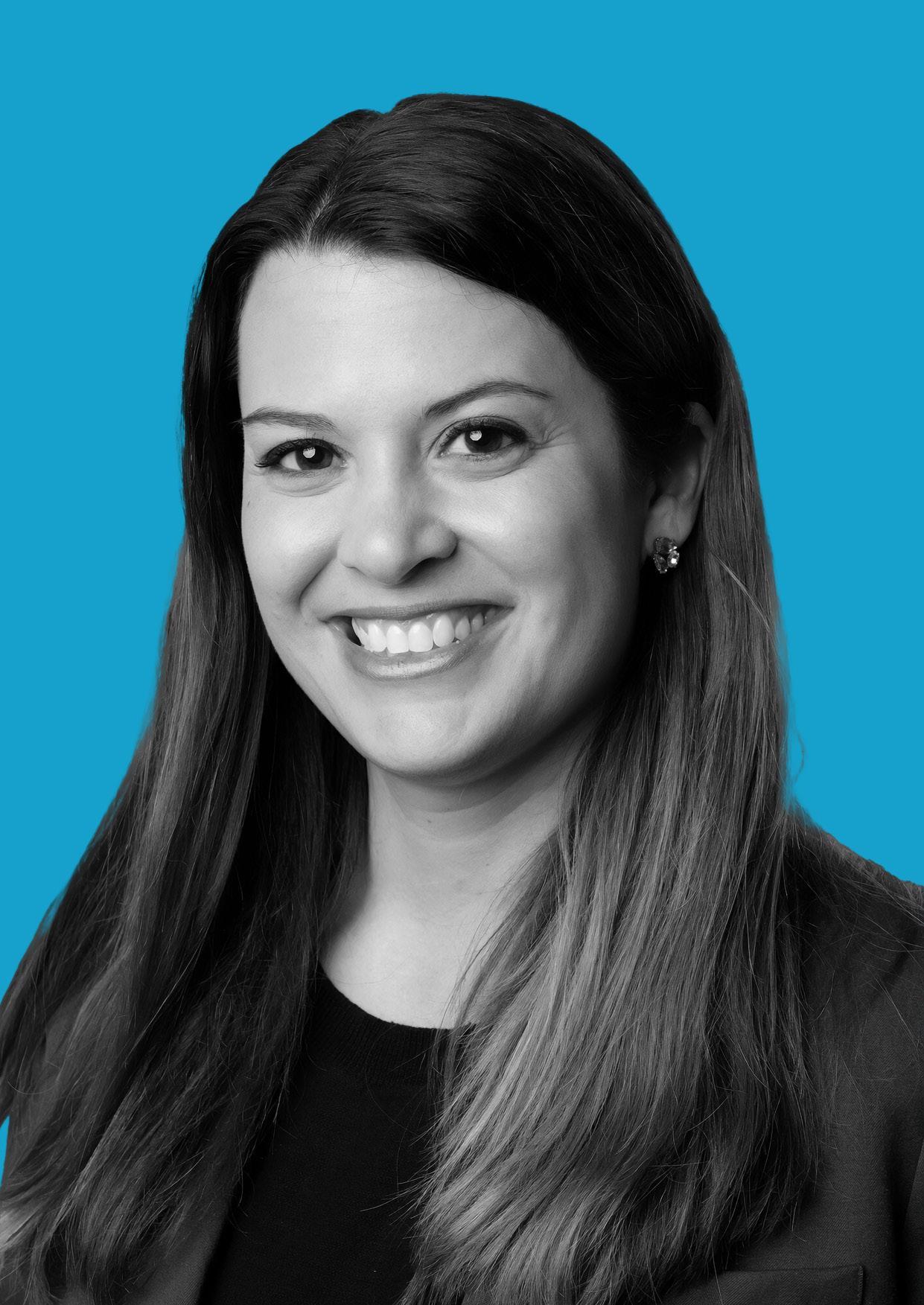
Microsoft
https://www.linkedin.com/in/katemaxwell001
Kate Maxwell is the current Chief Technology Officer at Microsoft, serving defence and intelligence customers around the globe. As a sought-after keynote speaker, leader, and author, she is passionate about leveraging the intersection of people, technology, and culture to help organisations advance their partnerships, alliances and missions. Some of Maxwell’s key expertise include: public sector digital transformation, unmanned systems, and space mission management. Maxwell’s work in the industry is highly critical and, using her training in computer science and systems engineering, she can best understand the frontline of defence technology, helping to bring service members home after every mission.
Alongside her role as CTO at Microsoft, Kate also serves as a Digital Transformation Council member for the Aerospace Industries Association (AIA) and has extensive board experience across the industry
for associations such as TechPoint Foundation for Youth and The Startup Ladies. Before joining Microsoft in 2020, Kate worked at Raytheon, an American multinational aerospace and defence conglomerate, as Chief Engineer and Technical Director.
Outside of her role in the defence industry, Kate is a huge advocate for diversity and inclusion in the wider technology industry, and, in 2014, she founded The Maxwell Scholarship at Cocalico High School, which serves to recognise and support young women pursuing a higher education in a computing or engineering major. Thanks to her determined efforts to encourage diversity in STEM and her outstanding leadership, Kate was named the Tech Executive of the Year in the Public Company category for 2022 by the Indianapolis Business Journal and was included in WomenTech Network’s 100 Women in Tech Leaders to Watch in 2022 & 2023.
AD FEATURE

WRITTEN BY: JOSEPHINE WALBANK
PRODUCED BY: LEWIS VAUGHAN

EXA Infrastructure (EXA) owns and operates the most extensive dedicated infrastructure footprint connecting Europe and North America. Since launch in September 2021, EXA has worked tirelessly to expand its global presence in pursuit of its clear aimto become the undisputed pan-European and transatlantic data centre to data centre connectivity provider.
The digital infrastructure provider focusses on data centre to data centre interconnectivity, enabling core to edge data distribution and core to core connectivity across all major European data centre markets. Not only has EXA established a critical position in the key FLAP market, but it is also relied upon by data centres players throughout Europe’s emerging Tier II & Tier III markets, including the Iberian Peninsula, the Nordics, and Central, Southern and Eastern Europe.
So, to find out more about the role EXA plays in data centre interconnectivity, and its predictions for the future of these critical markets, we spoke to two experts in the team driving the company’s inter data centre initiatives: Pravdomir Dobrev, Senior Product Manager, and Georgi Lesov, Network Investment Manager.


A leading pan-European, transatlantic connectivity provider One of EXA’s key market differentiators is the sheer size of its established and growing network.
“Our network is an impressive panEuropean digital platform with over 500 Points-of-Presence (PoPs) globally. We own and operate three transatlantic cables, including the fastest and lowest latency link between London and New York. EXA has considerable presence on the east coast of the United States and in Canada too.” Lesov explains.

“Customers can rely on us to continue to expand into new hubs and geographies as they emerge. We always strive to be our customers’ growth enabler”
GEORGI LESOV, NETWORK INVESTMENT MANAGER, EXA INFRASTRUCTURE
The focus of Lesov’s team is on strategic network investments, with Lesov looking after the CEE and Nordic regions. Lesov is also responsible for overseeing data centre interconnectivity with a global lens.
Dobrev’s role is the management of the colocation product line and supporting EXA’s growth strategy in the colocation market space. Since launch, EXA has connected – or is in the process of connecting –tens of new strategic data centres across Europe and North America, with the former spanning considerably beyond the region’s traditional markets.

TITLE: NETWORK INVESTMENT MANAGER
COMPANY: EXA INFRASTRUCTURE
Georgi Lesov is currently a Network Investment Manager within EXA Infrastructure, and is focused on CEE as a region, but also DC-to-DC connectivity globally.

Georgi has been with the company long before it became EXA. He joined, back in 2016, what was then Interoute. Over the past 7 years, he has spent time in Operations, Access, Product and most recently, Strategic Investments – the latter he describes as the most exciting position yet. Prior to that, he was a Project Manager for a local software company and before that was backpacking his way through South-East Asia. Interesting fact – Georgi also graduated from South Bank University in London with a BA in International Politics. He did his MA in European Public Policy at King’s College London.
“The dedicated data centre interconnectivity programme – which we launched a few months after the launch of EXA and is still ongoing today – enables us to take a more proactive approach to capital deployment, building into key strategic data centres ahead of customer orders, rather a game of “pin the cost on an anchor customer,” Lesov explains.
“We look at each data centre individually, by focusing on size (in terms of MW and floor space), power density, PUE, age of the facility, future scalability, and many other
factors, which are all part of our due diligence process. Then, once a candidate site has made it to the shortlist, we execute within a few months, and bring the site online.”
EXA also proactively surveys its customers, to understand where they need their sites to be – not only today, but in one, three- and five-years’ time. EXA aims to be amongst the first movers in these locations. Operating in such a strategic way not only enables EXA to grow with its customers but it means EXA is also driving industry developments.
“It’s a positive mutualism,” Lesov says.
EXA also offers a set of professional services for customers and partners needing help, for instance with designing and building Cable Landing Stations (CLSs) and other key network nodes. EXA has experience in building, operating, maintaining, and the service assurance for those sites, with years of expertise. Those services and sites, as Lesov describes, are the glue that joins the pieces of the puzzle together, thus allowing EXA to be a onestop-shop for its customers and align its operations to their growth plans.
TITLE: SENIOR PRODUCT MANAGER
COMPANY: EXA INFRASTRUCTURE
500+ Points of Presence
Pravdomir (Prav) Dobrev has joined EXA Infrastructure as a Senior Colocation Product Manager and has over 8 years of experience in the data centre industry. His former role includes Senior Global Product Manager, Colocation at Digital Realty where he oversaw the core product lifecycle and in the last few years, their product integration with Interxion. Prior to this, he worked as a Senior Engineer at Romonet where he consulted hyper-scale and large enterprise DC operators on energy management and sustainability. He holds an MSc in Data Science from Birkbeck College London, and BEng
3 Transatlantic cables
(Hons) in Building Services Engineering from London South Bank University. He is a member of the Institute of Engineering and Technology (IET).

34 Countries
13 Tier 3 equivalent datacentres
As can be seen from the recent flurry of AI chatbot launches, advancing interconnectivity between data centres is a rapidly growing need, which is proving critical to fostering the successful growth of the industry at large.
“This year in particular, one of the top trends that we’re seeing is enterprises looking into more distributed types of workloads” Dobrev explains.
“Essentially, it’s no longer the case that all enterprise applications are only positioned in the cloud. So, to be able to serve increasing distributed workloads, core colocation sites and edge sites, connectivity providers need a reliable and low latency network infrastructure. That’s why EXA and its services are playing a key role”.
build directly, or in geographies that we don’t see it as commercially viable, and our partners do the same with us. This means we help each other but also challenge each other and push each other to do better.”
300+ Cities Connected
As discussed, the growth of data centre interconnect services is linked to the increasing demand for higher bandwidth associated with technologies’ advances, such as the Internet of Things (IoT), machine learning etc. This has triggered the need for linking data centres in a reliable and cost-effective way.
<59 ms
“We are a B2B-focused business, so we work very closely with all the major telecom operators and carriers as well as small, medium and large tech companies needing to connect to them. We leverage existing partner networks where we can’t
If we take Europe as an example, the European data centre market set to grow by 6.7% from 20182028, and a projected 2.86% CAGR predicted for the FLAP market from 2021-2027. And this trend shows no sign of slowing down.
Being able to respond quickly to this demand is what EXA strives to achieve by investing where its existing or future customers need PoPs.
“In the traditional markets, particularly FLAP, there is still a large amount of growth (these cities dominate in terms of population and GDP) but this is also, obviously, where there is the greatest amount of legacy investment to capitalise, and hence competition”. Lesov states.
“This is a growing trend, and we expect to see more capacity coming online throughout 2023. However, it’s important to note that other European markets are also growing considerably, with plenty of edge nodes to improve end-user experience as well as new interconnection points coming online – between continents. This will be a game
“This year in particular, one of the top trends that we’re seeing is enterprises looking into more distributed types of workloads”
PRAVDOMIR DOBREV, SENIOR PRODUCT MANAGER, EXA INFRASTRUCTURE
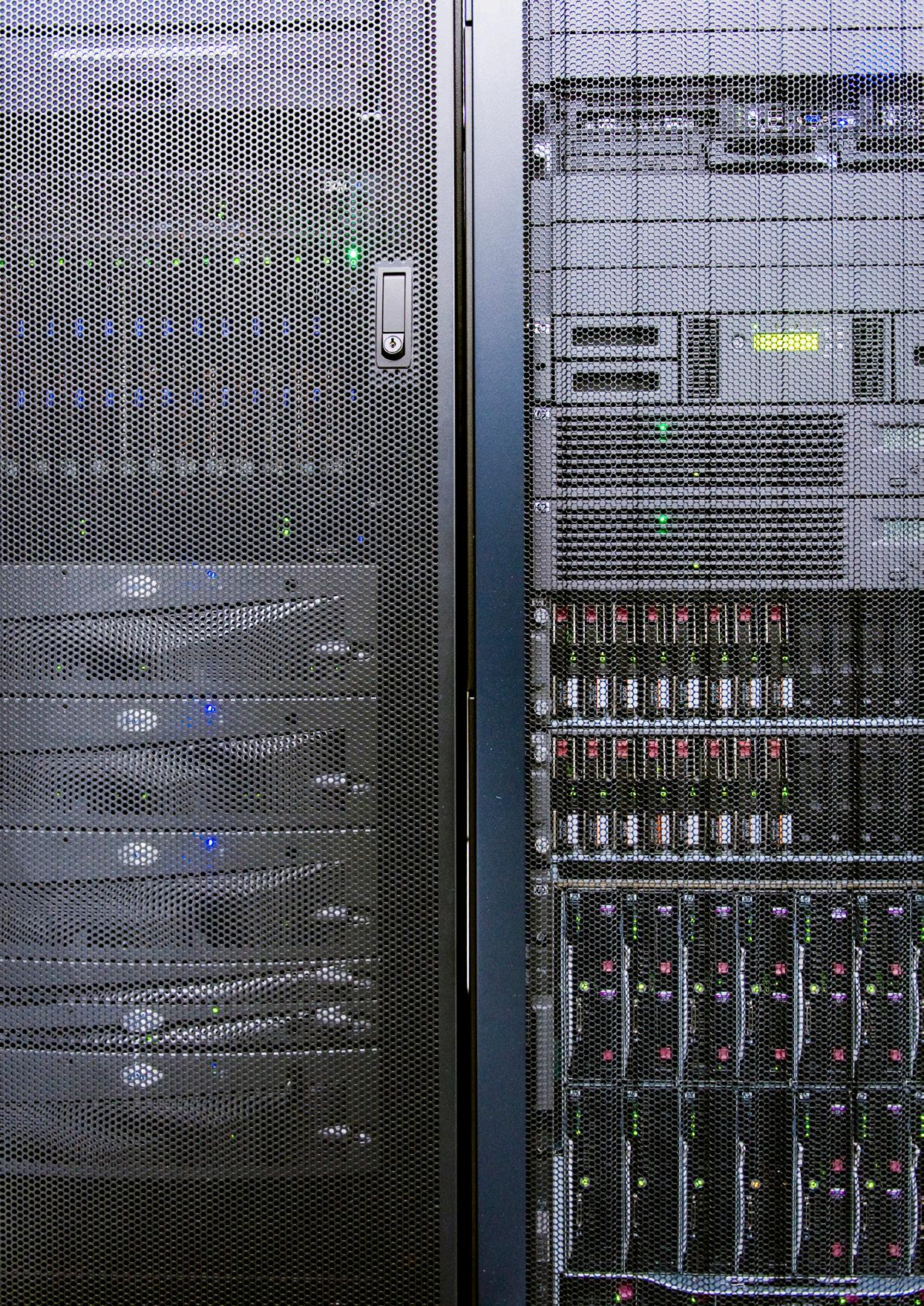

changer for the industry over the next few years, in colocation and in connectivity” Dobrev explains.
EXA’s works hard to make sure that that growth at the edge comes with the resilience the industry needs – something it does through it’s drive for constant route diversification.
“There are parts of Europe that are data centre and networkdense and where supply often exceeds the demand, challenging returns. The solution for us at EXA Infrastructure lies in creating extra diversity when it comes to routes, introducing the latest network technologies, and building greater resilience overall” Lesov states.
In the case of more emerging markets – such as Southeast Europe and the Mediterranean – though, the situation is dramatically different. “It’s more about who takes the risk and aspires to be the first mover, taking ownership in building routing diversity. It sounds like a cliché, but at EXA, we don’t just think about the future – we invest and work to create it” Lesov adds.
Dobrev provides another example of the diversification taking place in the industry: “let’s think about the success story of Marseille that over the years has become the world’s ninth largest internet hub, with links to 15 international subsea cables.”
“Enterprises across the continent continue to leverage Marseille as a low latency gateway to Africa, Asia, and the Middle East. But recently they started looking to diversify away from Marseille and invest in places like Barcelona, Athens and other location points along the coast of the Mediterranean, such as Southern Italy. Diversification increases security and creates more competition in attracting the future big projects.”
“Simply put, if data centres exist on their own – if they’re not connected to the rest of the world – then they don’t have much value.” Dobrev says. “That’s why they need backbone architecture enablers, like EXA, to connect them to other customers and hubs. The greater the number of locations that we establish a presence in, the higher EXA’s value is as a partner to our customers and the industry as a whole.”
Quite a few of these projects and diversified routes are still in the planning or building stage, but when they will be ready for service, they will attract considerably more sub-sea cables and require solid and redundant connectivity solutions. This is what makes EXA’s growth and investment in its network so important and forward looking.
EXA is uniquely positioned to capture emerging connectivity demand waves due to its network presence in both the mature, growing and early-stage markets. This is a key strategic strength in the data centre interconnectivity play.
EXA is proud to be the industry challenger, a flexible and solid organisation willing to meet its customers’ bespoke connectivity requirements.
Lesov adds: “Customers can rely on us to continue to expand into new hubs and geographies as they emerge.”
“We always strive to be our customers’ growth enabler. It can be either technically or commercially, but we help our customers win in the market.”
114,000 Route kilometres fibre network


For countless companies, the process of moving their entire IT infrastructure to the cloud has the potential to be laborious, complex, and long-winded.
When it came to the Pick n Pay Group – one of South Africa’s biggest retailers –there was also the added pressure of the transition being the largest of its kind ever carried out in Africa. Nevertheless, having enlisted the services of Lemongrass based on its proven track record, Pick n Pay’s SAP systems have now been successfully migrated using AWS as its cloud provider.
Responsible for overseeing the architecture of this crucial project was Robert Heneke, Head of Cloud, SAP Technology and Development at Pick n Pay. Heneke, who has experience in various industries – including wool spinning, oil, and mining – joined the company back in 2007 when it had around 750 stores. Today, that figure stands at more than 2000.
Detailing the reasons for Pick n Pay’s migration and its decision to use AWS requires “a step back”, says Heneke, keen to show his technical working. Cutting costs was, as one might expect, a significant factor, but the firm had also reached an important crossroads where a big call needed to be made.
“About four years ago, we migrated our BW (SAP Business Warehouse) system to the cloud and, at that point, there weren’t a lot of hyperscalers around,” Heneke explains.

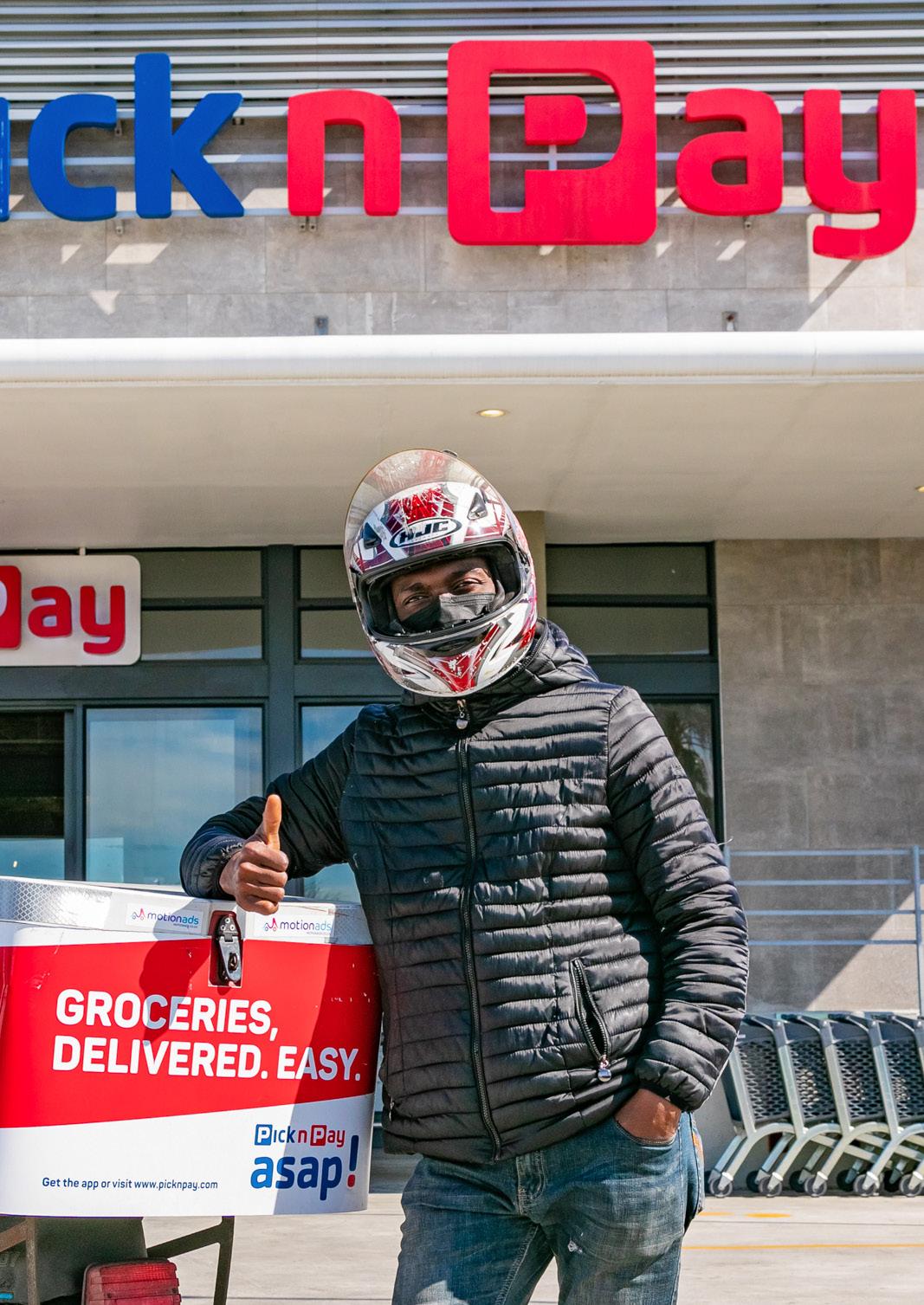
Hyperscale. Hyperspeed. Hypercare.
Lemongrass, a software-enabled services provider synonymous with SAP on Cloud, consistently delivers positive business outcomes for its Enterprise customers running SAP on hyperscale Cloud through a digitally enabled, highly automated service delivery model that empowers the greatest levels of agility and innovation.



Pick n Pay’s cloud migration had the potential to be complicated and intense but, thanks to the expertise of Lemongrass, the project ran “like clockwork”
When executives at Pick n Pay were planning the retailer’s cloud migration, they knew it was imperative to bring on board a partner with indisputable expertise.
In Lemongrass, they found a specialist in putting SAP on the native hyperscale cloud.
The firm counts companies including Fender and Transport for London as some of its standout clients, and came recommended by AWS as a go-to partner thanks to its longevity in the market.
One might imagine that a cloud migration as complex as Pick n Pay’s would present all manner of obstacles. The reality could not have
been further from the truth. Mark Hirst, Managing Director for EMEA at Lemongrass, explains: “You’ve got these big, expensive, businesscritical SAP systems and, actually, it all went like clockwork. This project went to plan, to budget, and the reason is that this is the only thing we do.”

Hirst picks out a few challenges his team encountered, but successfully mitigated. Lemongrass migrated Pick n Pay’s IT infrastructure with very little downtime, allowing the company to maintain its operations.
Automation was utilised to ward off system integration headaches, while cloud latency issues – common to this region – meant


systems had to be hosted by data centres in both Africa and Europe.
A fruitful partnership
Lemongrass and Pick n Pay’s partnership will continue for several years and is effectively split into two halves. The first covers the migration itself, while the latter concerns “operation and innovation”.
Hirst adds: “Our first set of objectives have been achieved. The systems are ultra-reliable and secure, and massive cost reduction has been delivered. “We’re now starting the journey towards a second set of aims. How do we get native analytics? How do we make SAP more scalable? How do we automate it more? That’s the journey we’re on.”
“We chose AWS at that point in time, so we had some sort of a relationship with them.

“We went to the cloud for the whole of our environment because we used to have an on-premise data centre with a hardware supplier that would stock it with infrastructure such as servers and storage. They would always try to be one step ahead of the requirement curve so, when we required a machine, we would only pay for what we used.
“The problem was, that contract was nearing its end and we had to make a decision: whether we were going to extend the contract and be tied down for another seven years, or whether we would go for something else.
“When we started to crunch the numbers, it seemed like we could reduce our costs quite drastically. That was very appealing to us”
ROBERT HENEKE HEAD OF CLOUD, SAP TECHNOLOGY AND DEVELOPMENT, PICK N PAY
TITLE: HEAD OF CLOUD, SAP TECHNOLOGY AND DEVELOPMENT

COMPANY: PICK N PAY

INDUSTRY: RETAIL
LOCATION: SOUTH AFRICA
Robert Heneke is the Head of Cloud, SAP Technology and Development at Pick n Pay in Cape Town, South Africa. He has 25 years of IT experience, 16 of which have been at Pick n Pay. Robert holds a master's degree in Business Administration from the University of Stellenbosch’s Business School and was awarded top student in 2019. He is passionate about growing as a leader, positively impacting his team, and enjoys running and reading in his spare time.
“We decided – as we already had a system in the cloud, had paid our school fees and understood how it worked – that it was a good option at that point in time. Then, when we started to crunch the numbers, it seemed like we could reduce our costs quite drastically. It was very appealing to us to try and get that as an outcome.”
Recognising the sheer magnitude of the task at hand, Pick n Pay’s tech specialists entered into a rigorous selection process – assessing eight companies across five months – in an effort to find the perfect partner to deliver the migration.
In the end, UK-based Lemongrass was the standout candidate and got the nod. “They were one of the few contenders that had real experience migrating SAP systems to the cloud, especially on AWS,” continues Heneke.
“They didn’t only do the migration for us, but eventually became our cloud operators as well. Much of our success around our cloud journey can be attributed to their skills and can-do attitude. I always find them willing to assist and be part of a solution, even when the responsibility is not within their area.”

With a partner chosen in the form of Lemongrass, the project took around nine months for Pick n Pay. “It was fairly

“Much of our success around our cloud journey can be attributed to Lemongrass’ skills and can-do attitude”
How retailer Pick n Pay mastered its migration to the cloudWATCH NOW
ROBERT HENEKE HEAD OF CLOUD, SAP TECHNOLOGY AND DEVELOPMENT, PICK N PAY
lengthy,” adds Heneke. “I was joking we all could have had babies in that time.”
The first job? List all the company’s individual systems and rank them according to requirements including CPU speed, memory, disc volume, disc I/O, and operating system type, before mapping them to the AWS environment.
All in all, the total number of systems to consider reached around 500.
“It sounds like something you can do over a cup of tea, but let me reiterate – it takes months to get right,” says Heneke, who sounds almost haunted by this stage of the process. “There's always something that creeps out of the woodwork. It’s a moving target because continuously new systems are created and other systems are decommissioned.”
The migration itself was also far from straightforward.
While a number of Pick n Pay’s Microsoft systems could effectively be lifted and shifted across to the cloud, the retailer's SAP systems running on IBM AIX caused headaches. Legacy systems on AIX’s big endian couldn’t be backed up and restored to the little endian in the cloud, meaning the only option was to undertake an exportimport exercise.
“When you have to do that for a 20-oddterabyte database, it becomes quite a difficult challenge,” laments Heneke –though he also reveals that the hardest part was managing the integration, bearing in mind the hundreds of partners and suppliers within Pick n Pay’s working ecosystem.
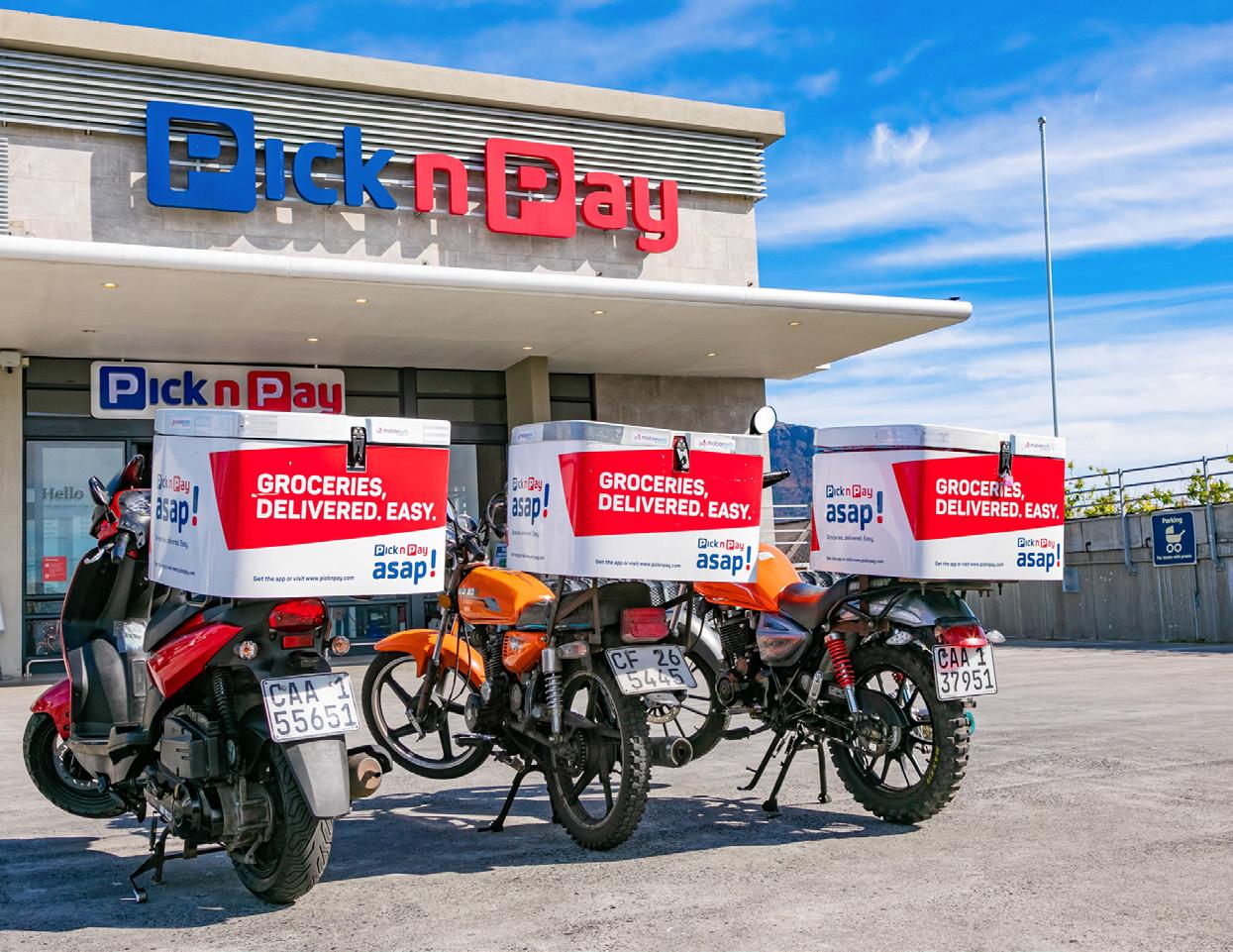
“You have to imagine that all of your integration points now change to somewhere in the cloud. Partners and suppliers all want to communicate with your systems, so you have to coordinate your efforts with them in cutting over.
“We had an integration catalogue that we lived and died by, and it worked very well for us.”
Cloud latency largely a ‘non-event’
Cloud latency was, quite rightly, a big cause for concern prior to the migration. When Pick n Pay wanted to move over to cloud computing, the nearest hyperscale data centres were more than 7,000 miles away in Europe.

However, for developers and users it was – as Heneke puts it – a “non-event”. Some disruption, for example, was only experienced in customer-facing and realtime applications, especially scanners.
ROBERT HENEKE HEAD OF CLOUD, SAP TECHNOLOGY AND DEVELOPMENT, PICK N PAY“Our distribution centres typically work with a lot of hand-held scanners and they can’t wait for those additional
“At a SAP conference, I said we intended to go to the cloud with our whole environment – and I was made out to be mad”
milliseconds,” adds Heneke. “Especially if the device is very chatty; multiple roundtrips between the server and scanner can add up to seconds in wait time.”
Ultimately, the solution was for AWS to create a data centre in Cape Town, allowing the smooth running of those crucial systems.
Heneke continues: “The question would be, ‘why don't you just do everything in Cape Town?’.
“It’s quite interesting that South Africanhosted data centres are about 15% more expensive than the European ones. There’s probably a myriad of reasons for it, but I believe it’s because electricity is more expensive down here.”
Asked about the benefits of moving Pick n Pay’s IT infrastructure across to the cloud, Heneke can’t help but bring up
an anecdote from a SAP conference he attended a couple of years ago.
“We were standing around and I said to this group of people, ‘Hey, we actually intend to go to the cloud with our whole environment’ – and I was made out to be mad,” he recalls.
While this story is told in modest fashion, there must surely be a hint of ‘I told you so’ in Heneke’s mind? In practice, the move has been a “real success story”, allowing Pick n Pay to reduce its infrastructure, operating, and support costs by an enormous 40%.
Another huge bonus provided by the cloud is the ability to easily scale up and scale down its systems. For years, the company’s main system was a non-Unicode SAP database –and, to progress to newer versions, Unicode encoding was required.
This meant exporting the 20TB database, a sizeable and expensive task given the need to double up on hardware. “With the cloud,” says Heneke, “we could just ramp up during the project, do the Unicode conversion, then scale down and all is well.
“For us, the flexibility that the cloud has given us has been phenomenal.”

The global retail market, in Heneke’s words, is in “quite a difficult place”.
From an IT point-of-view, however, the goal for Pick n Pay is to automate old support office processes through RPA and further invest in singular access across all of its platforms.
A digitalisation of the commercial function within the clothing business –to be led by American firm Blue Yonder – is also on the horizon, while SAP has requested that its clients move to the

S/4HANA software over the next few years. Clearly, a big part of Heneke’s job is to pre-empt future trends, thus he highlights the imminent need to invest in on-demand delivery, as opposed to the scheduled service.
He also points to industry cloud platforms and their ability to incorporate cloud services into a pre-integrated but customisable, industry-relevant solution.
Heneke says: “SAP has got offerings in that space, but we will still need to review whether it's going to be costeffective and whether they can deal with our business processes.

“The company is over 50 years old, so it’s always difficult to change the business processes.”
It would almost be remiss of Heneke, a senior figure in the field of technological development, to not give ChatGPT a mention.
“It's on everybody's tongue at the moment and I'm sure it will be used within retail platforms in the future,” he concludes. “Open AI has done a great job in making AI accessible to the average Joe and creating a vibe around it.”
“The flexibility the cloud has given us has been phenomenal”
ROBERT HENEKE HEAD


 WRITTEN BY: JOSEPHINE WALBANK
PRODUCED BY: TOM VENTURO
WRITTEN BY: JOSEPHINE WALBANK
PRODUCED BY: TOM VENTURO

Located in Florida’s Tampa Bay area, Hillsborough County Public Schools is the seventh-largest public school system in the United States.

The district is tasked with providing quality education for students ranging from pre-kindergarten through to their senior year, alongside supporting adult learners across the region. As a result, its educational services and support system covers a diverse student population of over 220,000 individuals.
This district is known for being a regular first-mover in the edtech sphere. Hillsborough Schools is one of the leading advocates of the power of technology in the classroom, and it is at the forefront of digital initiatives spanning everything from remote connectivity to audio-visual programmes.
To find out more about how the district is deploying technology across its platform and utilising the latest solutions to support students and staff alike, we spoke to Tom Weeks, the Chief Technology Officer of Hillsborough County Public Schools.
Tom Weeks is responsible for overseeing and setting the strategy for all the digital systems and infrastructure within the school district, meaning his role is expansive.
“The mission for the district is to provide an education and the support that enables
 Tom Weeks, Chief Technology Officer of Hillsborough County Public Schools
Tom Weeks, Chief Technology Officer of Hillsborough County Public Schools
each student to excel as a successful, responsible citizen. Basically, we are here to provide a quality education for all the students in our county,” Weeks explains.
Since joining Hillsborough Schools in 2016, Weeks explains that the district has undergone a significant evolution in its approach to technology, particularly after the global pandemic.
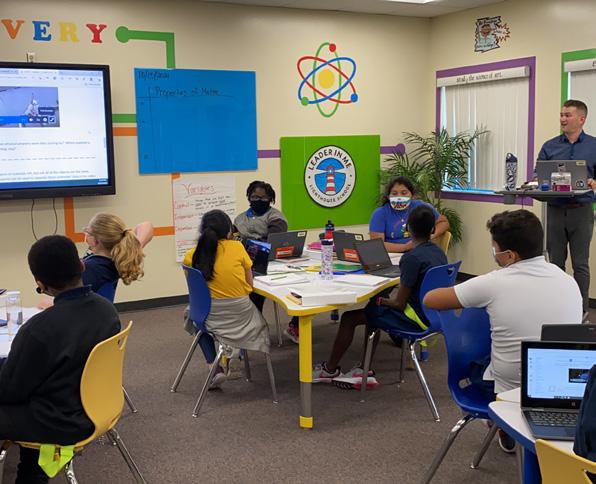
“Looking back, the pandemic demonstrated the overall importance and reliance on technology, not just in the educational space, but in nearly every industry. For us, we need to continue to be prepared for our students to be able to learn from anywhere or for our employees to work from anywhere as the need arises. Plus, it also gives us the added benefit of more flexibility across the board.”

“We are always looking for ways to support the classroom environment to enhance the curriculum and make sure that our teachers have the opportunity to use the technology in newer, exciting, and more innovative ways”
TOM WEEKS CHIEF TECHNOLOGY OFFICER, HILLSBOROUGH COUNTY PUBLIC SCHOOLS
EXECUTIVE
Hillsborough Schools – and the entire education sector at large – are rapidly working towards a deeper integration of technology into the curriculum.
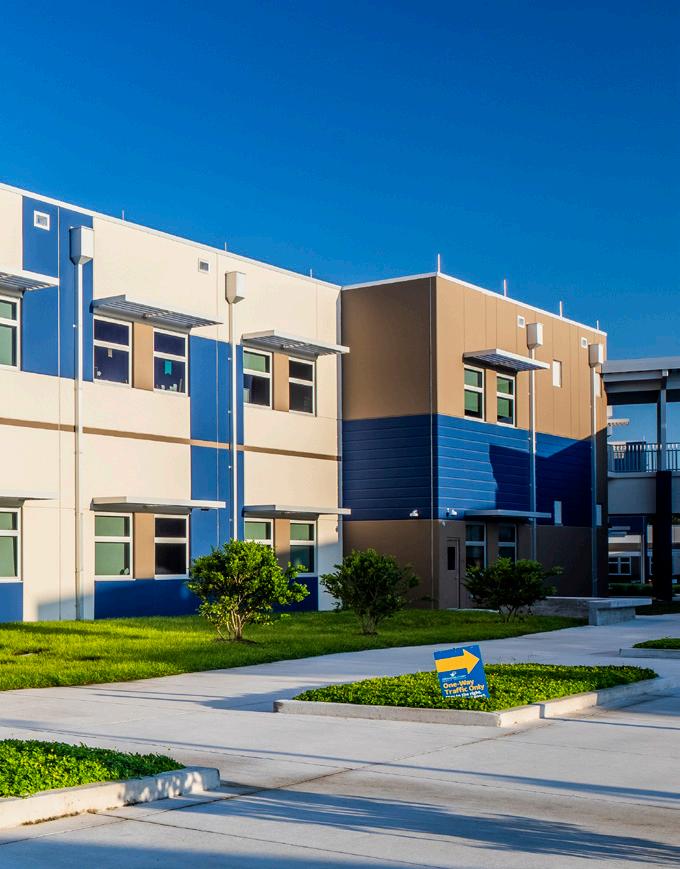
“We're there to support the curriculum, not there to replace sound curriculum decisions. As teachers become more familiar with the technology, I think they'll use it in newer and more exciting ways,” Weeks asserts.
“They'll use the newer communications tools that we provide, the newer software packages, and the newer hardware, continuing to push that technology in the classroom to, hopefully, have a positive impact on their students. And we'll continue to do that for our administrative staff.”
Weeks explains that technological solutions have formed a core focus of Hillsborough Schools’ transformation over the last few years.
TITLE: CHIEF TECHNOLOGY OFFICER
INDUSTRY: EDUCATION
LOCATION: UNITED STATES
Thomas Weeks, Ed. D. serves as the Chief Technology Officer (CTO) for Hillsborough County Public Schools. In his position, he provides leadership for the information technology services (ITS) organisation supporting the students and employees of the nation’s seventh largest school district.
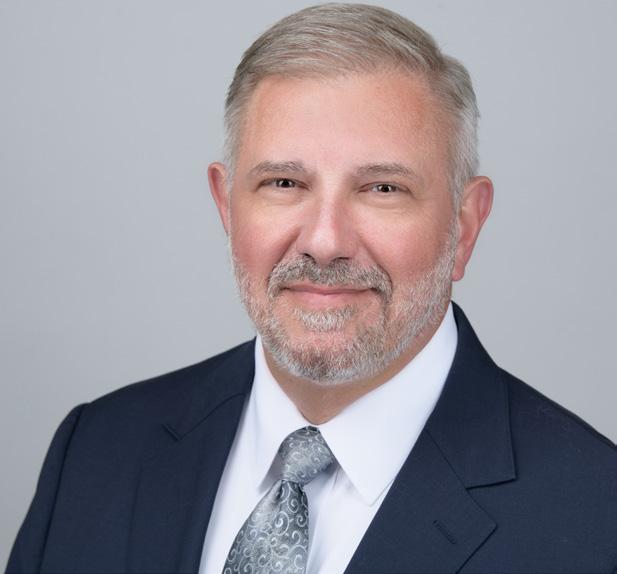
Thomas has worked in the field of information technology for more than 30 years, and has held numerous leadership roles as the technology executive for organisations in higher education and healthcare sectors.
Thomas earned his Doctor of Education degree in Leadership Studies with a focus on Educational Technology from Wilkes University. He currently holds industry certification as a Project Management Professional.


Customised technology, tailored procurement, and ease of use are three top must-haves for equipping today’s educators and students with modern technology. Support their future with the right laptops, tablets, smart devices, accessories, services, and more through the Lenovo and Connection partnership.
Discover Connection

Discussing the partnership that’s transforming HCPS, Christian Rivera (Lenovo) and Larry Kirsch (Connection) praise their technology and services delivery.
Hillsborough County Public Schools, HCPS, located in Florida, is the seventh largest school district in the United States. With outdated systems and hardware, the technology team at HCPS recognised a need to update legacy solutions to support the work of its teachers and the education of its students.
The evolving education digital landscape means more than simply supplying new computers. Devices need to be staged, serviced, bundled, and deployed to ensure a secure and positive experience for students, educators, and staff. The key outcome realised in Lenovo’s and Connection’s partnership is the sustainable support for HCPS and an outlook that leverages suppliers more as partners than as vendors. With its commitment to supporting
HCPS, Lenovo has come to understand the county’s needs. Its strategic partnership with Connection brought together a trio of teams to optimise supply chain, leverage funding opportunities, and deliver ongoing device support for both students and staff.
“Whether it’s a one-to-one initiative or supporting the staff, which is obviously critical, it seems they went a very long time without technology equity,” says Larry Kirsch, President, Connection Public Sector Solutions.
By the end of the 2023 schoolyear, Lenovo and Connection will have supported HCPS with 125,000 endpoint devices in a no-touch environment through Connection’s Technology Integration and Distribution Center (TIDC).


One of the key factors that contributed to the successful deployment of devices to HCPS was formulating a solid logistical plan. The TIDC team ensured the devices were queued to ship full truckloads at a time, which streamlined the shipping process.
“At Lenovo and Connection, we have the end-user top of mind. And, in education, the end-user is the student and teacher, both of whom now have the modern technology needed to maximise the educational experience and inspire the future of learning,” says Christian Rivera, K12 Account Executive, South Florida, at Lenovo. Discover Connection
“From a technology perspective, we've undergone a massive transformation to ensure that our digital assets – both hardware and software – provide students and our employees with the means to fulfil their educational requirements and the means to perform their jobs. In these ways, we give them the opportunity to make smart and timely decisions.”

Through education technologies, schools can not only offer a better experience for students, but they can expand teachers’ individual capabilities, which can, in turn, more effectively support staff across

“From a technology perspective, we've undergone a massive transformation to ensure that our digital assets, both hardware and software, provide students and our employees with the means to fulfil their educational requirements and the means to perform their jobs”
TOM WEEKS
CHIEF TECHNOLOGY OFFICER, HILLSBOROUGH COUNTY PUBLIC SCHOOLS
multiple sites. All of this, via structured, standardised, and seamless solutions.
“We’ve been modernising our laptops for our students, staff members, teachers, and our administrative staff. In the classroom, we've also been standardising the technology that we put in place,” Weeks explains.
“We are adding audio enhancements –including microphones, speakers, and audio amplification – to ensure that students can hear no matter where they're positioned within the classroom. We're also adding interactive flat panels to all of our core classrooms so that we can ensure that students are able to see clearly what the teacher is trying to present.”
Hillsborough Schools is known in the sector for being one of the first pioneers in Virtual Desktop Infrastructure (VDI), as well as one of the earliest advocates of technology’s role in the provision of better student experiences.

“For us, VDI was implemented as a stopgap measure of sorts,” Weeks outlines.

“In terms of the number of devices that we had in place, we were woefully unprepared for the pandemic. So, for us, we relied on utilising VDI to serve as a bridge between us purchasing newer technology while still getting usefulness out of the existing technology that we had.”
“By implementing VDI, we were afforded the capability to still use the older laptops or desktops that teachers or students may have had in front of them, but to connect those to higher horsepower devices on the backend. This way, they could actually perform tasks that they normally wouldn't be able to do on those lower horsepower units.”
Critically, high levels of standardisation across classrooms has ensured that technology can be implemented, without presenting a further hurdle for teachers.
“We have provided all of our teachers with the same laptop. As we standardise our audio devices and our visual display devices, we're going to establish familiarity in all the classrooms. So a teacher can go from one classroom to the next, and not worry about any differences in the technology that's in place,” Weeks explains.
“With our students now approaching that magic one-to-one ratio, and all of them having a device available in front of them, and giving teachers the opportunity to learn how to effectively use the technology, we're giving them the flexibility to leverage technology as they see fit to support the curriculum and help their students learn.”
Weeks and his team are consistently on the lookout for ways to support the classroom environment, enhance the curriculum, and give its teachers the opportunity to use the technology in newer, exciting, and more innovative ways.

To this end, Hillsborough Schools is at the forefront of edtech, adding newer devices and technologies to the classrooms, while giving its teachers all of the support that they need to fully utilise them.

“So, we're working on a programme where we are providing training and professional development for our teachers, ensuring that they understand how to use the technology and obtain ideas on how to incorporate that technology into their lesson plans as part of the overall curriculum.”
Taking Hillsborough Schools’ audiovisual programmes as an example, the value of technology in terms of engagement, support and interactivity is immediately clear.
“We're going from ageing projectors to more modern interactive display devices. And again, we're also looking at utilising various software applications to not only stream the content up on these new display devices, but also to stream those to student laptops, and/or, teacher laptops,” Weeks outlines.
“So, we're working on how to truly develop a more interactive experience, focus on those capabilities to allow teachers and
“We’re there to support the curriculum, not there to replace sound curriculum decisions. As teachers become more familiar with the technology, I think they’ll use it in newer and more exciting ways”
TOM WEEKS CHIEF TECHNOLOGY OFFICER, HILLSBOROUGH COUNTY PUBLIC SCHOOLS
students to learn at their own pace, while still being supported by the existing curriculum.”
For Weeks, the district’s partner ecosystem –particularly its partnerships with Connection and with Lenovo – has proved critical in helping Hillsborough Schools to achieve its pioneering approach.
“Lenovo and Connection have both been wonderful partners for the district,” Weeks asserts.
“We have worked with Lenovo to standardise our students’ digital devices, particularly our laptops. Working with the Connection and Lenovo teams, we were able to determine what met the needs of our students in terms of a compute device; then we worked with Connection to drive the best price in securing those items from Lenovo.
For us, it started off as a transactional relationship, but it really grew above and beyond that.”
Not only does Connection ensure that Hillsborough Schools has selected the right product at the right price, but this partnership also brings extensive additional value to the wider purchasing process.

“The Connection team worked with district staff to come up with a solution to track the assets as we ordered them, so that we had a digital copy of where those assets were going,” Weeks explains.
“Connection places a physical asset tag on the device. Then, they provide us with the documentation as to where the asset belongs. Additionally, they also ensure that the devices are ready to go, as we go to deploy them at the school sites. And that's really saved us critical deployment time.”
With a limited number of staff at its disposal, this extra degree of support has proved pivotal for Hillsborough Schools and its technological transformation strategy.

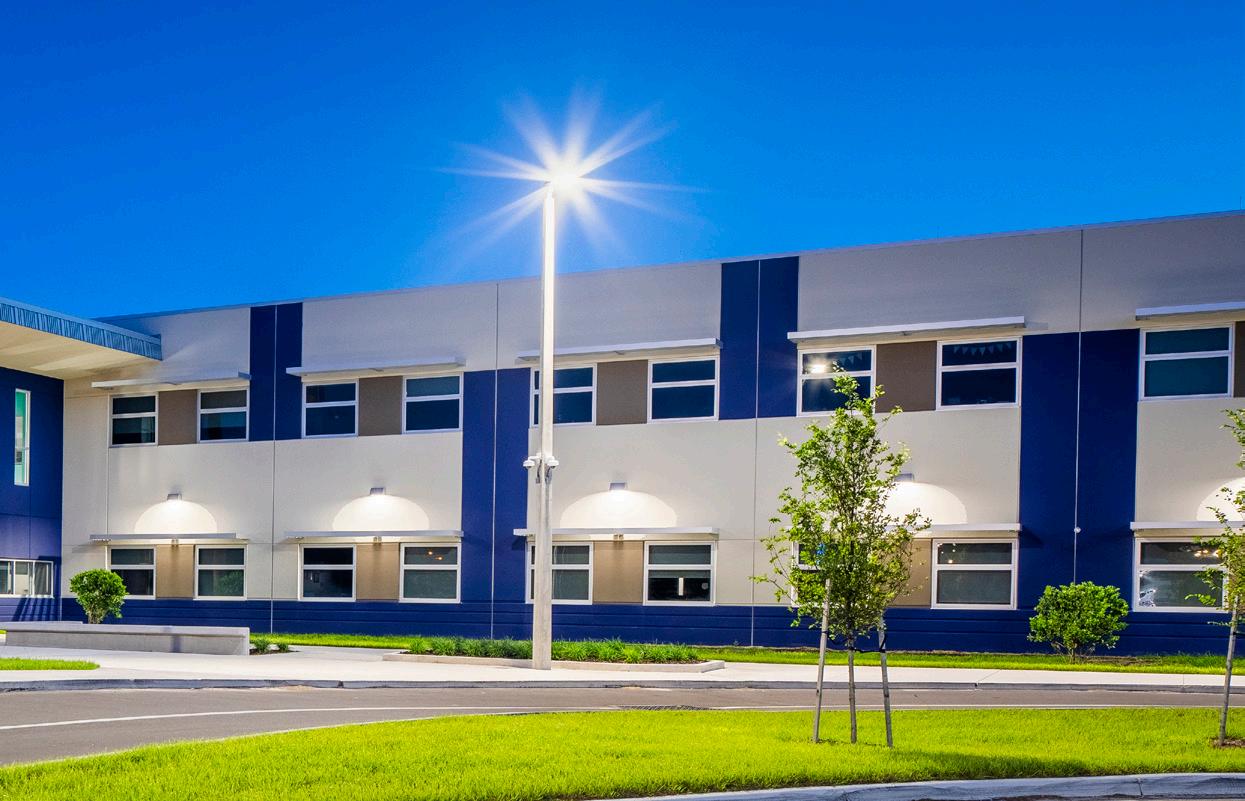
“We couldn't have dealt with this type of volume without a partner like Connection being intimately involved in the process. Those efforts were, and they continue to be, critical to our overall modernisation and standardisation efforts in the classroom,” Weeks adds.
“For us, I want to make sure that a partner brings value by taking time to really understand what it is that we need as a district and that works with district staff to come up with a solution. Sometimes, the solution isn't even something that they as a vendor can sell you. But, you know that they're looking out for your overall success, and that's truly what makes them a valuable partner.”
For Weeks, Hillsborough Schools’ best partners add value every step of the way, whether it's coming up with a collaborative solution, finding the product that best fits the needs, or making sure that the district gets a good price point on those products.
“My value as CTO depends on the strategy that I can set for the district, the skills that my staff bring – in terms of implementing that strategy – and the effort that my vendor partners bring and put forth to help fill in the gaps where we, internally, can't meet those needs. So it's really a cohesive ecosystem that our partners fulfil.”


 WRITTEN BY: HELEN ADAMS
PRODUCED BY: TOM VENTURO
WRITTEN BY: HELEN ADAMS
PRODUCED BY: TOM VENTURO



There are two truths in modern healthcare: patients want to recover at home, and healthcare professionals need a way to easier utilise the technology available to provide care at home and improve patient outcomes. That is where Best Buy Health comes in.
Best Buy Health enables care at home for everyone, and to do this, focuses on three strategic areas: wellness at home, ageing at home, and care at home.
Best Buy Health built its strategy on the strengths of the Best Buy brand, including its holistic retail channels that offer the health technology customers need, its expansive distribution channels that help get customers technology quickly and their ability to help customers with their tech products right inside their homes through Geek Squad. No one has the combination of these abilities at scale like Best Buy does.
“Technology is at the centre of everything Best Buy Health does and more than ever, the role of technology in healthcare is becoming a crucial component of delivering care to patients and improving their experiences and outcomes,” explains Jean Olive, Chief Technology Officer at Best Buy Health.
Olive is responsible for all information and technology systems, product research, design and development for Best Buy Health.
“Technology is already in our homes and we know that healthcare is coming into our

homes but requires complex technology to make it successful – that’s why we focus on what we do best. We’re not looking to actually provide the care for patients, we’re enabling the care by building an ecosystem that supports the entire care-at-home process.”

Throughout her career, Olive has worked for companies where she personally connected with their purpose. She previously worked in aerospace and defence, and then Philips Healthcare. In 2021, she jumped at the opportunity to get back into healthcare after experiencing the need for transformative technology.
“My dad had congestive heart failure and the last four months of his life were extremely difficult,” Olive explains. “It was during the height of COVID-19 and he ended up in the hospital for monitoring three times, unable to have anyone visit him. The whole time I was thinking that his quality of life would have been better if he could
“Caregivers are willing to invest in these technologies to help their loves ones feel safe and to give themselves peace of mind knowing there are others out there helping provide care to their loved one”
JEAN OLIVE CHIEF TECHNOLOGY OFFICER, BEST BUY HEALTH
TITLE: CHIEF TECHNOLOGY OFFICER
COMPANY: BEST BUY HEALTH
INDUSTRY: HEALTH CARE
LOCATION: GREATER BOSTON, US
Jean Olive is the Chief Technology Officer of Best Buy Health for Best Buy Co. Inc., responsible for technology strategy and architecture, product design and delivery, digital transformation, and operational excellence. Jean’s career has been centred on global companies with a mission to improve and save lives where she progressed through a variety of engineering, supply chain, programme management and leadership positions at Raytheon Technologies, Royal Philips, and Schneider Electric.
Jean is passionate about the impact that delivering care in the home using technology-enabled solutions can have on the quality of care for everyone. Jean is a champion for advancing women in technology and leadership, seeing inclusion and diversity as a competitive advantage. Jean and her husband, Stephen, have five grown children, enjoy lake life, entertaining and travelling.

Jean received her BS in Chemical Engineering at the University of Connecticut, is a member of the UConn Academy of Distinguished Engineers and serves on the School of Engineering advisory committee. She is the executive sponsor of the Best Buy Health Inclusion and Diversity and Learning Councils and serves on the advisory board for Women in Tech.
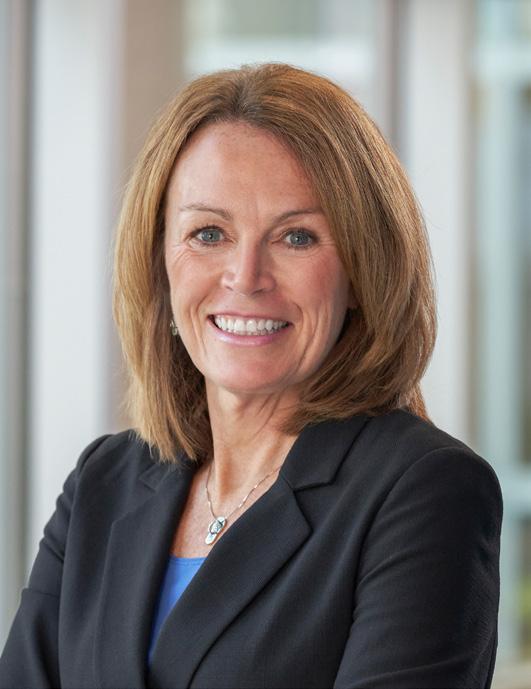

have been monitored at home – and life would have been less stressful for my Mom and our family caring for him if they were able to do so at home.

The day of his funeral, Olive got a message from Deborah Di Sanzo, President of Best Buy Health.
“I knew it was time for me to get back into health and focus on delivering technologies solutions in the home to improve patients’ and caregivers’ lives as well as the quality of care for patients,” Olive says.
One year and seven months into this role, Olive was recognised as a leader in wellness at home.
“It's wonderful that we're really getting recognition,” she says. “Nobody wants to be in the hospital, but when people are at home, we know that they eat better, they
“Best Buy Health is a really unique and important contributor to solving and supporting this trend of healthcare consumerisation”
KEVIN MCLELLAN SENIOR PARTNER, PWC STRATEGY&
sleep better, they move more, and they're with their family and pets!”
“We do know, however, that in some circumstances where patients are receiving care at home, they can experience loneliness. That’s why we work so hard to provide care with our suite of products and services through the Lively brand as well as our Caring Centres, staffed by real people who can help with a variety of health-related needs including everything from medical emergencies, scheduling appointments or just providing comfort to those who need it.”

Kevin McLellan is a principal at PwC Strategy& as well as one of the leaders in its MedTech strategy and growth practice, with his work focused on helping MedTech companies grow and expand their impact with patients and health systems.
Unlike Olive, McLellan landed in healthcare quite accidentally.
“Both of my parents were speech pathologists, and I grew up in their speech and hearing clinic, which, for a young kid, was not very exciting,” he says. “I said I would never work in healthcare. Interestingly, I also said I'd never be a consultant!”
But what led McLellan to healthcare is not dissimilar from Olive’s story.
“My kid sister got breast cancer and we lost her too early, in her mid-thirties. About the same time, I had been working in high tech for 15 years and had the opportunity to serve a big healthcare client, quite unexpectedly. As I got into it, I very quickly realised that I was enjoying doing work in the healthcare space far more than I was in the high-tech space. I feel passionate about

finding ways to improve healthcare delivery and continuing to drive change in an industry that really needs to change rapidly to meet the needs of patients in a digital age.”
PwC and Best Buy Health have worked together to drive a technology transformation that enables continued growth and that expands the reach of the Best Buy Health services that help so many patients and caregivers improve healthcare.
People are living longer and the population is increasing, but studies show once someone has to leave their home for an assisted living centre or a nursing home, their quality of life can significantly decline. Best Buy Health helps improve that experience for everyone – even those living in rural areas who may not have previously had access to the healthcare they need to live longer and live safely.
“Our Lively brand offers everything from flip phones to pendant alarms,” explains Olive. “Our products are best-in-class. They have fall detection, as well as emergency response buttons connected to our Caring Centres for human interaction, and help with a variety of needs.”
Lively’s health and safety services can also be accessed through smart devices like Amazon’s Alexa.
“Patients can just say ‘I need help’ and they will be connected our care centre,” says Olive.
“Imagine if you’re a caregiver for your ageing parent and they live alone in their home. Something comes up unexpectedly and you’re unable to visit them that day and, as a result, your parent experiences a deep feeling of loneliness. Using one of our Lively devices, your parent contacts our Caring Centre and is connected with an empathetic employee

who provides them with a sense of comfort. In addition to this example of loneliness, our Caring Centre employees can help with a variety of other needs, including helping to provide emergency medical assistance, scheduling appointments and more.
“The caregivers really need this peace of mind. So, we connect back to them to ensure they understand what is happening with their loved ones with the help of our Lively app,” says Olive. “As the caregiver, if your loved one presses the HELP button, you’re alerted. Caregivers are willing to invest in these technologies to help their loves ones feel safe and to give themselves peace of mind knowing there are others out there helping provide care to their loved one.”
For those receiving care at home…
Through Current Health, a recent acquisition made by Best Buy Health, the platform collects patient data from across various health technology devices recommended by providers for their care-at-home programme and then ensures the data is shared with the patient’s care team. This data helps monitor a patient’s progress and can allow providers to adjust a care plan in real-time if needed. Current Health also offers a Clinical Command Centre managed by nurses who monitor systems and check vital signs as a first line of defence to any triage that needs to occur during the care at home experience.
“For example, if your blood pressure goes up, a nurse from the Clinical Command Centre will call the patient to discuss the change. Sometimes the reasoning can be easily explained by a patient: ‘I know. Yesterday, I went out to eat and had bunch of salty appetisers’, and other times it might be something we need to further investigate. This is how we can monitor patients so that they can stay at home and stay healthy.”
Olive envisions a tipping point for at-home care.
“We know people want to receive care at home rather than stay in a hospital, and our goal is for them to be able to do that as well as to advocate for themselves by understanding what is possible with the help of technology,” says Olive. “That's what we’re after –consumerisation of healthcare and enabling people to make better, more informed decisions about their own care.”

TITLE: SENIOR PARTNER
COMPANY: PWC STRATEGY&
INDUSTRY: BUSINESS CONSULTING
LOCATION: MASSACHUSETTS, US
KEVIN MCLELLAN SENIOR PARTNER, PWC STRATEGY&Best Buy Health is working with PwC to help build the technology and service delivery capabilities that will enable Best Buy Health to deliver a higher-quality patient and caregiver experience while lowering health care delivery costs and improving the quality of care.
“We have good customer master data that helps us promote our campaigns and gather knowledge about our customers, so we can support them in their needs,” said Olive. “We're building a new ERP platform. We'll have much better order management and supply chain processes enabling technologies to support the demand while delivering customer success.”
Although Best Buy Health has a lot of data, it can be a complex process to leverage it all.
“One of the most interesting areas mentioned is that you have both the realtime data coming from the devices that are touching the patient, and then you have a bunch of longitudinal information that you build over time,” says McLellan.
“One of the big challenges in healthcare data is that everybody says ‘AI is our saviour’,
Kevin is a Senior Partner in PwC’s Healthcare Advisory Practice in Boston. He leads the Medtech growth practice, helping healthcare technology companies transform and grow. Kevin has over 30 years of experience in management consulting, healthcare and high tech. He was a Partner at McKinsey & Company and has held line roles at IBM, Cognos and startup companies.
Kevin and his wife, Kristine, have 3 children (Alexandra, Liam, and Charlie) and live in North Andover, where they are busily restoring a 1790s' farmhouse. When they are not toiling to preserve history, they love to ski and travel together as a family. Kevin also volunteers on the Lawrence General Hospital Finance Committee and at Notre Dame Cristo Rey High School

“Our health
are under such tremendous financial pressure at the moment”

but the challenge is that the data's very fragmented. So, constructing a data set that allows you to train new AI algorithms is actually very challenging. If you look at what Best Buy Health is building, it's an important example of how longitudinal data – structured the right way – can actually unlock a lot of insights.”

Being able to respond more predictably and accurately has the potential to lower the burden on health systems and healthcare professionals.
“Our health systems are under such tremendous financial pressure at the moment,” says McLellan. “Driving this transformation in care at home, well, it's hard to understate the importance of it.”
Best Buy Health’s transformation is an investment that delivers significant business value and speeds up the business building process.
“PwC can provide us with a deep knowledge across the industry that enables us to move faster,” says Olive. “When we have issues, we can team up together to solve the problem.”
PwC has been thrilled with the chance to help Best Buy Health accelerate towards their future goals and the world they’re building.
“They're helping to build the future of healthcare – that's really true,” says McLellan. “What we strive to do is to bring our experience to help them achieve their goals.”
PwC works with many companies on technology transformations, helping them to avoid pitfalls while also offering the breadth and depth of their experience.
“We wake up every day and work to enable transformative change for our clients and the patients they serve,” says McLellan.


Elanco is a global leader in animal health dedicated to innovating and delivering products and services to prevent and treat disease in farm animals and pets, creating value for farmers, pet owners, veterinarians, stakeholders, and society.
Elanco products and services provide veterinarians, farmers, and pet owners in over 90 countries around the world with a complete approach to animal health. For more than 65 years, Elanco operated as a subsidiary of a US-based pharmaceutical company. In 2018, Elanco announced a corporate separation as part of an IPO.

This was a major event for Elanco, certainly the most significant event in their nearly 70-year history, which enabled them to rebuild the IT ecosystem from the ground up.
“Very rarely does an enterprise organisation get the opportunity to reboot and rebuild IT from the ground up,” says Matthew Bull, Chief Technology and Information Security Officer at Elanco.
“Over the last few years, Elanco IT has been working to unlock the value of modern architecture and technologies, which we believe will act as a differentiator, enabling us to deliver new innovative products and services to our customers around the world.”
After its split from Eli Lilly & Company, Elanco set its eyes on rebooting and rebuilding its entire IT ecosystem. Matthew Bull, CTO and CISO, tells us how

Bull says scaling at speed has been a critical part of the process.

“We recognised very early on that our ability to deliver at scale couldn't be accomplished if we were to follow traditional, manual processes. For this reason, we placed a heavy emphasis on automation.”
At Elanco, prioritising automation meant a shift in our focus towards a cloud native architecture following software-defined techniques.
“First, we defined our desired IT engagement model and developer experience. We then built a cloud-agnostic automation stack using technologies from companies such as HashiCorp and Red Hat.
“Cloud can only be cost-effective when the principles of a cloud-native architecture are embedded in everything you design, implement, and support”
MATTHEW BULL CTO AND CISO, ELANCO
“The objective was to deliver a programmatically defined IT ecosystem where services are provisioned, supported and secured as code. This paradigm unlocks speed to value, agility and flexibility when scaling and securing the IT ecosystem for internal and external users.
“We embraced the core principles and techniques of cloud across the value chain, covering research and development, manufacturing, and commercial,” he says.


“The intent was to deliver a standardised, highly repeatable experience facilitated through automation. This approach unlocks autonomy for our product and project teams, whilst enforcing proactive controls to ensure we meet our quality, privacy, security and compliance obligations.”
TITLE: CTO AND CISO
COMPANY: ELANCO

LOCATION: HOOK, UK
Matthew Bull is the Chief Technology Officer (CTO) and Chief Information Security Officer (CISO) at Elanco.
Educated at Bournemouth University (UK) and Stanford University Graduate School of Business (US).
Accountable for the IT Strategy, Strategic Investments, Architecture, Engineering and Cybersecurity.

We are a purpose-driven company that helps clients gain competitive advantage through innovative software solutions.
LED


Bull reiterates that automation is the key to enabling Elanco to use the cloud effectively. He says if you are trying to operate workloads in the cloud - which by their very nature can be highly dynamic (ephemeral) - you need to have a mechanism that can keep pace, not reliant on traditional service requests.
This is especially true when looking to maximise the strengths of cloud, including continued innovation, cost optimisation and security.
“The automation layer gives us end-to-end visibility, as well as the ability to proactively and reactively manage our workloads, covering spend and our security posture.”
Cloud automation, Bull says, also enables dynamic scaling (up and down).
“Seen from the other side of the coin, if we were attempting to do this manually, not only would we need a lot of human capacity, but realistically we wouldn't have the speed and agility that is being demanded by our business and customers.”
“We recognised very early on that our ability to deliver at scale couldn't be accomplished if we were to follow traditional, manual processes”
MATTHEW BULL CTO AND CISO, ELANCO


Cloud is not a destination
Bull points out that the cloud is very different from how Elanco had been operating historically, which predominantly oriented around on-premises-based capabilities.
He says: “When operating on-premises, you are generally managing the end-to-end technology stack. The cloud is very different, including the financial model associated with it.
“I think one of the traps with cloud is to consider it a destination. Instead, it must be
positioned as a shift in philosophy regarding how work gets done, with a focus on the business processes.”
“Cloud can only be cost-effective when the principles of a cloud-native architecture are embedded in everything you design, implement, and support. If you fail to adjust, you are likely to experience spiralling costs, which will quickly erode the wider value proposition and any anticipated return on investment.”
Bull points out that it's a continuous activity embedded with their product and project
MATTHEW BULL CTO AND CISO, ELANCOteams to ensure they’re managing their cloud workloads effectively - and scaling them appropriately to take advantage of cost-control mechanisms.
“Due to its complex nature, this is an area that requires a lot of focus and pre-planning.
Elanco’s most significant event in their nearly 70-year
which enabled them to rebuild the IT ecosystem from the ground up
“Wherever possible, we have built these foundational processes and standards into our automation because ultimately that's the best (maybe only) way to drive adherence at scale.”
From challenges to opportunities Bull says that for him, the most exciting aspect of this transformation is the
opportunity it presents to deliver new value to customers through digital and data business models.
“Initially, as part of the corporate separation, the goal was simply to get to a position where Elanco could operate effectively and securely as a standalone organisation whilst continuing to meet our customers’ expectations.
“Things are not perfect, with processes that must continue to mature, but I feel we achieved the desired outcome and we're very proud of the achievement. The are I get most excited about is the next wave of innovation that these capabilities can now unlock.
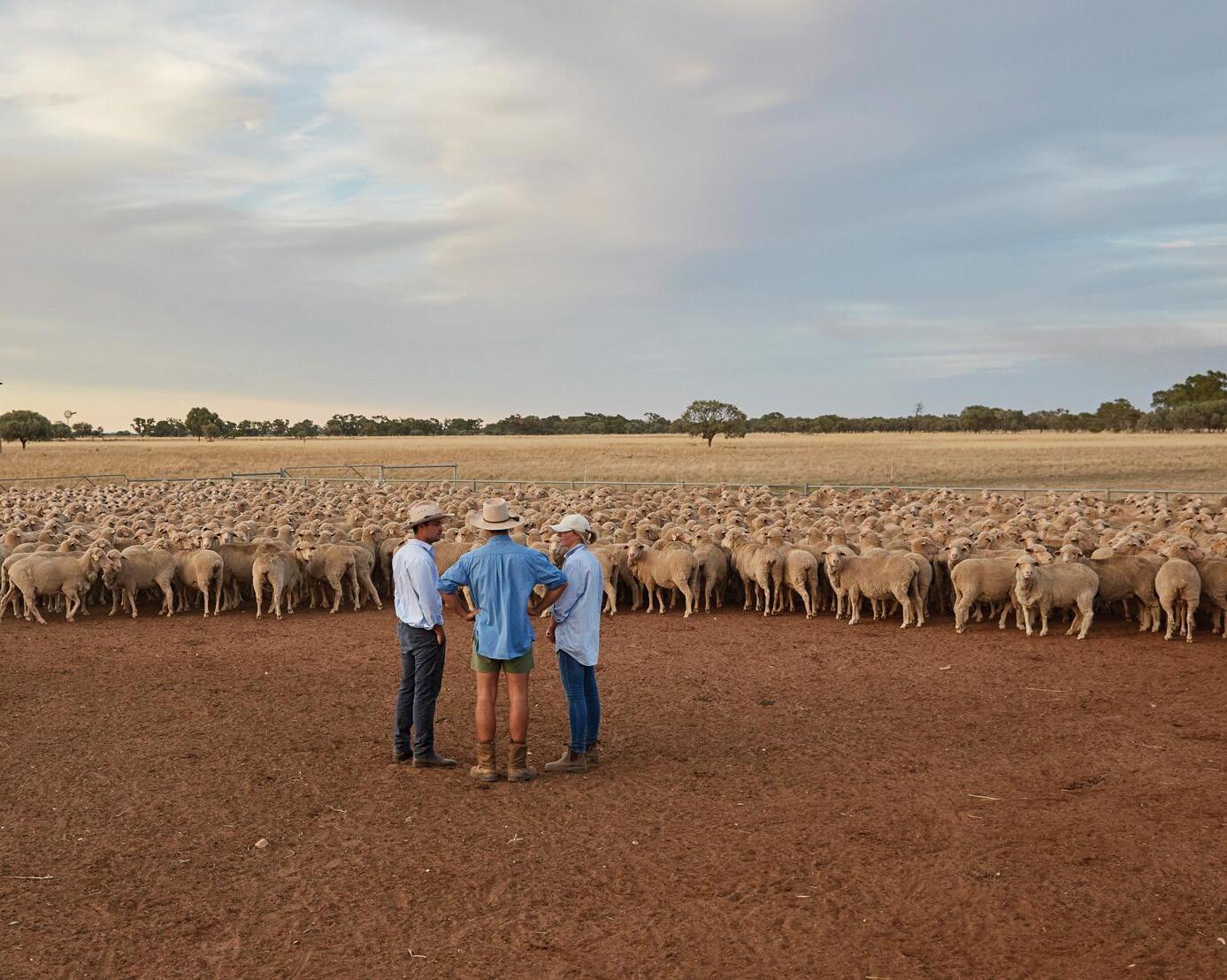
“I absolutely think the modern foundations we have established are a market differentiator that presents us with an ability to go after emerging digital and data business models.
“We are now able to move with speed, bringing new capabilities to our customers. It all comes back to the customer and the innovation we can unlock.”
Elanco, like many large enterprises, has a broad partner ecosystem.
“Our goal is to try to find partners with complimentary purpose and values,” Bull says. “There are some I would call out that have really helped us on this journey.”
“First and foremost, I would recognise WinWire, an organisation that brings a wealth of application and data expertise

“The next exciting phase for Elanco is to unlock innovation for our customers around the world”
MATTHEW BULL CTO AND CISO, ELANCO
to the table. The sheer scale of the work over the past few years is beyond anything I have experienced in my career. There was a huge amount we needed to learn, and frankly, it would've been unrealistic for our teams to succeed within the aggressively defined timelines.
“We brought in WinWire, and they came with the cloud, application and data expertise we needed.
“The uniqueness of that relationship was WinWire engaged as a partner, focused on the Elanco business outcome, which goes above and beyond a traditional clientvendor relationship.
“WinWire's team operated on the ground, as an embedded part of our product and

project teams. They brought specific expertise, right-sized for the job - expertise that Elanco simply didn't have access to at the time.
“They also brought horsepower and an ability to scale up where needed, to drive towards our outcomes and deadlines.”
He says the other piece WinWire brought was helping Elanco implement and buildout the automation stack.
“A big part of our automation stack was the creation of predefined patterns that align with the workloads that we most commonly use across Elanco,” he says. “WinWire completed an application and data dependency exercise to ensure the goal was clearly defined. They then supported the design and delivery of the patterns, treating them as products of their own. Our product and project teams use these patterns as the consistent starting point for all digital/data workloads.”
Another of Elanco’s key partners was HashiCorp, who, Bull says, brought a host of forward-looking, open-source technologies to the table.
“We have positioned HashiCorp Terraform as our infrastructure-as-code software tool, standardising how we design and deliver solutions,” Bull says.
“The advantage of Terraform is that it directly enables our Hybrid Multi-Cloud strategy.
“We believe the future is Hybrid MultiCloud, providing a flexible foundation to meet our regulatory and compliance requirements alongside our innovation expectations.
“The challenge, of course, is how do you support and scale Hybrid Multi-Cloud effectively?

“I see tremendous opportunity in our future with a focus on digital and data capabilities”
“That is where Terraform and the associated HashiCorp technologies, which are predominantly cloud-agnostic, have made a big difference.
“Terraform enables us to programmatically define a set of controls built from our policies, directives and standards. These controls can then be provisioned across different hosting environments as needed.”
“Additionally, we're managing a single codebase for each of the automation patterns.
“It brings the ability to support at scale and the obvious benefit of cost optimisation by only building things once and having a consistent skillset.”
“Last but not least,” says Bull, “by ensuring key quality, privacy and security controls are programmatically defined and proactively enforced, Elanco can easily verify the architecture meets all compliance obligations.”
A standalone Elanco ensures “we are keepers of our own destiny,” says Bull. “The next exciting phase for Elanco is to unlock innovation for our customers around the world.”
“I see tremendous opportunity in our future with a focus on digital and data business models.
“Whether we're looking across pet or farm - both with a unique set of challenges, I think these markets are primed for a digital revolution.
“I'm incredibly excited about Elanco's leadership role within this transformation, and I believe the foundations we've established will act as a competitive advantage for years to come.”



